
© Copyright Netsurion. All Rights Reserved. 1
How-To Guide
Configure Advanced Audit Policy
for Windows
Publication Date:
June 15, 2023

© Copyright Netsurion. All Rights Reserved. 2
Abstract
This document describes audit settings available in Windows Server 2008 onwards and Windows 7
onwards and audit events that they generate.
The security audit policy settings under Security Settings\Advanced Audit Policy Configuration can help
organizations audit compliance with important business-related and security-related rules by tracking
precise defined activities, such as:
• A group administrator has modified settings or data on servers that contain financial information.
• An employee within a defined group has accessed an important file.
• The correct System Access Control List (SACL) is applied to every file and folder or registry key on a
computer or file share as a verifiable safeguard against undetected access.
These settings allow selecting only the behavior, you want to monitor and exclude audit results for
other behaviors. In addition, security audit policies can be applied by using domain group policy, audit
policy settings can be modified, tested, and deployed to selected users and groups.
Scope
The configuration details in this guide are consistent with Netsurion Open XDR 9.4 or later.
Audience
Users and system administrators, who want to deploy the Netsurion Open XDR sensors.

© Copyright Netsurion. All Rights Reserved. 3
Table of Contents
1. Account Logon ........................................................................................................................... 5
1.1 Audit Credential Validation (Enable/Enable) ....................................................................................... 5
1.2 Audit Kerberos Authentication Service ................................................................................................ 5
1.3 Account Logon - Audit Kerberos Service Ticket Operations ................................................................. 6
1.4 Audit Other Account Logon Events ...................................................................................................... 7
2. Account Management ............................................................................................................... 8
2.1 Application Group Management ......................................................................................................... 8
2.2 Computer Account Management ......................................................................................................... 8
2.3 Distribution Group Management ......................................................................................................... 9
2.4 Audit Other Account Management Events ........................................................................................ 10
2.5 Security Group Management ............................................................................................................. 11
2.6 User Account Management ............................................................................................................... 12
3. Detailed Tracking ..................................................................................................................... 13
3.1 DPAPI Activity .................................................................................................................................... 13
3.2 Process Creation ................................................................................................................................ 14
3.3 Process Termination .......................................................................................................................... 14
3.4 RPC Events ......................................................................................................................................... 15
4. DS Access ................................................................................................................................ 15
4.1 Detailed Directory Service Replication............................................................................................... 15
4.2 Directory Service Access .................................................................................................................... 16
4.3 Directory Service Changes ................................................................................................................. 17
4.4 Directory Service Replication ............................................................................................................. 18
5. Logon / Logoff ......................................................................................................................... 18
5.1 Account Lockout ................................................................................................................................ 18
5.2 IPsec Extended Mode ........................................................................................................................ 19
5.3 IPsec Main Mode ............................................................................................................................... 21
5.4 IPsec Quick Mode .............................................................................................................................. 22
5.5 Account Logoff ................................................................................................................................... 22
5.6 Account Logon ................................................................................................................................... 23
5.7 Network Policy Server (NPS) .............................................................................................................. 24
5.8 Other Logon/Logoff Events ................................................................................................................ 25
5.9 Special Logon ..................................................................................................................................... 26

© Copyright Netsurion. All Rights Reserved. 4
6. Object Access .......................................................................................................................... 27
6.1 Application Generated ....................................................................................................................... 27
6.2 Certification Services ......................................................................................................................... 28
6.3 Detailed File Share ............................................................................................................................. 30
6.4 File Share ........................................................................................................................................... 30
6.5 File System ......................................................................................................................................... 31
6.6 Filtering Platform ............................................................................................................................... 32
6.7 Filtering Platform Packet Drop .......................................................................................................... 33
6.8 Handle Manipulation ......................................................................................................................... 34
6.9 Kernel Object ..................................................................................................................................... 35
6.10 Other Object Access Events ............................................................................................................... 35
6.11 Registry .............................................................................................................................................. 37
6.12 SAM - Security Accounts Manager ..................................................................................................... 38
7. Policy Change .......................................................................................................................... 39
7.1 Audit Policy Change ........................................................................................................................... 39
7.2 Authentication Policy Change ............................................................................................................ 40
7.3 Authorization Policy Change .............................................................................................................. 41
7.4 Filtering Platform Policy Change ........................................................................................................ 42
7.5 MPSSVC Rule-Level Policy Change ..................................................................................................... 45
7.6 Other Policy Change Events ............................................................................................................... 46
8. Privilege Use ............................................................................................................................ 47
8.1 Non-Sensitive Privilege Use ............................................................................................................... 48
8.2 Sensitive Privilege Use ....................................................................................................................... 49
8.3 Other Privilege Use Events ................................................................................................................. 50
9. System .................................................................................................................................... 50
9.1 IPSEC Driver ....................................................................................................................................... 50
9.2 Other System Events.......................................................................................................................... 53
9.3 Security State Change ........................................................................................................................ 55
9.4 Security System Extension ................................................................................................................. 56
9.5 Security System Integrity ................................................................................................................... 57
10. Global Object Access Auditing ............................................................................................... 59
10.1 Registry (GOAA) ................................................................................................................................. 59
10.2 File System (GOAA) ............................................................................................................................ 59
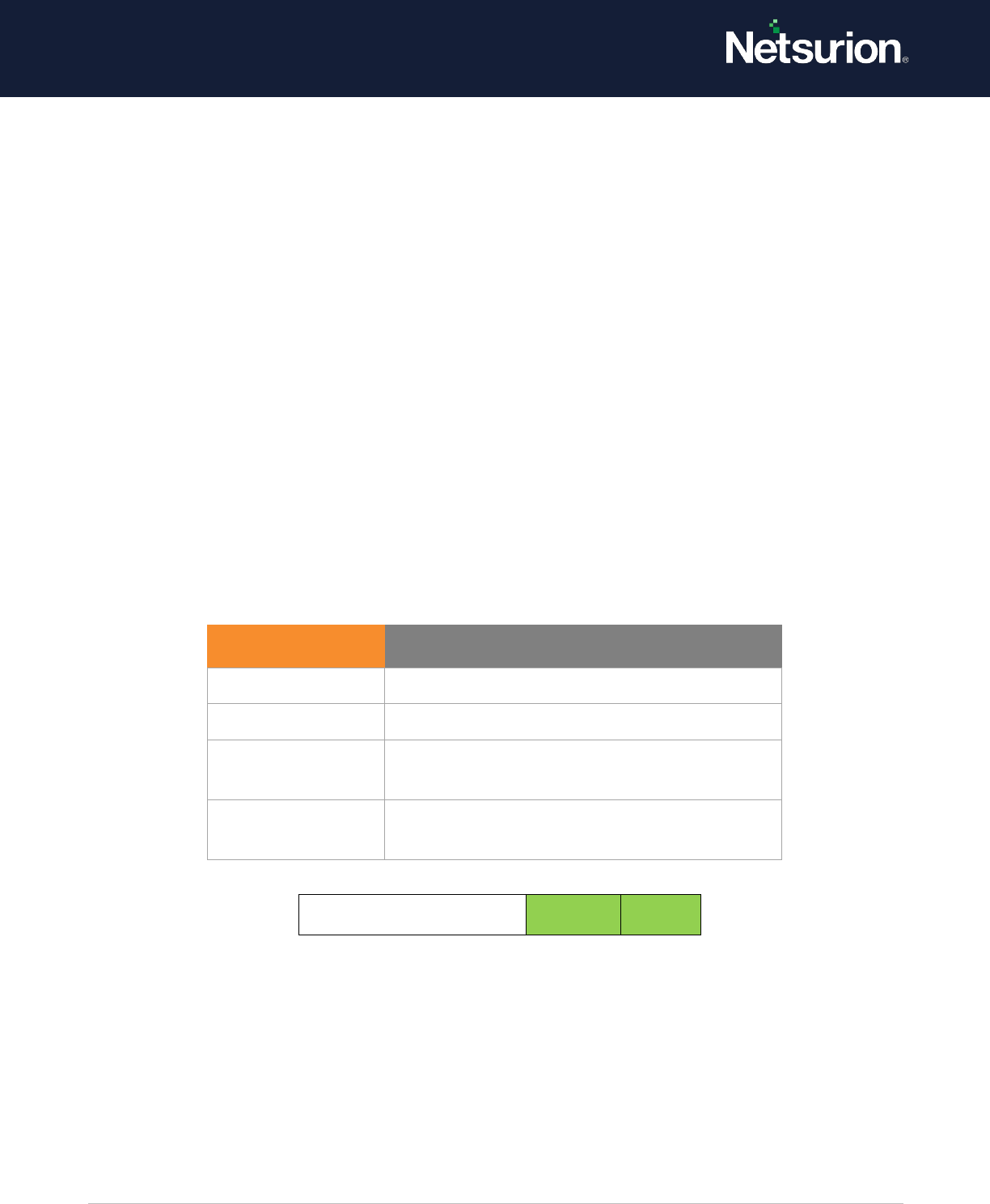
© Copyright Netsurion. All Rights Reserved. 5
1. Account Logon
1.1 Audit Credential Validation (Enable/Enable)
Applies to: Windows Server 2008 onwards and Windows 7 onwards.
This security policy setting determines whether the operating system generates audit events on
credentials submitted for a user account logon request.
These events occur on the computer that is authoritative for the credentials:
• For domain accounts, the domain controller is authoritative.
• For local accounts, the local computer is authoritative.
Event volume: High on domain controllers.
Because domain accounts are used frequently than local accounts in enterprise environments, most of
the account logon events in a domain environment occur on the domain controllers that are
authoritative for the domain accounts. However, these events can occur on any computer, and they
may occur in conjunction with or on separate computers from logon/logoff events.
Default: Not configured.
Credential Validation
Enable
Enable
1.2 Audit Kerberos Authentication Service
Applies to: Windows Server 2008 onwards and Windows 7 onwards.
This security policy setting allows you to generate audit events for Kerberos authentication ticket-
granting ticket (TGT) requests.
If you configure this policy setting, an audit event is generated after a Kerberos authentication TGT
request. Success audits record successful attempts and failure audits record unsuccessful attempts.
Event ID
Event Message
4774
An account was mapped for logon.
4775
An account could not be mapped for logon.
4776
The domain controller attempted to validate
the credentials for an account.
4777
The domain controller failed to validate the
credentials for an account
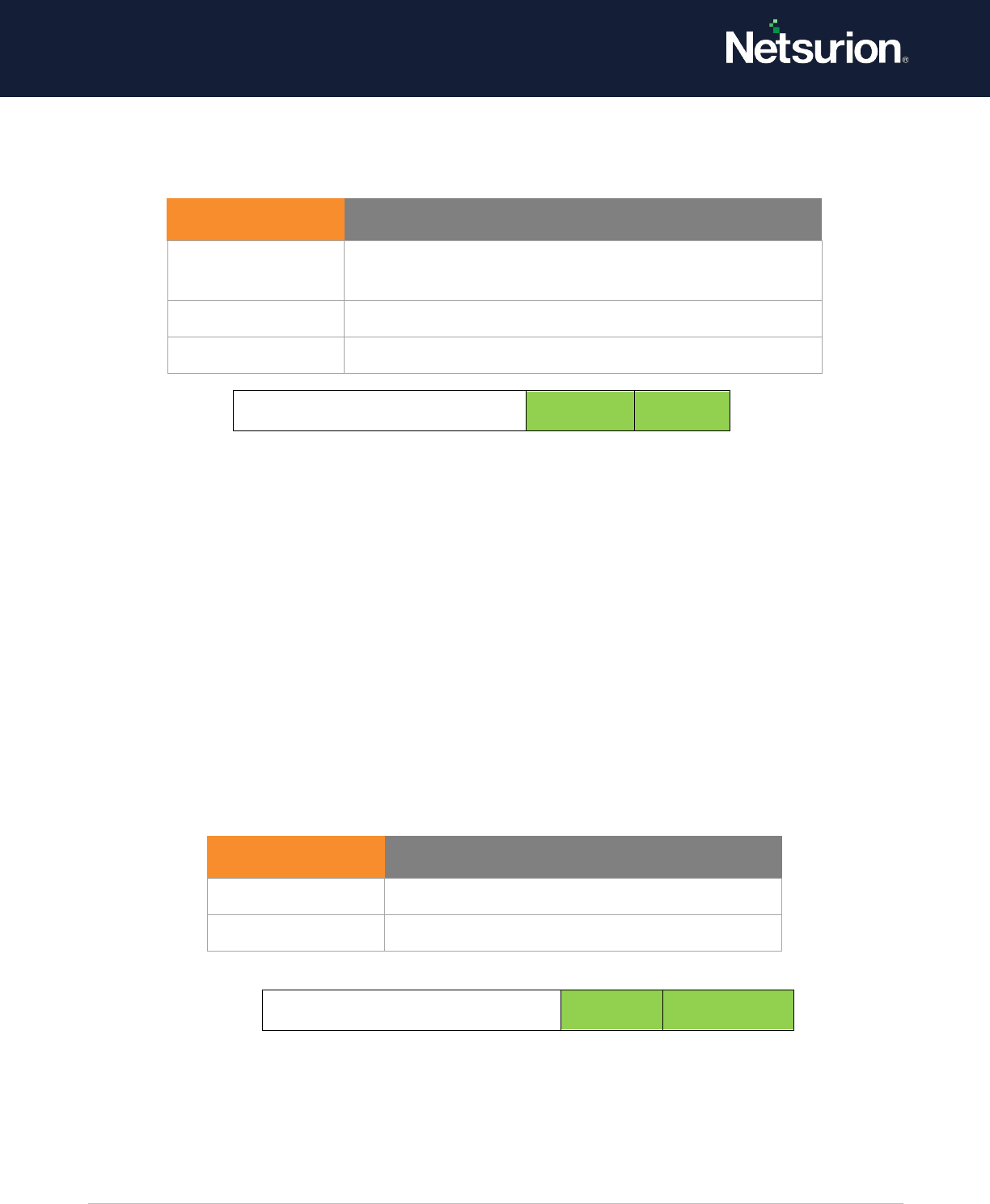
© Copyright Netsurion. All Rights Reserved. 6
Event volume: High on Kerberos Key Distribution Center servers.
Default: Not configured.
Kerberos Authentication Service
Enable
Enable
1.3 Account Logon - Audit Kerberos Service Ticket Operations
Applies to: Windows Server 2008 onwards and Windows 7 onwards.
This security policy setting determines whether the operating system generates security audit events
for Kerberos service ticket requests. Events are generated every time Kerberos is used to authenticate
a user to access a protected network resource.
Kerberos service ticket operation audit events can be used to track user activity.
Event volume:
• High on a domain controller that is a Key Distribution Center (KDC).
• Low on domain members.
Default: Not configured
Kerberos Service Ticket Operations
Enable
Enable
Event ID
Event Message
4768
4768 A Kerberos authentication ticket (TGT) was
requested.
4771
4771 Kerberos pre-authentications failed.
4772
4772 A Kerberos authentication ticket request failed
Event ID
Event Message
4769
A Kerberos service ticket was requested.
4770
A Kerberos service ticket was renewed.
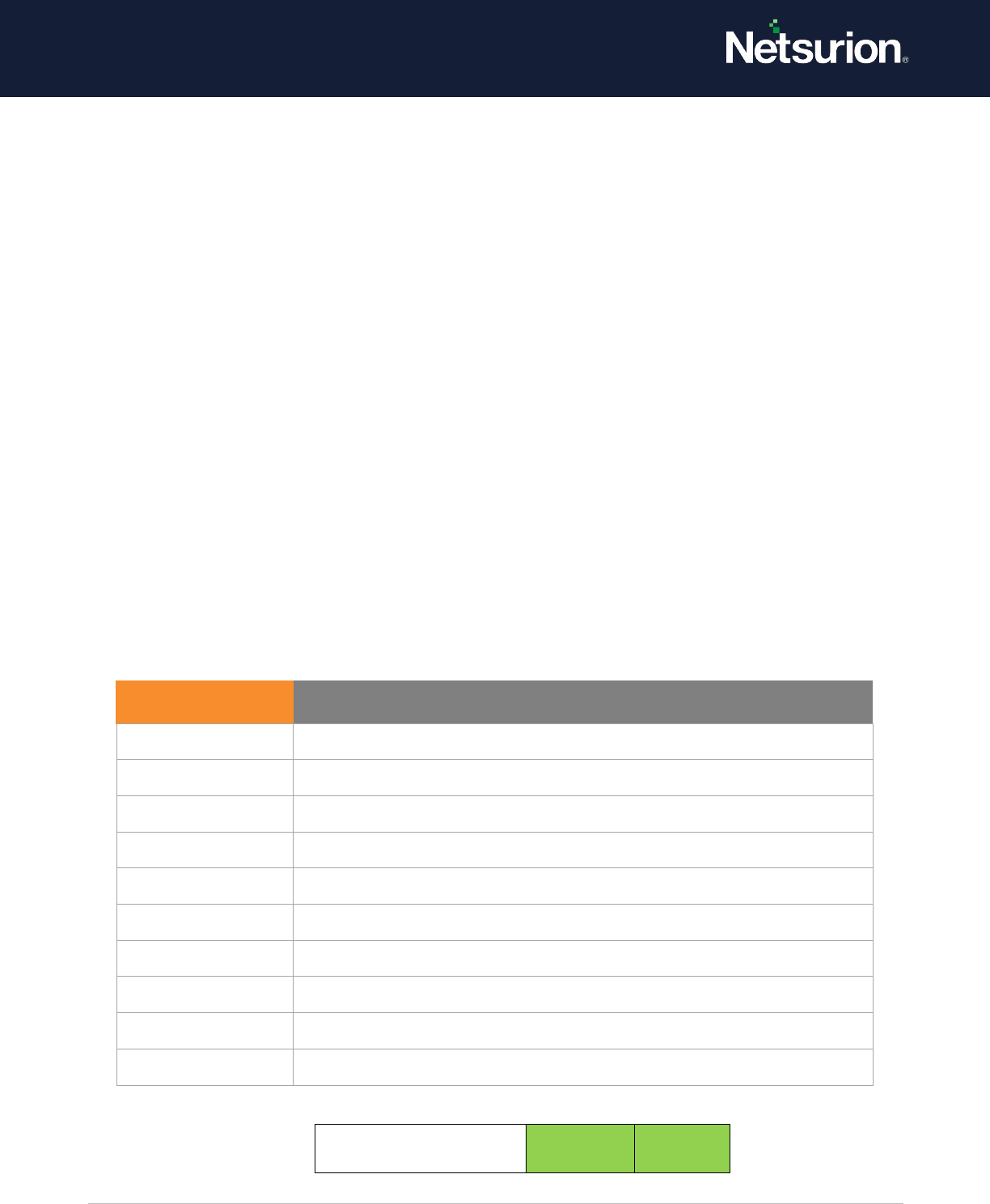
© Copyright Netsurion. All Rights Reserved. 7
1.4 Audit Other Account Logon Events
Applies to: Windows Server 2008 onwards and Windows 7 onwards.
This security policy setting allows to audit events generated by responses to credential requests
submitted for a user account logon that are not credential validation or Kerberos tickets. Examples can
include the following:
• Remote Desktop session disconnections.
• New Remote Desktop sessions.
• Locking and unlocking a workstation.
• Invoking a screen saver.
• Dismissing a screen saver.
• Detection of a Kerberos replay attack, in which a Kerberos request with identical information was
received twice.
NOTE: This condition could be caused by a network misconfiguration.
• Access to a wireless network granted to a user or computer account.
• Access to a wired 802.1x network granted to a user or computer account.
Event volume: Varies, depending on system use.
Default: Not configured.
Other Account Logon
Events
Enable
Enable
Event ID
Event Message
4649
A replay attack was detected.
4778
A session was reconnected to a Window Station.
4779
A session was disconnected from a Window Station.
4800
The workstation was locked.
4801
The workstation was unlocked.
4802
The screen saver was invoked.
4803
The screen saver was dismissed.
5378
The requested credentials delegation was disallowed by policy.
5632
A request was made to authenticate to a wireless network.
5633
A request was made to authenticate to a wired network.
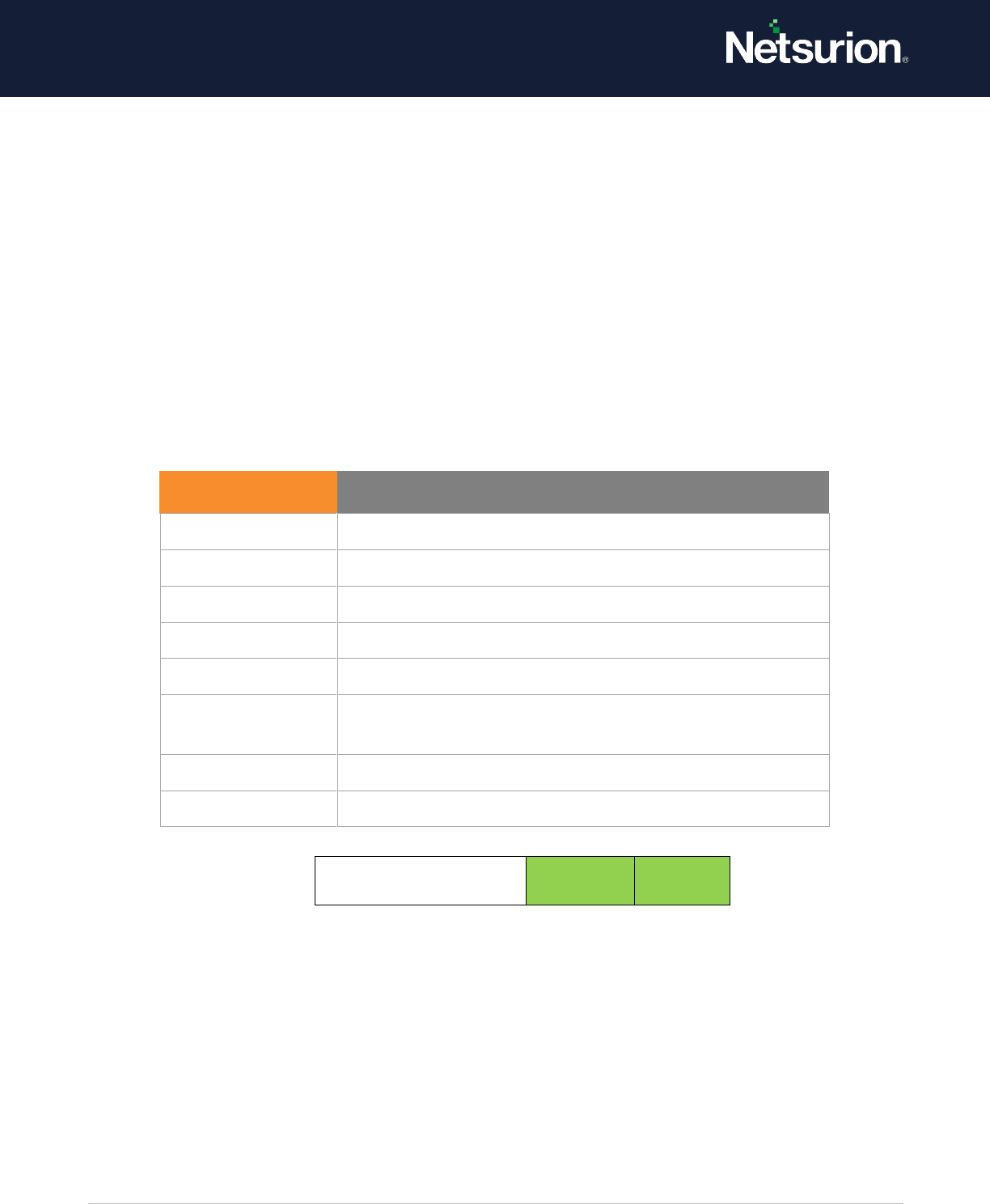
© Copyright Netsurion. All Rights Reserved. 8
2. Account Management
2.1 Application Group Management
Applies to: Windows Server 2008 onwards and Windows 7 onwards.
This security policy setting determines whether the operating system generates audit events when
application group management tasks are performed, such as:
• An application group is created, changed, or deleted.
• A member is added to or removed from an application group.
Event volume: Low.
Default: Not configured.
Application Group
Management
Enable
Enable
2.2 Computer Account Management
Applies to: Windows Server 2008 onwards and Windows 7 onwards.
This security policy setting determines whether the operating system generates audit events when a
computer account is created, changed, or deleted. This policy setting is useful for tracking account-
related changes to computers that are members of a domain.
Event ID
Event Message
4783
A basic application group was created.
4784
A basic application group was changed.
4785
A member was added to a basic application group.
4786
A member was removed from a basic application group.
4787
A non-member was added to a basic application group.
4788
A non-member was removed from a basic application
group.
4789
A basic application group was deleted.
4790
An LDAP query group was created.
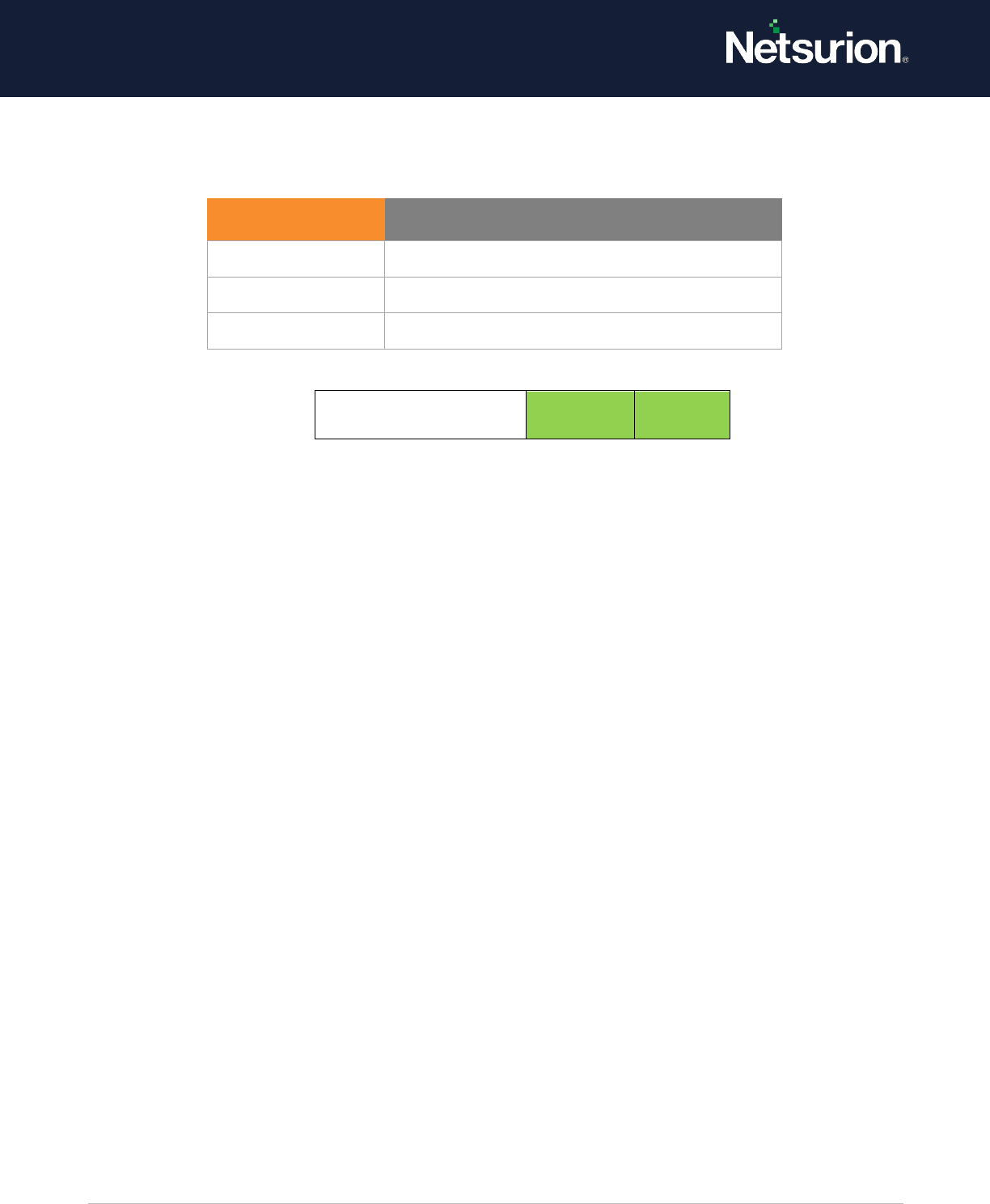
© Copyright Netsurion. All Rights Reserved. 9
Event volume: Low.
Default: Not configured.
Computer Account
Management
Enable
Enable
2.3 Distribution Group Management
Applies to: Windows Server 2008 onwards and Windows 7 onwards.
This security policy setting determines whether the operating system generates audit events for the
following distribution group management tasks:
• A distribution group is created, changed, or deleted.
• A member is added to or removed from a distribution group.
Event volume: Low.
Default: Not configured.
This subcategory is logged only on domain controllers.
Note: Supported Operating Systems : Windows 2008 R2 onwards and Windows 7 onwards
Event ID
Event Message
4741
A computer account was created.
4742
A computer account was changed.
4743
A computer account was deleted
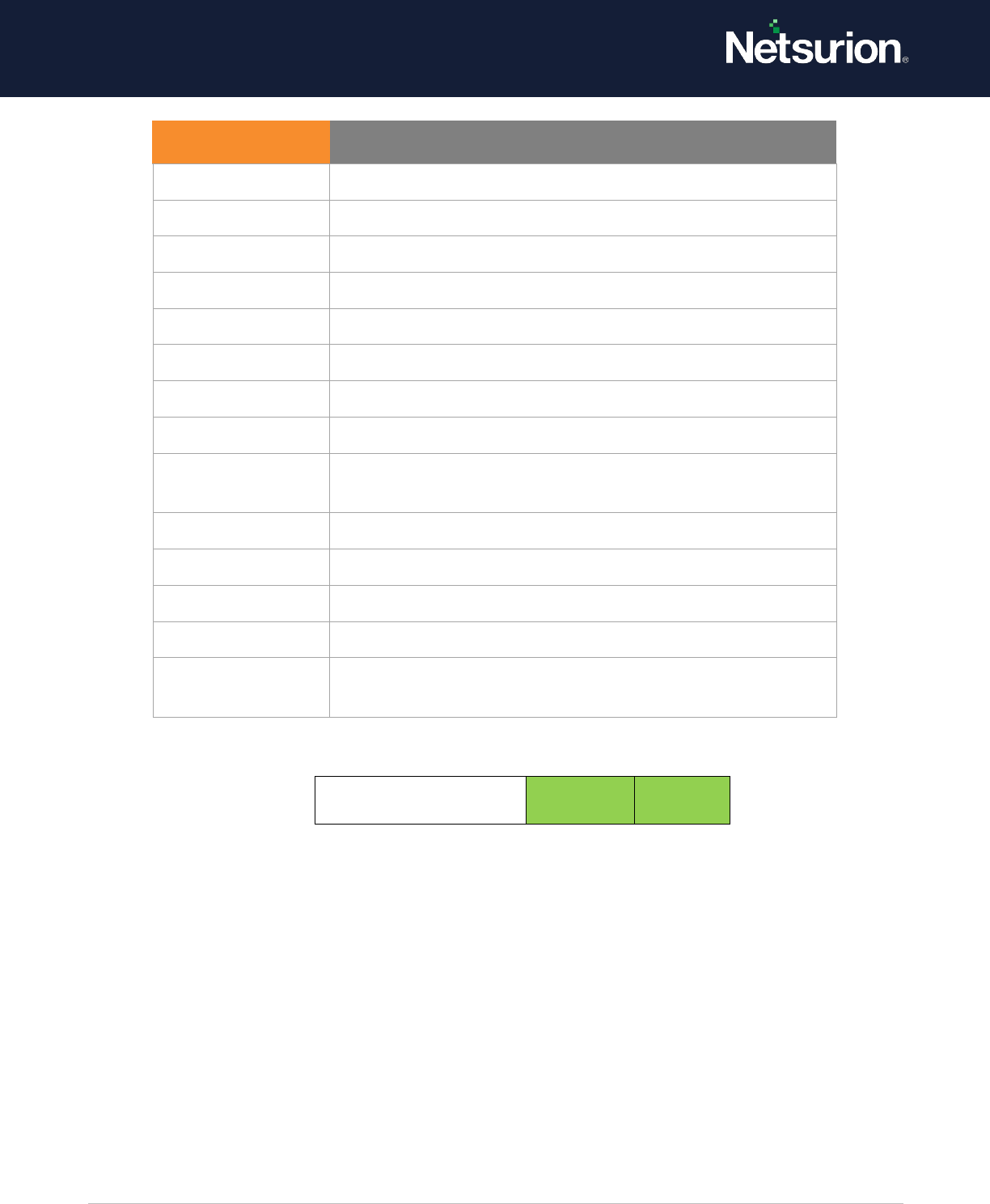
© Copyright Netsurion. All Rights Reserved. 10
Distribution Group
Management
Enable
Enable
2.4 Audit Other Account Management Events
Applies to: Windows Server 2008 onwards and Windows 7 onwards.
This security policy setting determines whether the operating system generates user account
management audit events when:
• The password hash of an account is accessed. This typically happens when the Active Directory
Migration Tool (ADMT) is moving password data.
• The password policy checking Application Programming Interface (API) is called. Calls to this
function could be part of an attack from a malicious application that is testing whether password
complexity policy settings are being applied.
Event ID
Event Message
4744
A security-disabled local group was created.
4745
A security-disabled local group was changed.
4746
A member was added to a security-disabled local group.
4747
A member was removed from a security-disabled local group.
4748
A security-disabled local group was deleted.
4749
A security-disabled global group was created.
4750
A security-disabled global group was changed.
4751
A member was added to a security-disabled global group.
4752
A member was removed from a security-disabled global
group.
4753
A security-disabled global group was deleted.
4759
A security-disabled universal group was created.
4760
A security-disabled universal group was changed.
4761
A member was added to a security-disabled universal group.
4762
A member was removed from a security-disabled universal
group.
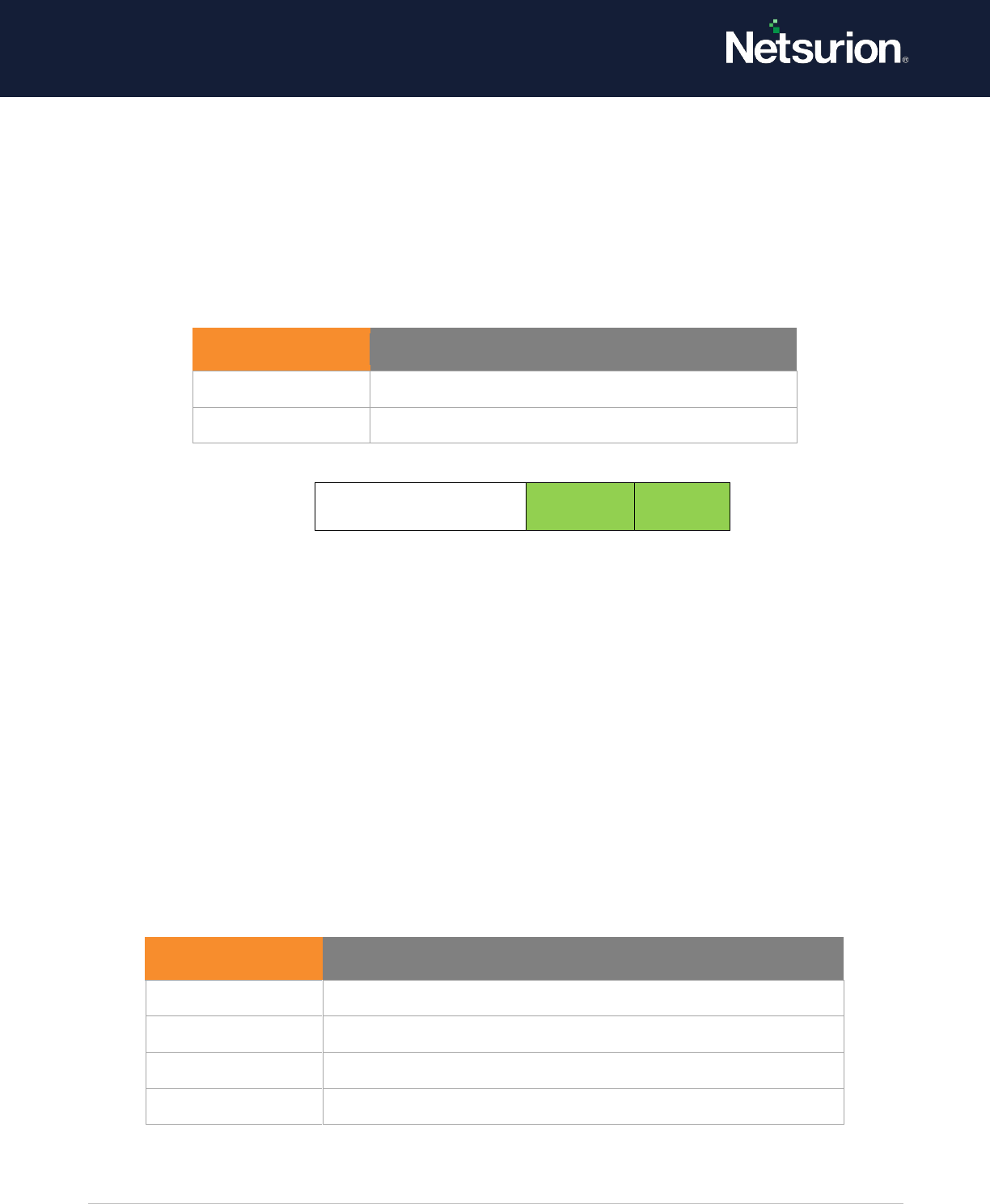
© Copyright Netsurion. All Rights Reserved. 11
• Changes are made to domain policy under Computer Configuration\Windows Settings\Security
Settings\Account Policies\Password Policy or Computer Configuration\Windows
Settings\Security Settings\Account Policies\Account Lockout Policy.
Event volume: Low.
Default: Not configured.
Other Account
Management Events
Enable
Enable
2.5 Security Group Management
Applies to: Windows Server 2008 onwards and Windows 7 onwards.
This security policy setting determines whether the operating system generates audit events when any
of the following security group management tasks are performed:
• A security group is created, changed, or deleted.
• A member is added to or removed from a security group.
• A group's type is changed.
Event volume: Low.
Default: Success.
Event ID
Event Message
4782
The password hash for an account was accessed.
4793
The Password Policy Checking API was called
Event ID
Event Message
4727
4727 A security-enabled global group was created.
4728
4728 A member was added to a security-enabled global group.
4729
A member was removed from a security-enabled global group.
4730
A security-enabled global group was deleted.
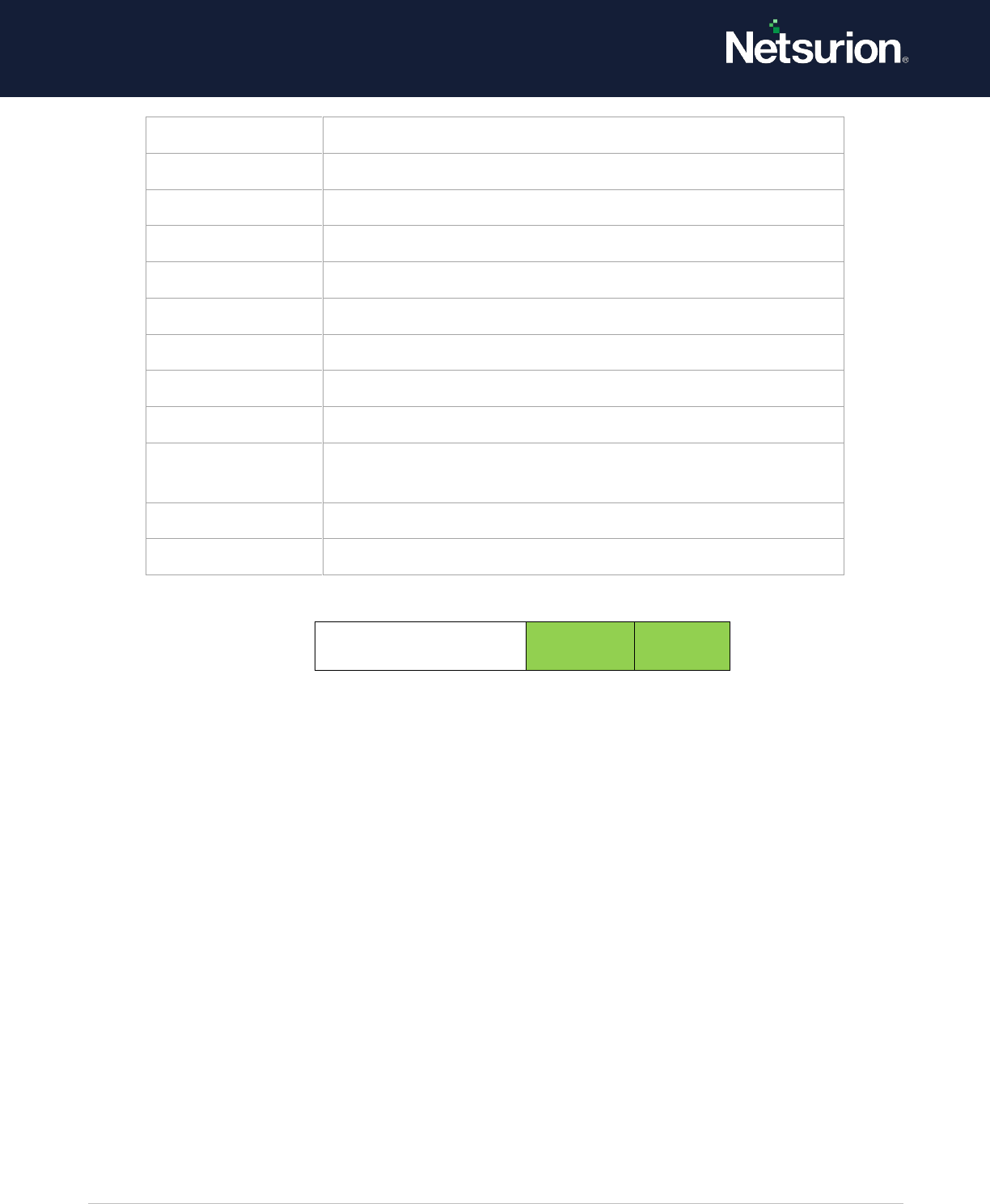
© Copyright Netsurion. All Rights Reserved. 12
Security Group
Management
Enable
Enable
2.6 User Account Management
Applies to: Windows Server 2008 onwards and Windows 7 onwards.
This security policy setting determines whether the operating system generates audit events when the
following user account management tasks are performed:
• A user account is created, changed, deleted, renamed, disabled, enabled, locked out, or
unlocked.
• A user account password is set or changed.
• Security identifier (SID) history is added to a user account.
• The Directory Services Restore Mode password is set.
• Permissions on accounts that are members of the administrator’s groups are changed.
• Credential Manager credentials are backed up or restored.
This policy setting is essential for tracking events that involve provisioning and managing user
accounts.
Event volume: Low.
4731
4731 A security-enabled local group was created.
4732.
4732 A member was added to a security-enabled local group.
4733
A member was removed from a security-enabled local group.
4734
A security-enabled local group was deleted.
4735
A security-enabled local group was changed.
4737
A security-enabled global group was changed.
4754
A security-enabled universal group was created.
4755
A security-enabled universal group was changed.
4756
A member was added to a security-enabled universal group.
4757
A member was removed from a security-enabled universal
group.
4758
A security-enabled universal group was deleted.
4764
A group's type was changed.
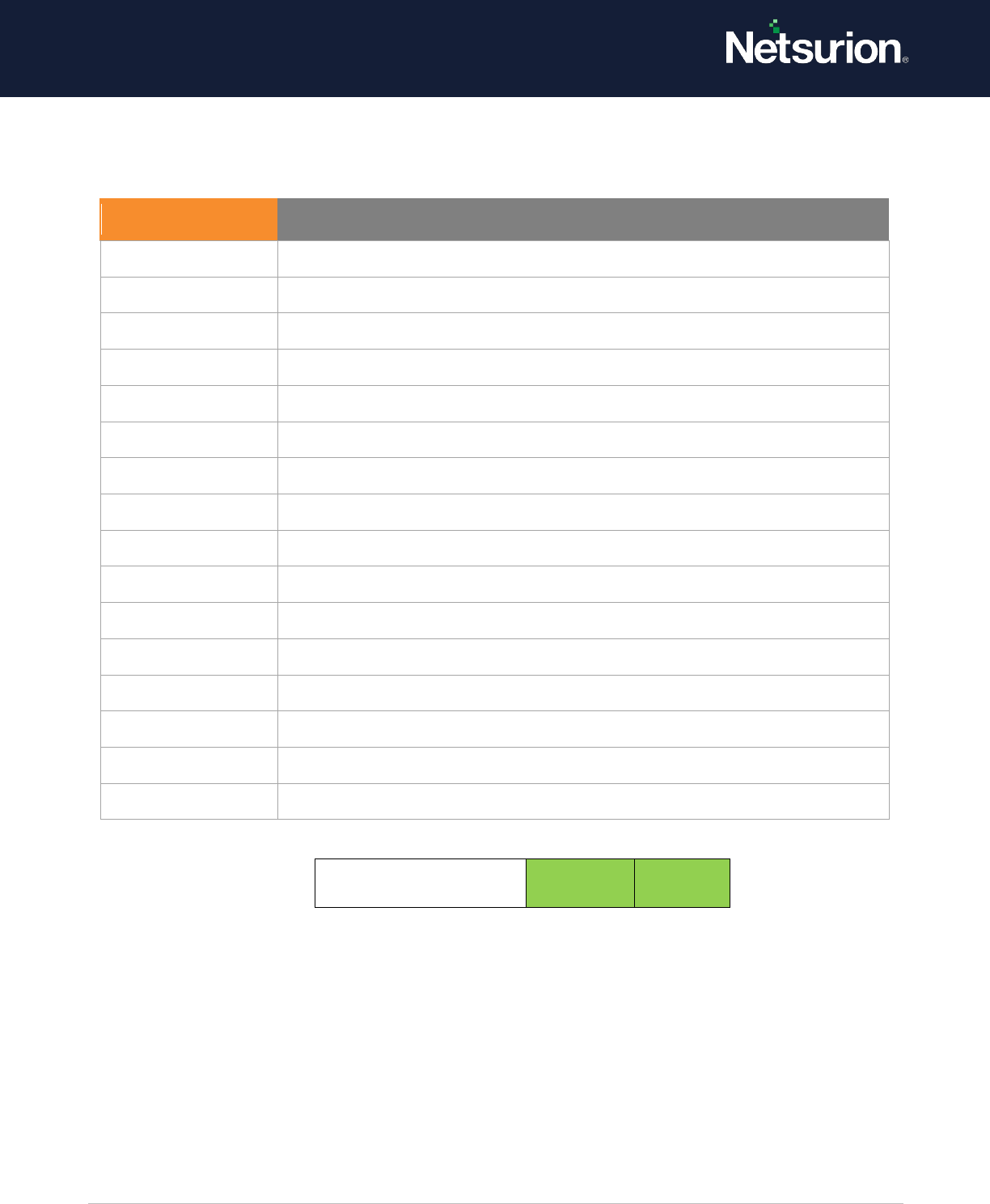
© Copyright Netsurion. All Rights Reserved. 13
Default: Success.
User Account
Management
Enable
Enable
3. Detailed Tracking
3.1 DPAPI Activity
Applies to: Windows Server 2008 onwards and Windows 7 onwards.
This security policy setting determines whether the operating system generates audit events when
encryption or decryption calls are made into the Data Protection Application Interface (DPAPI), which is
used to protect secret information such as stored passwords and key information.
Event volume: Low
Event ID
Event Message
4720
A user account was created.
4722
A user account was enabled.
4723
An attempt was made to change an account's password.
4724
An attempt was made to reset an account's password.
4725
A user account was disabled.
4726
A user account was deleted.
4738
A user account was changed.
4740
A user account was locked out.
4765
SID History was added to an account.
4766
An attempt to add SID History to an account failed.
4767
A user account was unlocked.
4780
The ACL was set on accounts which are members of administrator groups.
4781
The name of an account was changed
4794
An attempt was made to set the Directory Services Restore Mode.
5376
Credential Manager credentials were backed up
5377
Credential Manager credentials were restored from a backup
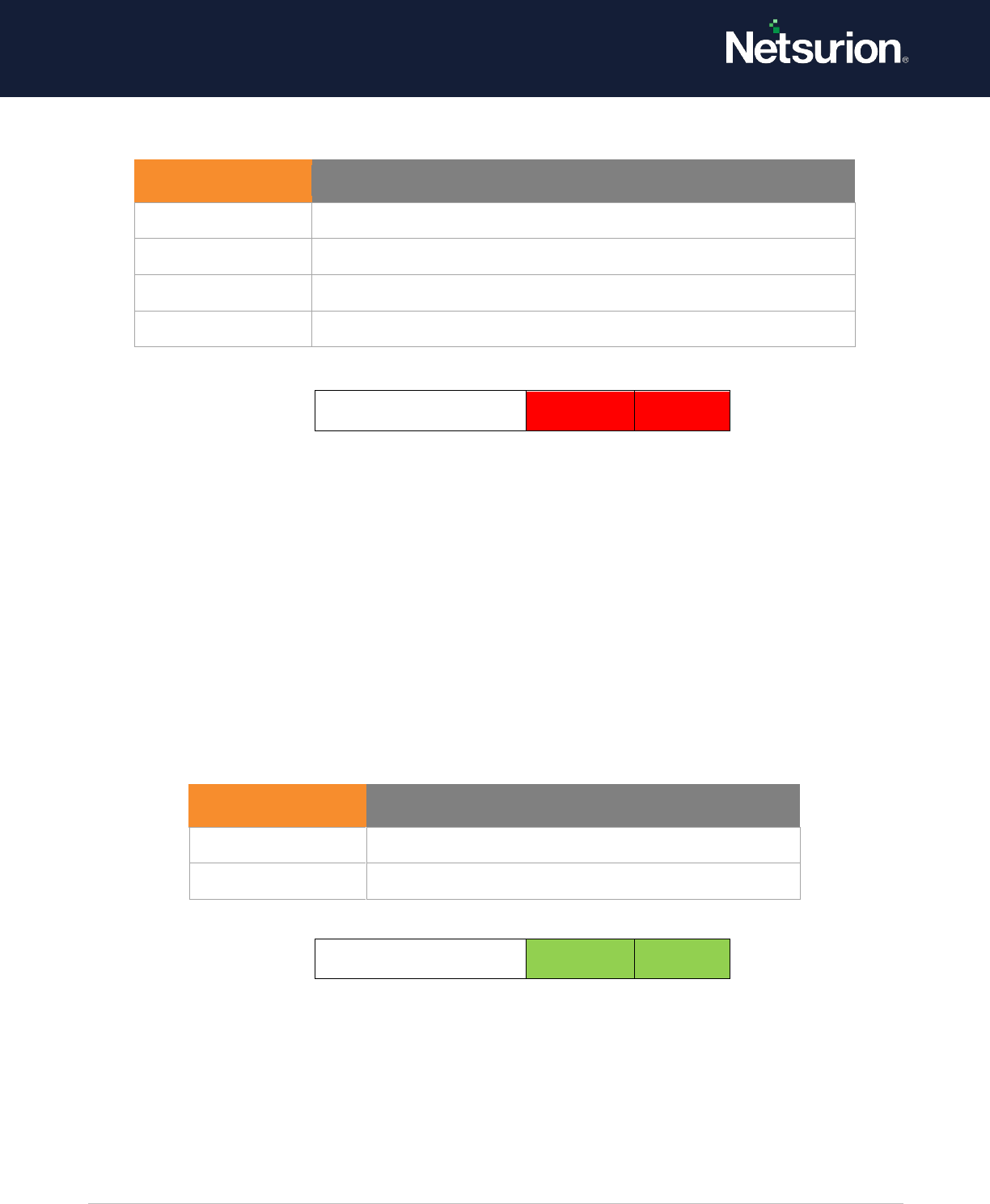
© Copyright Netsurion. All Rights Reserved. 14
Default: Not configured
DPAPI Activity
Disable
Disable
3.2 Process Creation
Applies to: Windows Server 2008 onwards and Windows 7 onwards.
This security policy setting determines whether the operating system generates audit events when a
process is created (starts) and the name of the program or user that created it.
These audit events can help you understand how a computer is being used and to track user activity.
Event volume: Low – Medium (Varies on System Usage)
Default: Not configured.
Process Creation
Enable
Enable
3.3 Process Termination
Applies to: Windows Server 2008 onwards and Windows 7 onwards.
This security policy setting allows generating audit events when an attempt is made to end a process.
Success audits record successful attempts and Failure audits record unsuccessful attempts.
Event ID
Event Message
4692
Backup of data protection master key was attempted.
4693
The recovery of the data protection master key was attempted.
4694
The protection of auditable protected data was attempted.
4695
Unprotection of auditable protected data was attempted.
Event ID
Event Message
4688
A new process has been created.
4696
A primary token was assigned to a process.
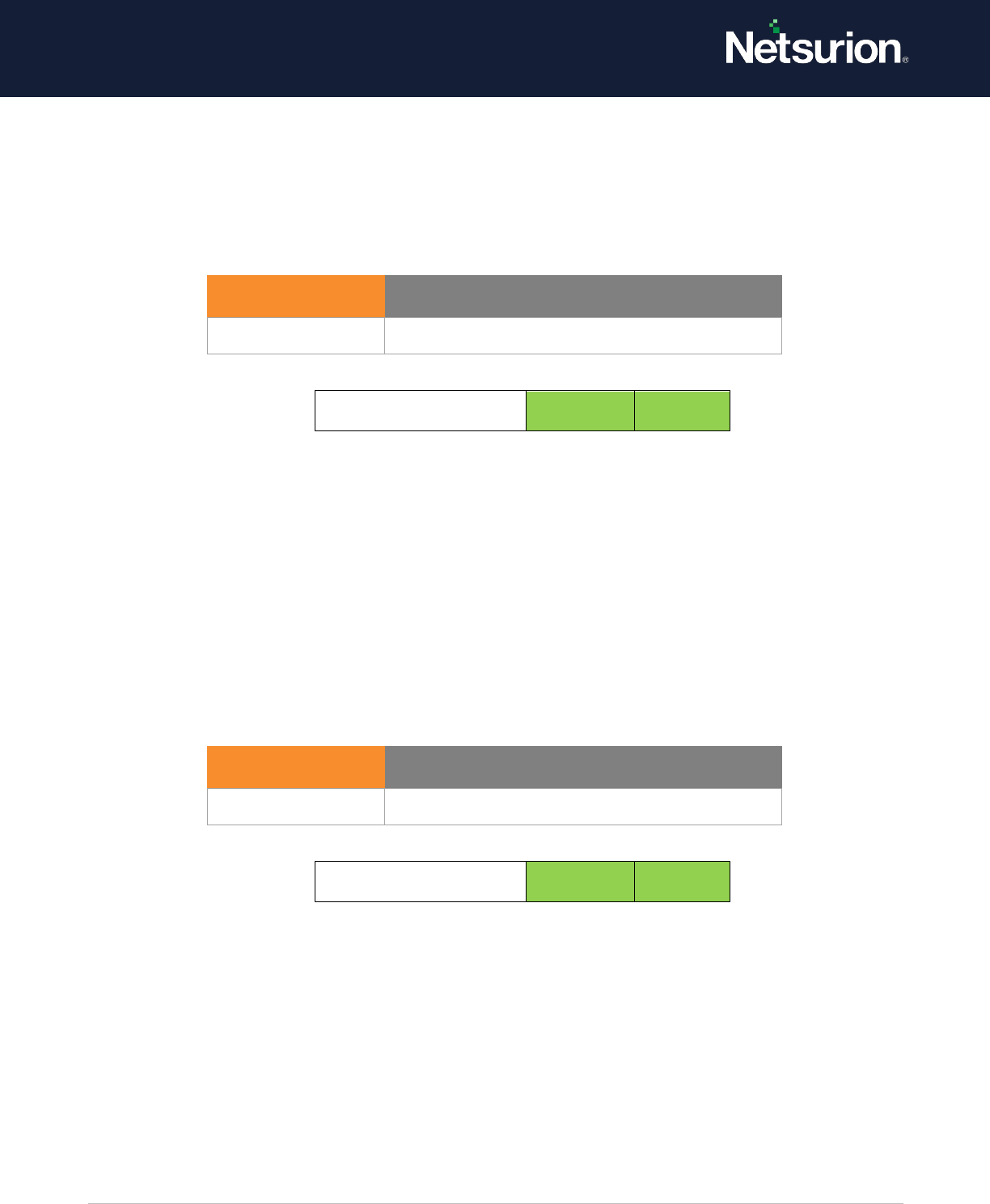
© Copyright Netsurion. All Rights Reserved. 15
If you do not configure this policy setting, no audit event is generated when a process ends.
These audit events can help you understand how a computer is being used and to track user activity.
Event volume: Low – Medium (Varies on System Usage)
Default: Not configured.
Process Termination
Enable
Enable
3.4 RPC Events
Applies to: Windows Server 2008 onwards and Windows 7 onwards.
This security policy setting determines whether the operating system generates audit events when
Inbound Remote Procedure Call (RPC) connections are made.
Event volume: High on RPC Servers.
Default: Not configured.
RPC Events
Enable
Enable
4. DS Access
DS Access security audit policy settings provide a detailed audit trail of attempts to access and modify
objects in Active Directory Domain Services (AD DS). These audit events are logged only on domain
controllers.
4.1 Detailed Directory Service Replication.
Applies to: Windows Server 2008 onwards and Windows 7 onwards.
Event ID
Event Message
4689
A process has exited
Event ID
Event Message
5712
A Remote Procedure Call (RPC) was attempted.
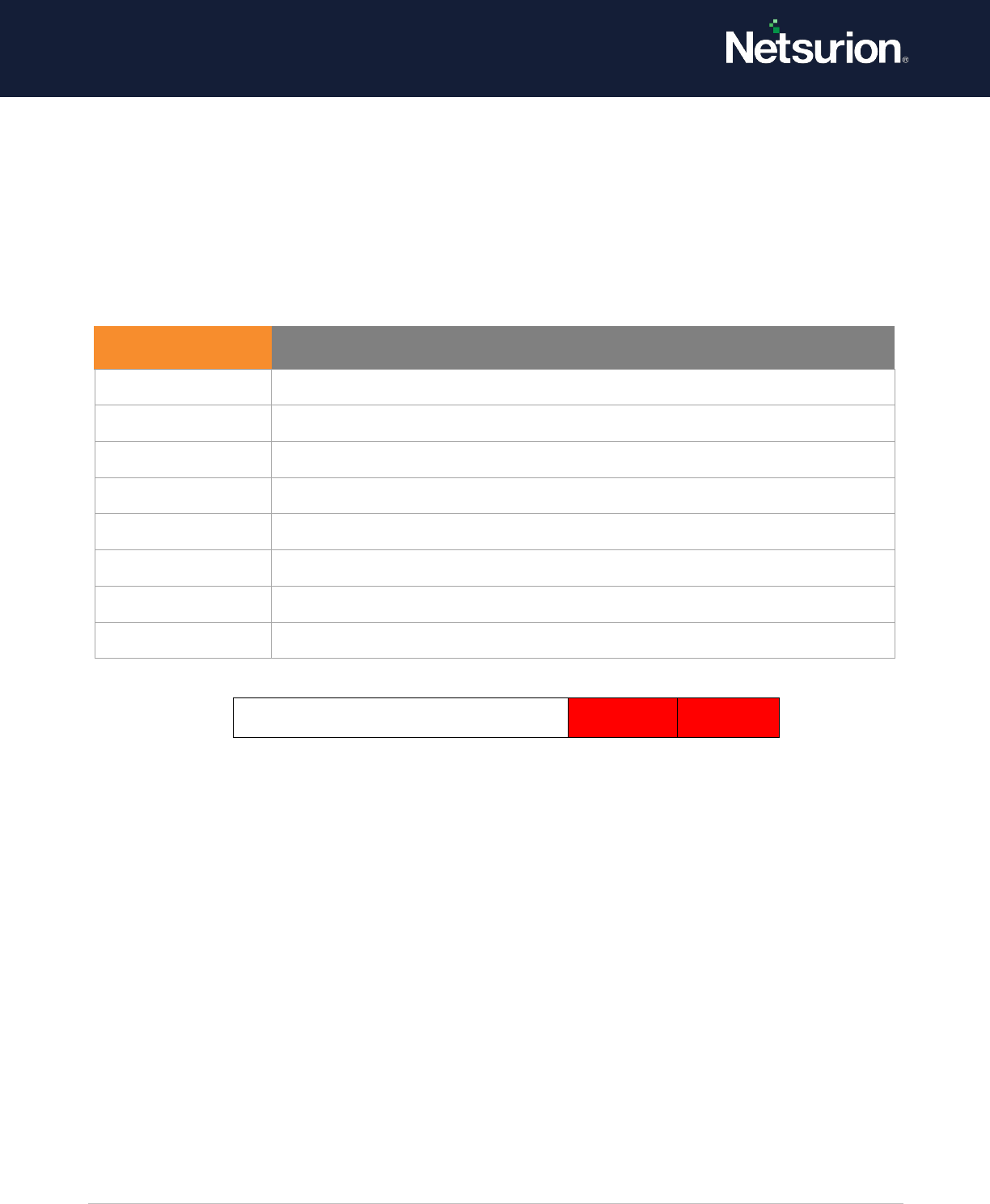
© Copyright Netsurion. All Rights Reserved. 16
This security policy setting can be used to generate security audit events with detailed tracking
information about the data that is replicated between domain controllers. This audit subcategory can
be useful to diagnose replication issues.
Event volume: Very High.
Default: Not configured.
Detailed Directory Service Replication
Disable
Disable
4.2 Directory Service Access
Applies to: Windows Server 2008 onwards and Windows 7 onwards.
This security policy setting determines whether the operating system generates events when an Active
Directory Domain Services (AD DS) object is accessed.
NOTE: Audit events will only be generated on objects with configured system access control lists
(SACLs), and only when they are accessed in a manner that matches the SACL settings.
These events are like the Directory Service Access events in previous versions of Windows Server
operating systems.
Event volume: High on servers running AD DS role services; none on client computers.
Default: Not configured.
Event ID
Event Message
4928
An Active Directory replica source naming context was established.
4929
An Active Directory replica source naming context was removed.
4930
An Active Directory replica source naming context was modified.
4931
An Active Directory replica destination naming context was modified.
4934
Attributes of an Active Directory object were replicated.
4935
Replication failure begins.
4936
Replication failure ends.
4937
A lingering object was removed from a replica.
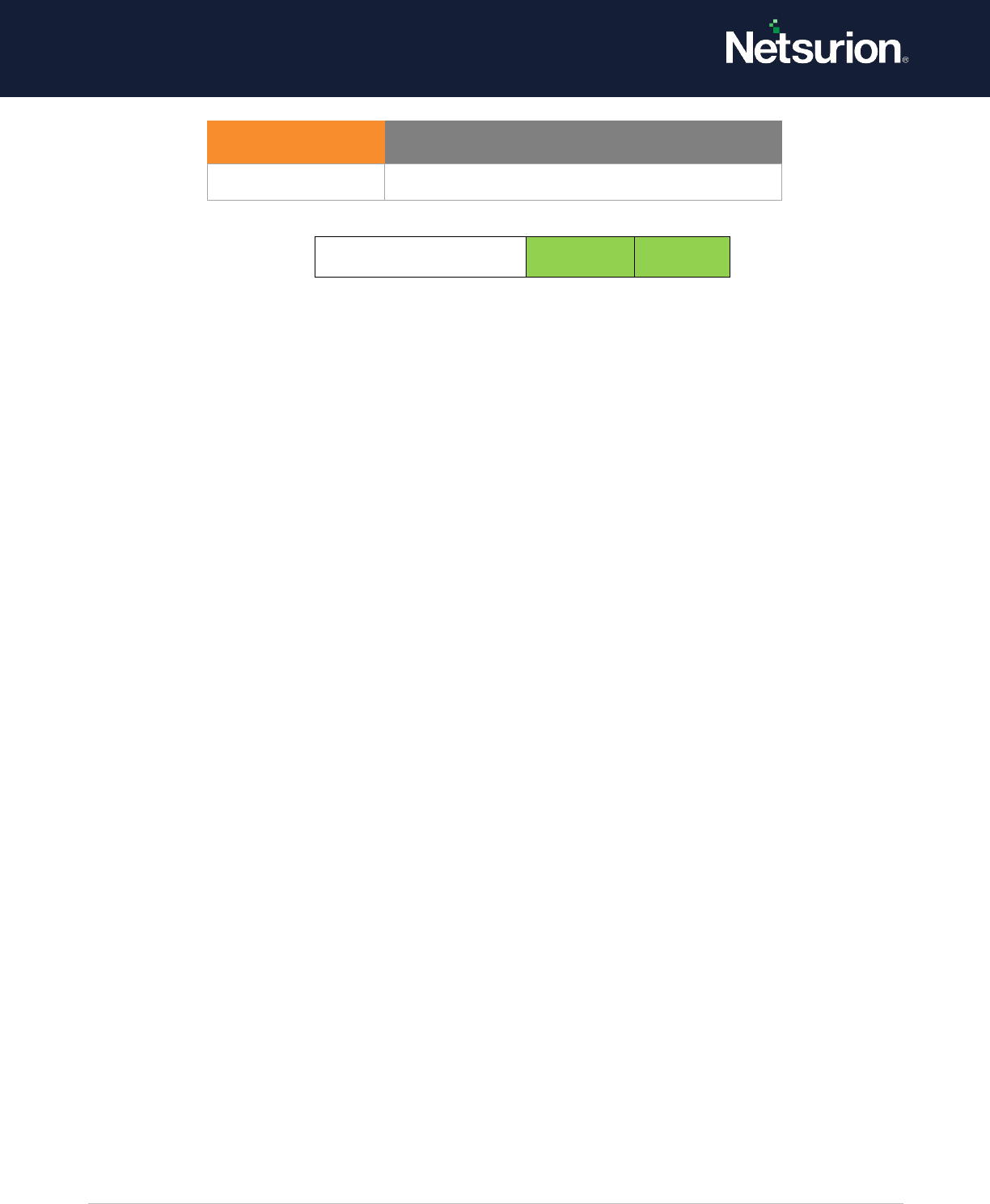
© Copyright Netsurion. All Rights Reserved. 17
Directory Service Access
Enable
Enable
4.3 Directory Service Changes
Applies to: Windows Server 2008 onwards and Windows 7 onwards.
This security policy setting determines whether the operating system generates audit events when
changes are made to objects in Active Directory Domain Services (AD DS). The type of changes that are
reported are:
• Create
• Delete
• Modify
• Move
• Undelete
Directory Service Changes auditing, where appropriate, indicates the old and new values of changed
properties of the objects that were changed.
NOTE:
Audit events are generated only for objects with configured System Access Control Lists (SACLs), and
only when they are accessed in a manner that matches their SACL settings. Some objects and
properties do not cause an audit to be generated due to settings on the object class in the schema.
This subcategory only logs events on domain controllers. Changes to Active Directory objects are
important events to track and understand the state of the network policy.
Event volume: High (DC’s); No Events on clients.
Default: Not configured.
Event ID
Event Message
4662
An operation was performed on an object.
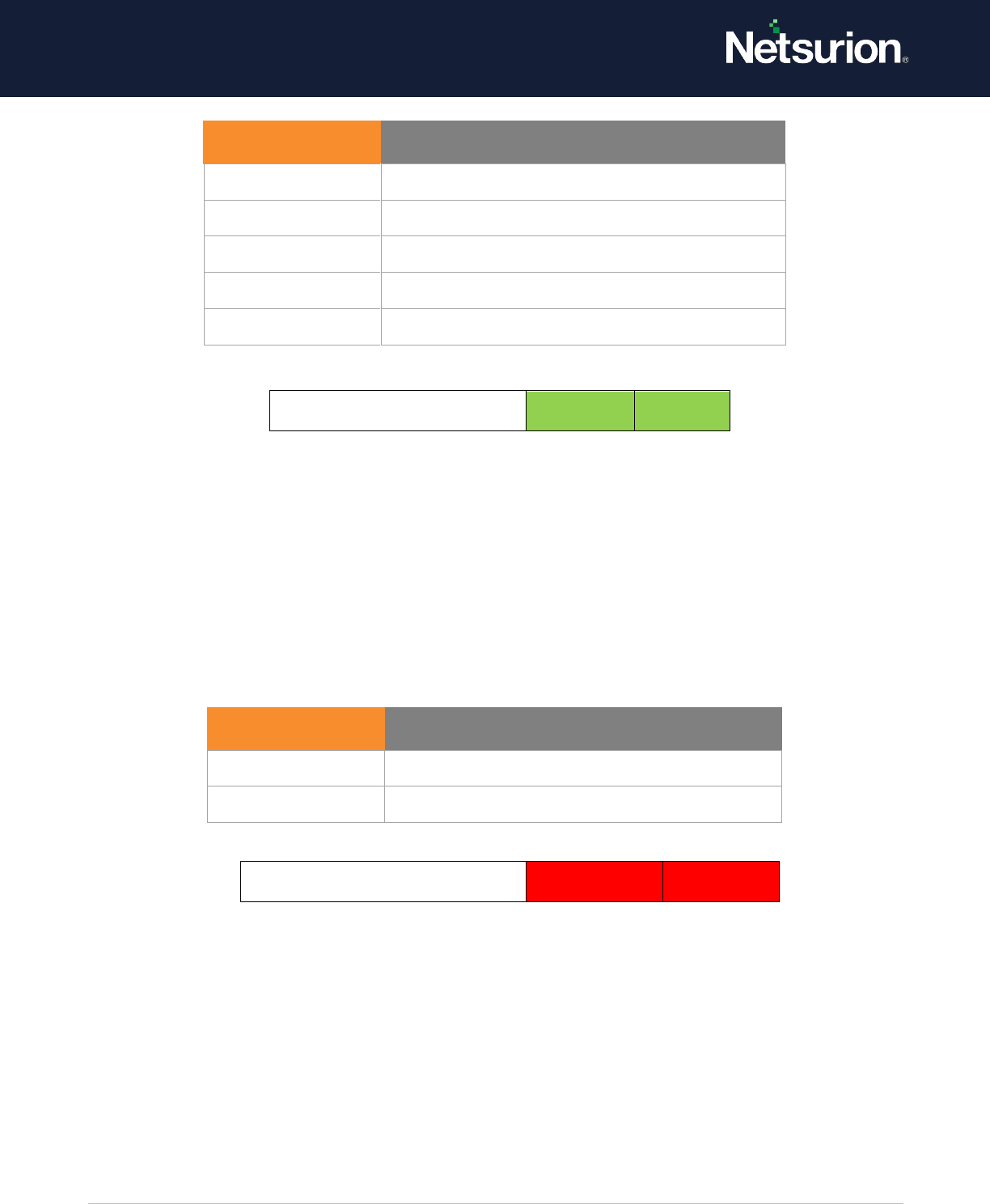
© Copyright Netsurion. All Rights Reserved. 18
Directory Service Changes
Enable
Enable
4.4 Directory Service Replication
Applies to: Windows Server 2008 onwards and Windows 7 onwards.
This security policy setting determines whether the operating system generates audit events when
replication between two domain controllers begins and ends.
Event volume: Medium (DC’s); No Events on clients.
Default: Not configured.
Directory Service Replication
Disable
Disable
5. Logon / Logoff
Logon/Logoff security policy settings and audit events allow you to track attempts to log on to a
computer interactively or over a network. These events are particularly useful for tracking user activity
and identifying potential attacks on network resources.
5.1 Account Lockout
Applies to: Windows Server 2008 onwards and Windows 7 onwards.
Event ID
Event Message
5136
A directory service object was modified.
5137
A directory service object was created.
5138
A directory service object was undeleted.
5139
A directory service object was moved.
5141
A directory service object was deleted.
Event ID
Event Message
5136
A directory service object was modified.
5137
A directory service object was created.
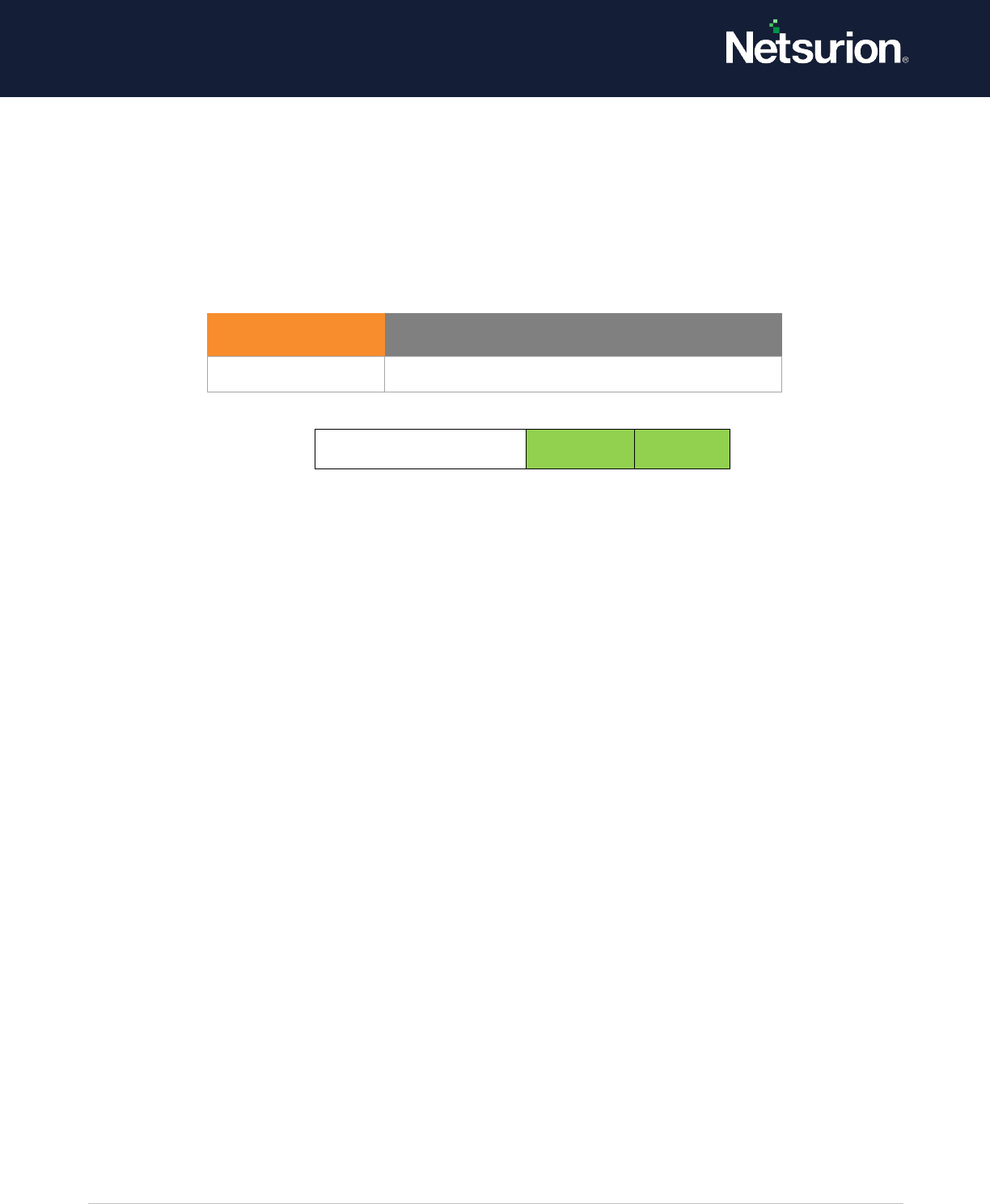
© Copyright Netsurion. All Rights Reserved. 19
This security policy setting allows you to audit security events generated by a failed attempt to log on
to an account that is locked out.
If you configure this policy setting, an audit event is generated when an account cannot log on to a
computer because the account is locked out. Success audits record successful attempts and failure
audits record unsuccessful attempts.
Account lockout events are essential for understanding user activity and detecting potential attacks.
Account lockout
Enable
Enable
5.2 IPsec Extended Mode
Applies to: Windows Server 2008 onwards and Windows 7 onwards.
This security policy setting determines whether the operating system generates audit events for the
results of the Internet Key Exchange (IKE) protocol and Authenticated Internet Protocol (AuthIP) during
Extended Mode negotiations.
Event volume: High
Default: Not configured.
Event ID
Event Message
4625
An account failed to logon.
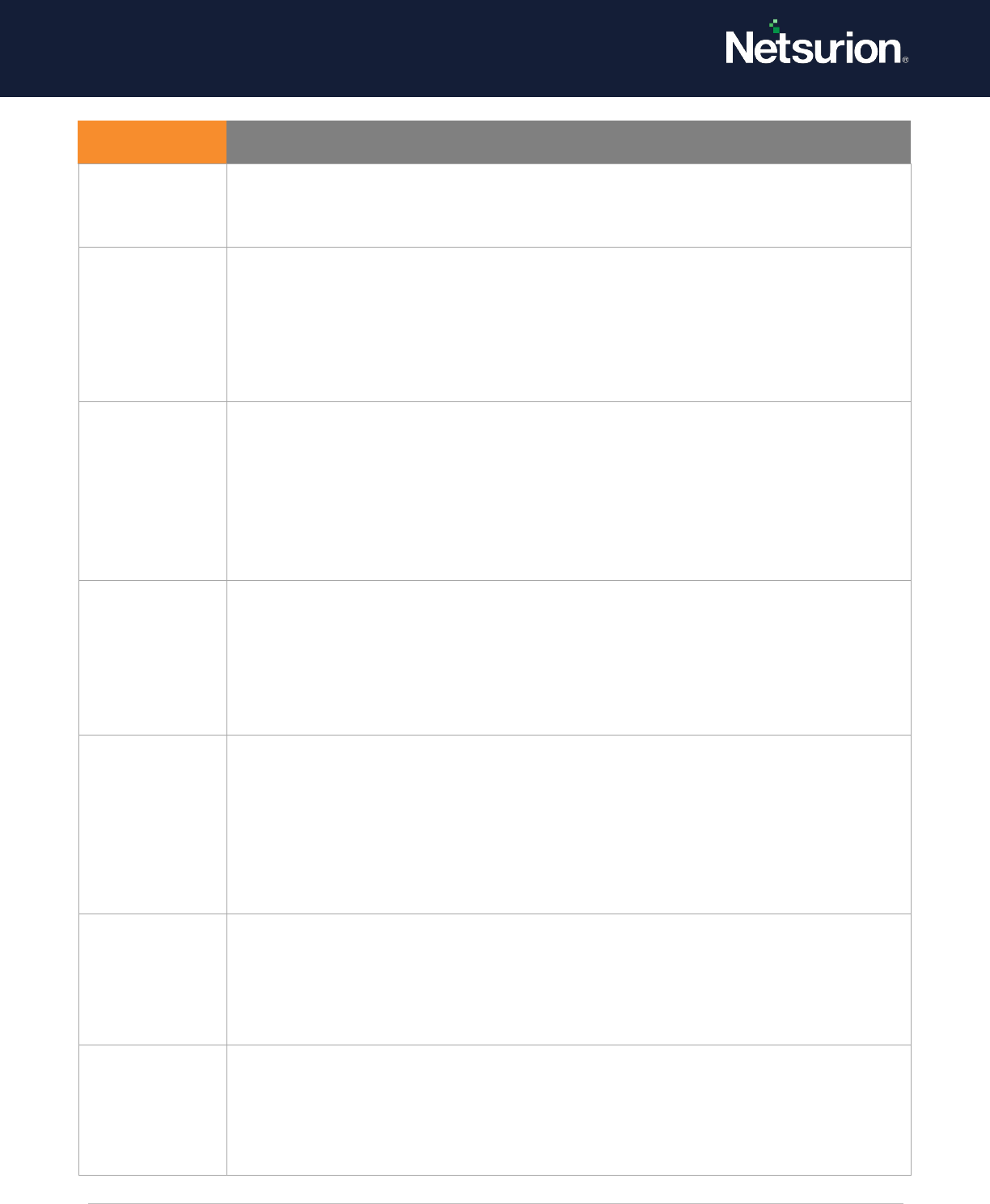
© Copyright Netsurion. All Rights Reserved. 20
Event ID
Event Message
4978
During the Extended Mode negotiation, IPsec received an invalid negotiation
packet. If this problem persists, it could indicate a network issue or an attempt to
modify or replay this negotiation.
4979
IPsec Main Mode and Extended Mode security associations were established.
This event provides event data in the following categories: Main Mode Local
Endpoint, Main Mode Remote Endpoint, Main Mode Cryptographic Information,
Main Mode Security Association, Main Mode Additional Information, and Extended
Mode Information.
4980
IPsec Main Mode and Extended Mode security associations were established.
This event provides event data in the following categories: Main Mode Local
Endpoint, Main Mode Remote Endpoint, Main Mode Cryptographic Information,
Main Mode Security Association, Main Mode Additional Information, and Extended
Mode Local Endpoint, Extended Remote Endpoint, and Extended Mode Additional
Information.
4981
IPsec Main Mode and Extended Mode security associations were established.
This event provided event audit data in the following categories: Local Endpoint
Local Certificate, Remote Endpoint, Remote Certificate, Cryptographic Information,
Security Association Information, Additional Information, and Extended Mode
Information.
4982
IPsec Main Mode and Extended Mode security associations were established.
This event provided event audit data in the following categories: Local Endpoint
Local Certificate, Remote Endpoint, Remote Certificate, Cryptographic Information,
Security Association Information, Additional Information, and Extended Mode Local
Endpoint, Extended Mode Remote Endpoint, and Extended Mode Additional
Information.
4983
An IPsec Extended Mode negotiation failed. The corresponding Main Mode security
association has been deleted.
This event provided event audit data in the following categories: Local Endpoint
Local Certificate, Remote Endpoint, Remote Certificate, and Failure Information.
4984
An IPsec Extended Mode negotiation failed. The corresponding Main Mode security
association has been deleted.
This event provided event audit data in the following categories: Local Endpoint
Local Certificate, Remote Endpoint, Additional Information, and Failure Information
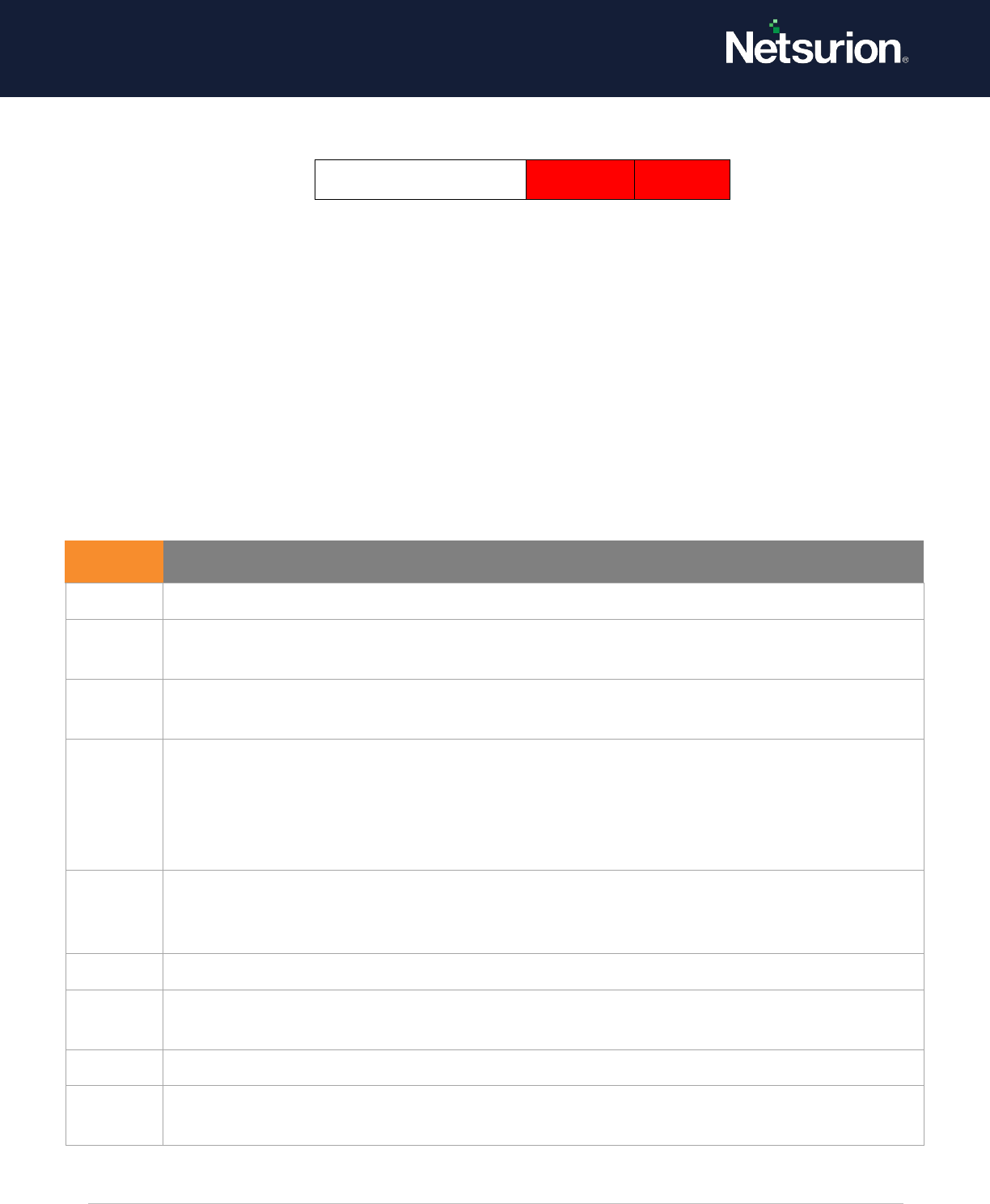
© Copyright Netsurion. All Rights Reserved. 21
IPsec Extended Mode
Disable
Disable
5.3 IPsec Main Mode
Applies to: Windows Server 2008 onwards and Windows 7 onwards.
This security policy setting determines whether the operating system generates events for the results
of the Internet Key Exchange (IKE) protocol and Authenticated Internet Protocol (AuthIP) during Main
Mode negotiations.
Event volume: High
Default: Not configured
Event ID
Event Message
4646
Security ID: %1
4650
An IPsec Main Mode security association was established. Extended Mode was not enabled.
Certificate authentication was not used.
4651
An IPsec Main Mode security association was established. Extended Mode was not enabled. A
certificate was used for authentication.
4652
An IPsec Main Mode negotiation failed.
NOTE: This event provided event audit data in the following categories: Local Endpoint, Local
Certificate, Remote Endpoint, Remote Certificate, Additional Information, and Failure
Information.
4653
An IPsec Main Mode negotiation failed. NOTE: This event provided event audit data in the
following categories: Local Endpoint, Remote Endpoint, Additional Information, and Failure
Information.
4655
An IPsec Main Mode security association ended
4976
During Main Mode negotiation, IPsec received an invalid negotiation packet. If this problem
persists, it could indicate a network issue or an attempt to modify or replay this negotiation.
5049
An IPsec Security Association was deleted.
5453
An IPsec negotiation with a remote computer failed because the IKE and AuthIP IPsec Keying
Modules (IKEEXT) service are not started.
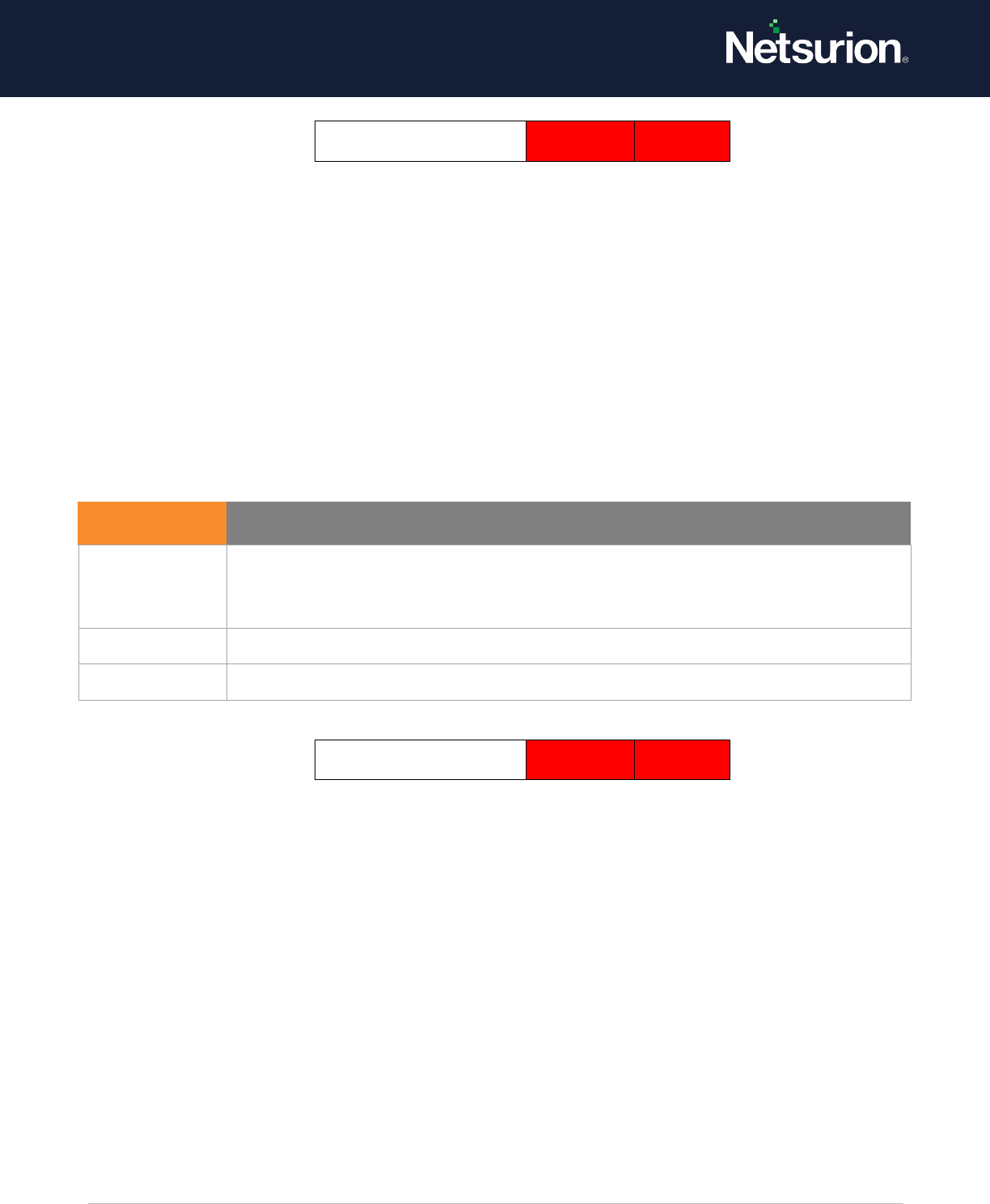
© Copyright Netsurion. All Rights Reserved. 22
IPsec Main Mode
Disable
Disable
5.4 IPsec Quick Mode
Applies to: Windows Server 2008 onwards and Windows 7 onwards.
This security policy setting determines whether the operating system generates events for the results
of the Internet Key Exchange (IKE) protocol and Authenticated Internet Protocol (AuthIP) during Main
Mode negotiations.
Event volume: High
Default: Not configured
IPsec Quick Mode
Disable
Disable
5.5 Account Logoff
Applies to: Windows Server 2008 onwards and Windows 7 onwards.
This security policy setting determines whether the operating system generates audit events when
logon sessions are terminated. These events occur on the computer that was accessed. In the case of
an interactive logon, these would be generated on the computer that was logged on to.
NOTE:
There is no failure event in this subcategory because failed logoffs (such as when a system abruptly
shuts down) do not generate an audit record.
Logon events are essential to understanding user activity and detecting potential attacks. Logoff events
are not 100 percent reliable. For example, the computer can be turned off without a proper logoff and
shutdown taking place; in this case, a logoff event will not be generated.
Event ID
Event Message
4977
During Quick Mode negotiation, IPsec received an invalid negotiation packet. If this
problem persists, it could indicate a network issue or an attempt to modify or replay
this negotiation.
5451
An IPsec Quick Mode security association was established.
5452
An IPsec Quick Mode security association ended
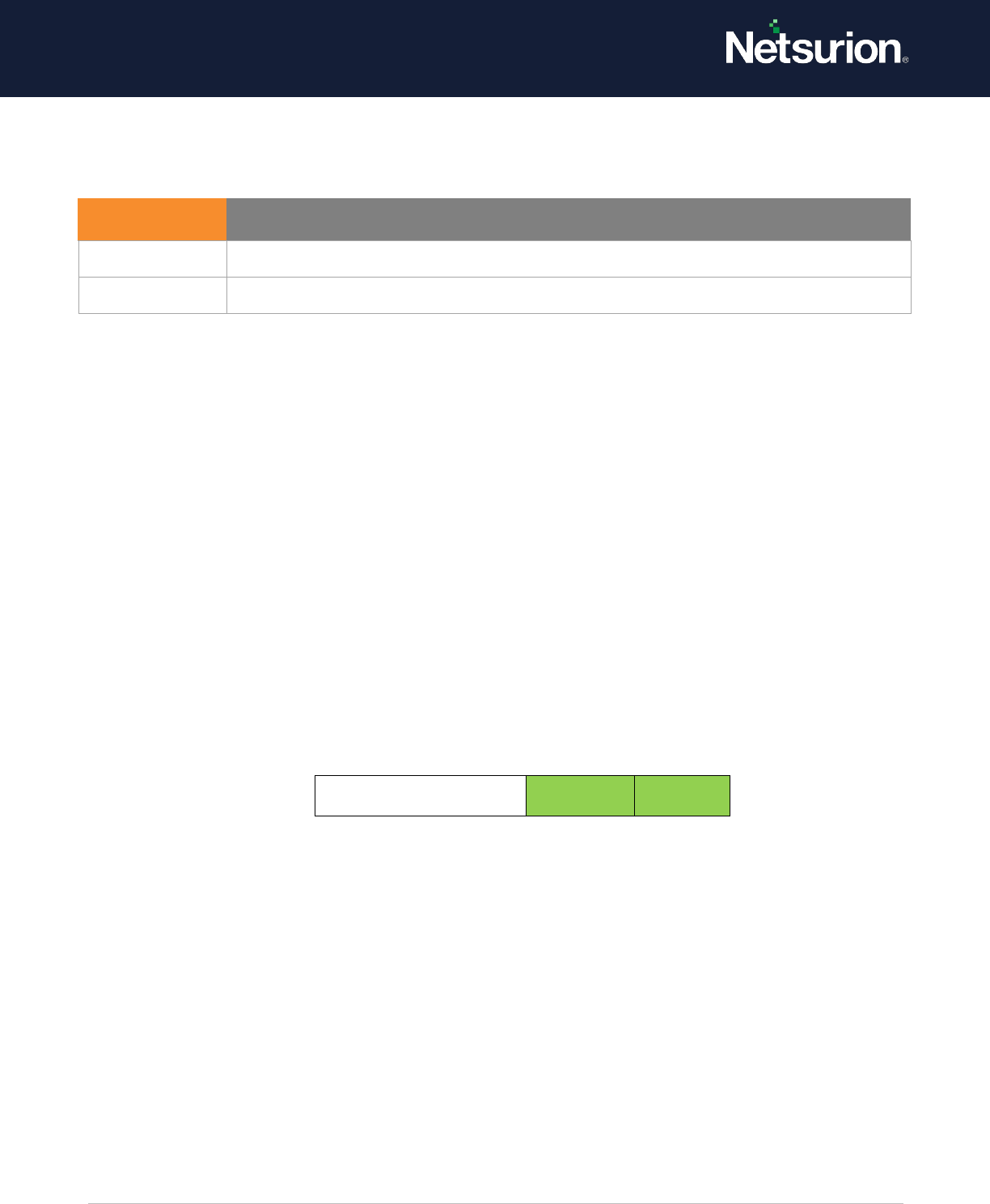
© Copyright Netsurion. All Rights Reserved. 23
Event volume: Low
Default: Success
Also, refer to Event ID 4647 which Windows logs instead of this event in the case of interactive logons
when the user logs out.
This event signals the end of a logon session and can be correlated back to the logon event 4624 using
the Logon ID.
For network connections (such as to a file server), it will appear that users log on and off many times a
day. This phenomenon is caused by the way the Server service terminates idle connections.
If a user turns off his/her computer, Windows does not have an opportunity to log the logoff event
until the system restarts. Therefore, some logoff events are logged much later than the time at which
they occur.
ANONYMOUS LOGONs are routine events on Windows networks.
Microsoft's comments:
This event does not necessarily indicate the time that a user has stopped using a system. For example,
if the computer is shut down or loses network connectivity it may not record a logoff event at all.
Account Logoff
Enable
Enable
5.6 Account Logon
Applies to: Windows Server 2008 onwards and Windows 7 onwards.
This security policy setting determines whether the operating system generates audit events when a
user attempts to log on to a computer. These events are related to the creation of logon sessions and
occur on the computer that was accessed. For an interactive logon, events are generated on the
computer that was logged on to. For network logon, such as accessing a share, events are generated
on the computer hosting the resource that was accessed.
The following events are recorded:
• Logon success and failure.
Event ID
Event Message
4634
An account was logged off. (Link back to 4624 – Logon ID)
4647
User initiated logoff. (For Interactive / Remote Interactive)
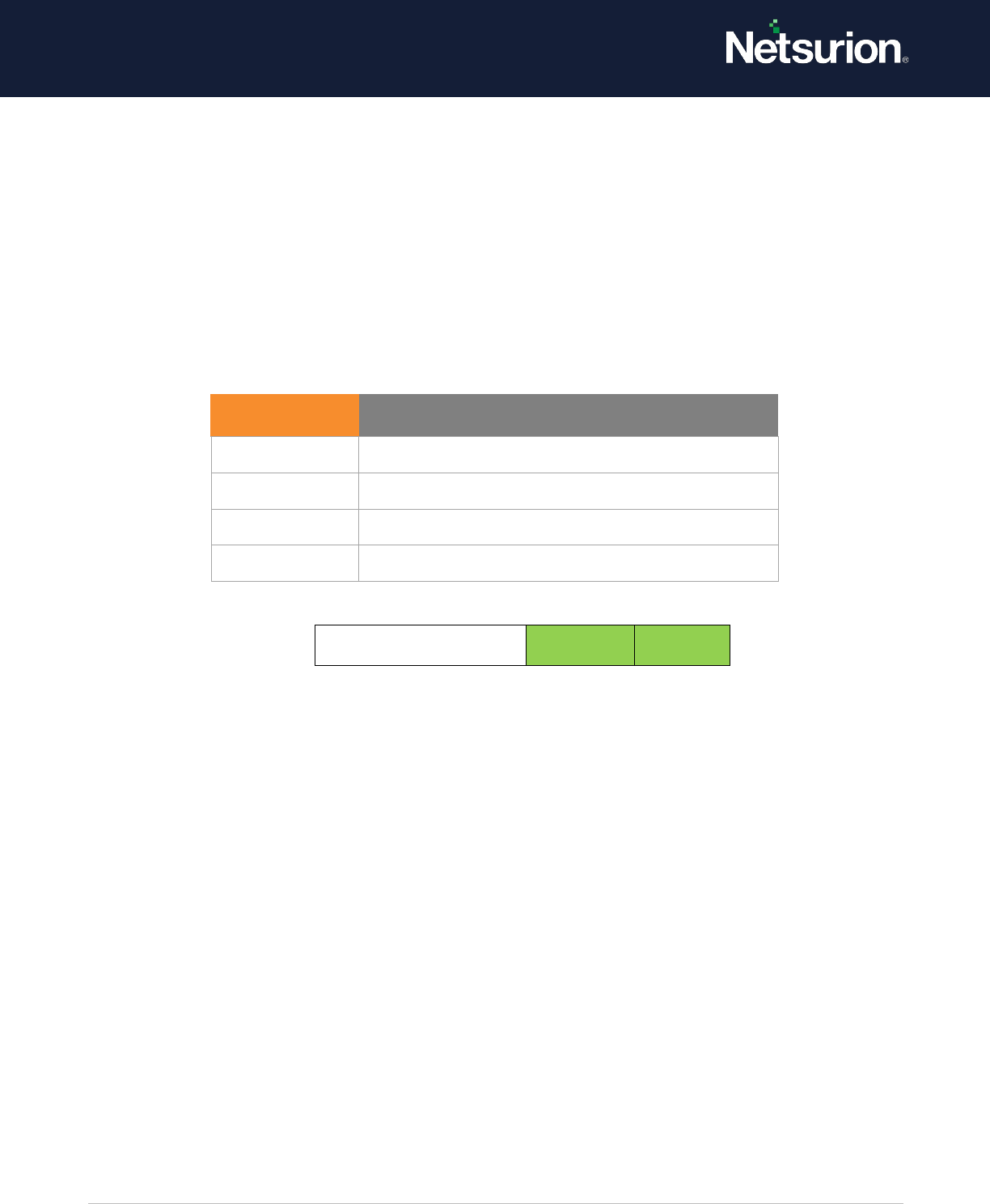
© Copyright Netsurion. All Rights Reserved. 24
• Logon attempts by using explicit credentials. This event is generated when a process attempts to
log on an account by explicitly specifying that account's credentials. This most commonly occurs
in batch-type configurations such as scheduled tasks, or when using the Runas command.
• Security identifiers (SIDs) are filtered.
Logon events are essential for tracking user activity and detecting potential attacks.
Event volume: Low (client computer); Medium (DC’s and N/W Server)
Default: Success for client computers; success and failure for servers.
Account Logon
Enable
Enable
5.7 Network Policy Server (NPS)
Applies to: Windows Server 2008 onwards and Windows 7 onwards.
This security policy setting determines whether the operating system generates audit events for
RADIUS (IAS) and Network Access Protection (NAP) activity on user access requests (Grant, Deny,
Discard, Quarantine, Lock, and Unlock).
NAP events can be used to understand the overall health of the network.
Event volume: Medium–High (Servers running NPS); Medium on other Servers and client computers.
Default: Success / Failure.
Event ID
Event Message
4624
An account was successfully logged on.
4625
An account failed to log on.
4648
A logon was attempted using explicit credentials.
4675
SIDs were filtered.
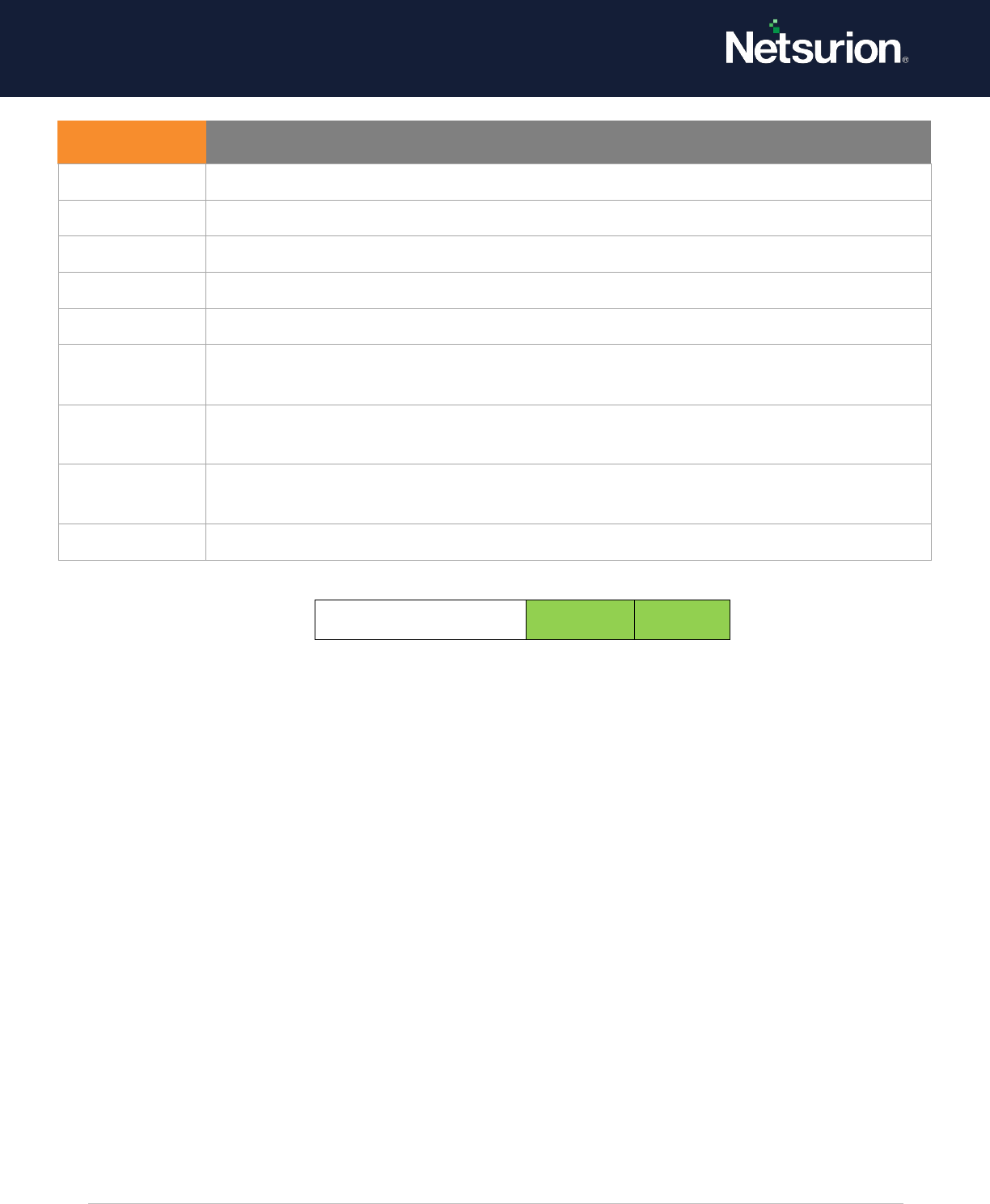
© Copyright Netsurion. All Rights Reserved. 25
Network Policy Server
Enable
Enable
5.8 Other Logon/Logoff Events
Applies to: Windows Server 2008 onwards and Windows 7 onwards.
This security policy setting determines whether Windows generates audit events for other logon or
logoff events, such as:
• A Remote Desktop session disconnects or connects.
• A workstation is locked or unlocked.
• A screen saver is invoked or dismissed.
• A replay attack is detected. This event indicates that a Kerberos request was received twice with
identical information. This condition could also be caused by network misconfiguration.
• A user is granted access to a wireless network. It can either be a user account or the computer
account.
• A user is granted access to a wired 802.1x network. It can either be a user account or the
computer account.
Logon events are essential to understand user activity and detect potential attacks.
Event volume: Low Windows
Event ID
Event Message
6272
Network Policy Server granted access to a user.
6273
Network Policy Server denied access to a user.
6274
Network Policy Server discarded the request for a user.
6275
Network Policy Server discarded the accounting request for a user.
6276
Network Policy Server quarantined a user.
6277
Network Policy Server granted access to a user but put it on probation because the host
did not meet the defined health policy.
6278
Network Policy Server granted full access to a user because the host met the defined
health policy.
6279
Network Policy Server locked the user account due to repeated failed authentication
attempts.
6280
Network Policy Server unlocked the user account.
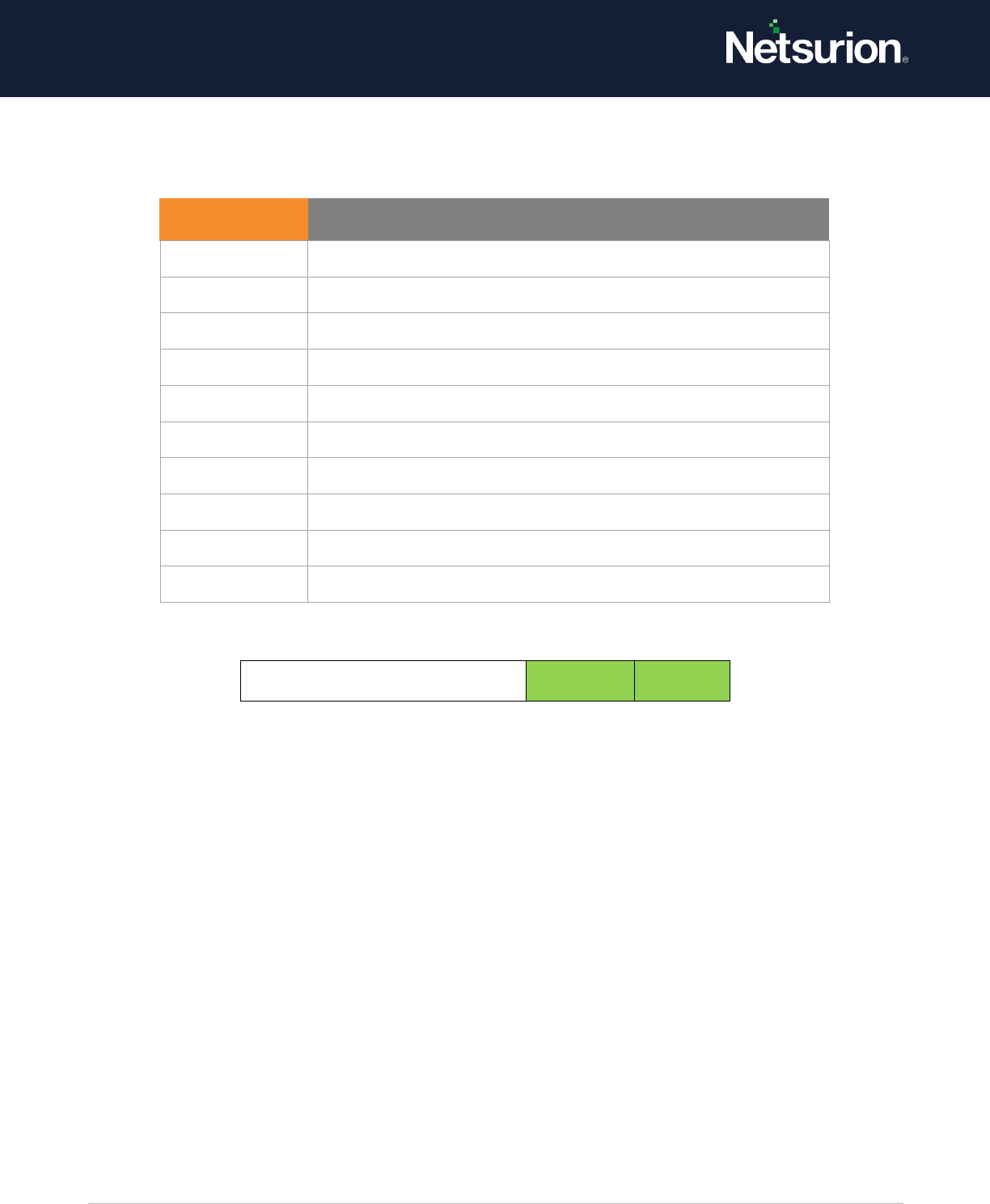
© Copyright Netsurion. All Rights Reserved. 26
Windows Default: Not Configured
Other Logon/Logoff Events
Enable
Enable
5.9 Special Logon
Applies to: Windows Server 2008 onwards and Windows 7 onwards.
This security policy setting determines whether the operating system generates audit events when:
• A special logon is used. A special logon is a logon that has administrator-equivalent privileges and
can be used to elevate a process to a higher level.
• A member of a special group logs on. Special Groups is a Windows feature that enables the
administrator to find out when a member of a certain group has logged on. The administrator
can set a list of group security identifiers (SIDs) in the registry. If any of these SIDs is added to a
token during logon and this auditing subcategory is enabled, a security event is logged. For more
information about this feature, refer article 947223 in the Microsoft Knowledge Base.
Users holding special privileges can potentially make changes to the system. It is recommended to
track their activity.
Event volume: Low
Event ID
Event Message
4649
A replay attack was detected.
4778
A session was reconnected to a window station.
4779
A session was disconnected from a Window Station.
4800
The workstation was locked.
4801
The workstation was unlocked.
4802
The screen saver was invoked.
4803
The screen saver was dismissed.
5378
The requested credentials delegation was disallowed by policy.
5632
A request was made to authenticate to a wireless network.
5633
A request was made to authenticate to a wired network.
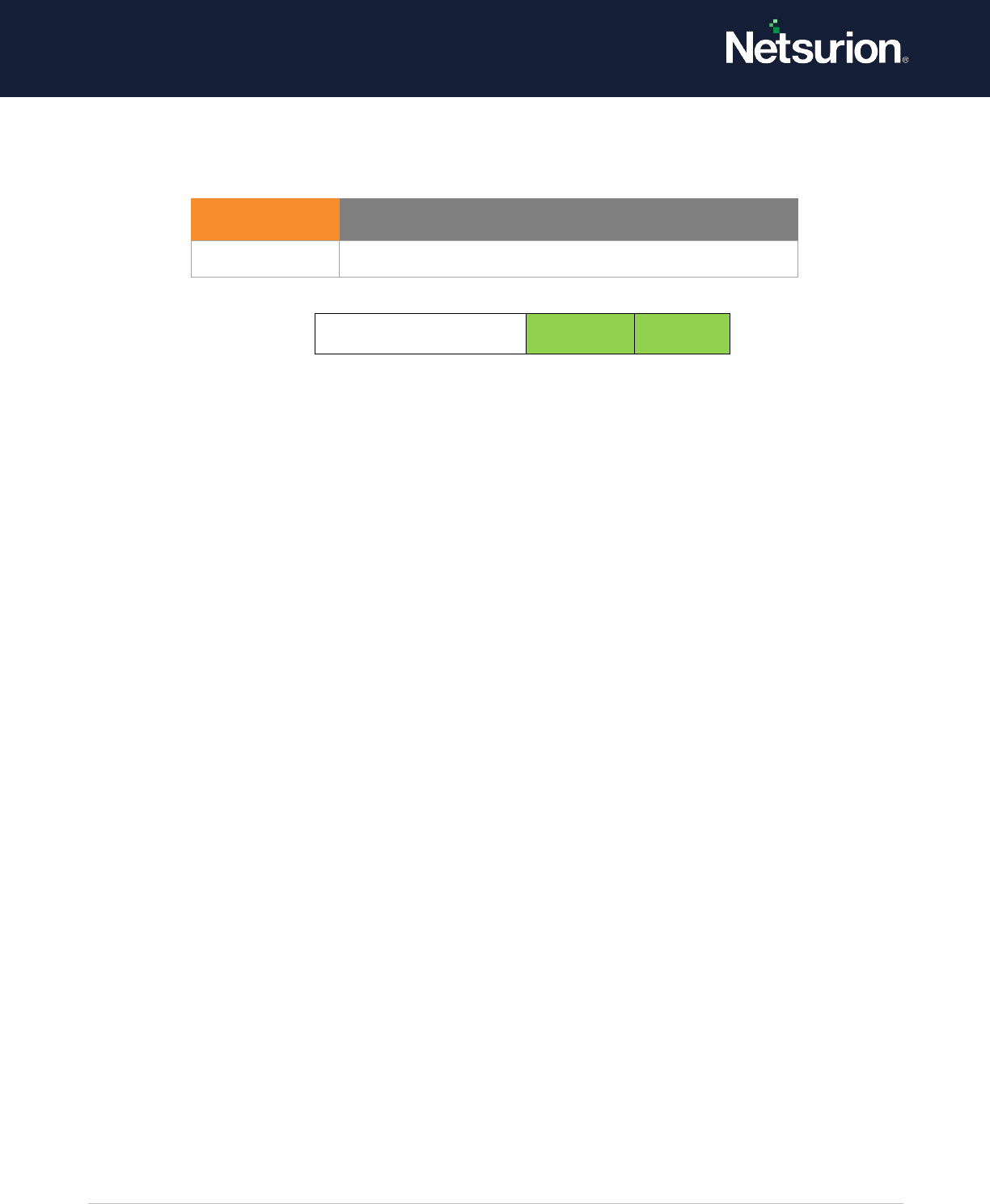
© Copyright Netsurion. All Rights Reserved. 27
Default: Success
Special Logon
Enable
Enable
6. Object Access
Object Access policy settings and audit events allow you to track attempts to access specific objects or
types of objects on a network or computer. To audit attempts to access a file, directory, registry key, or
any other object, you must enable the appropriate Object Access auditing subcategory for success
and/or failure events. For example, the File System subcategory needs to be enabled to audit file
operations, and the Registry subcategory needs to be enabled to audit registry accesses. Proving that
these audit policies are in effect to an external auditor is even more difficult. There is no easy way to
verify that the proper SACLs are set on all inherited objects. To address this issue, refer to Global
Object Access Auditing.
6.1 Application Generated
Applies to: Windows Server 2008 onwards and Windows 7 onwards.
This security policy setting determines whether the operating system generates audit events when
applications attempt to use the Windows Auditing application programming interfaces (APIs). The
following events can generate audit activity:
• Creation, deletion, and initialization of an application client context.
• Application operations.
Applications designed to use the Windows Auditing APIs can use this subcategory to log auditing
events related to their function. The level, volume, relevance, and importance of these audit events
depend on the application generating them. The operating system logs the events as they are
generated by the application.
Event volume: Varies on installed application’s use of Windows Auditing.
Default: Not Configured.
Event ID
Event Message
4964
Special groups have been assigned to new logon.
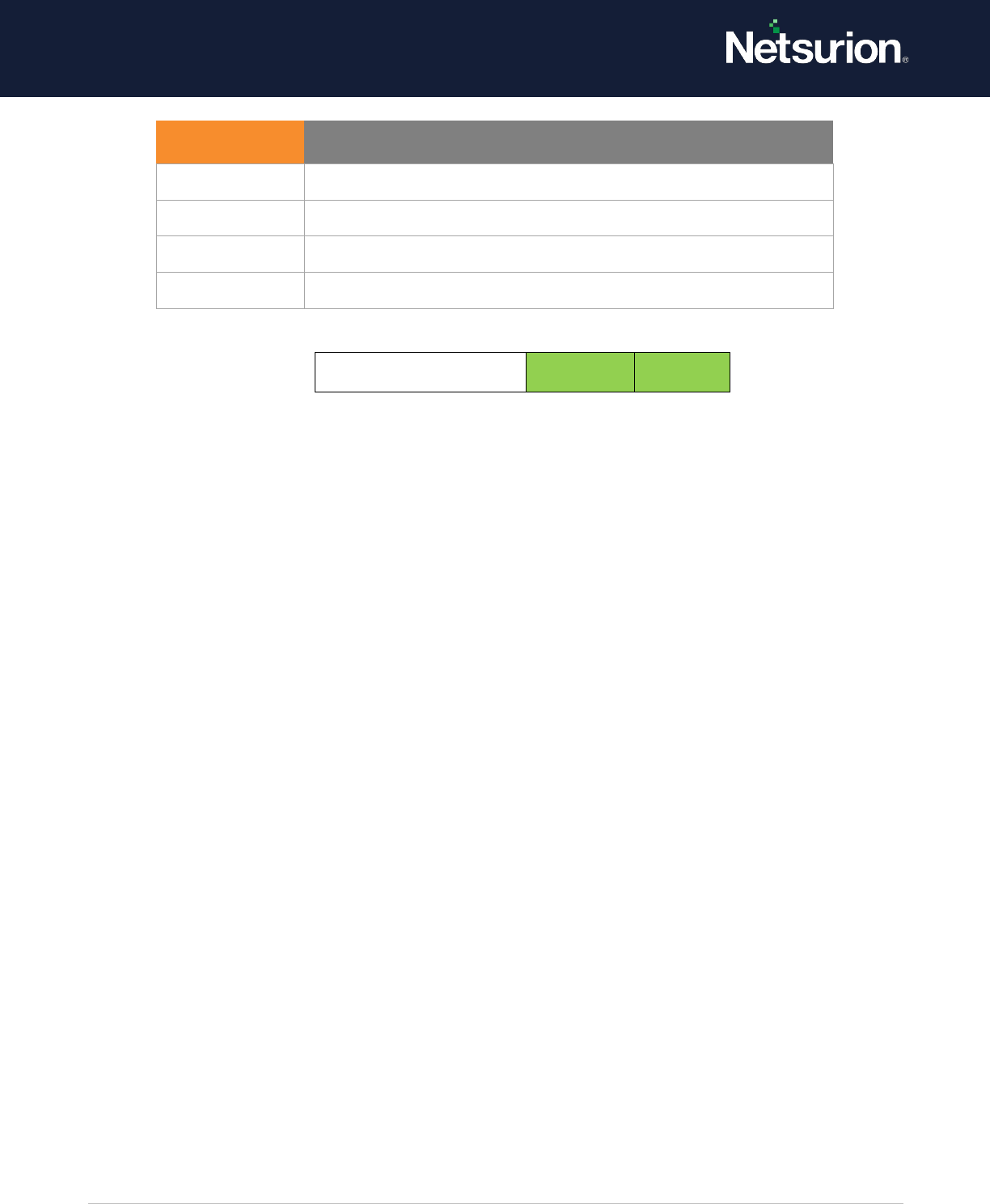
© Copyright Netsurion. All Rights Reserved. 28
Application Generated
Enable
Enable
6.2 Certification Services
Applies to: Windows Server 2008 onwards and Windows 7 onwards.
This security policy setting determines whether the operating system generates events when Active
Directory Certificate Services (AD CS) operations are performed, such as:
• AD CS starts, shuts down, is backed up, or is restored.
• Certificate revocation list (CRL)-related tasks are performed.
• Certificates are requested, issued, or revoked.
• Certificate manager settings for AD CS are changed.
• The configuration and properties of the certification authority (CA) are changed.
• AD CS templates are modified.
• Certificates are imported.
• A CA certificate is published to Active Directory Domain Services.
• Security permissions for AD CS role services are modified.
• Keys are archived, imported, or retrieved.
• The OCSP Responder Service is started or stopped.
Monitoring these operational events is important to ensure that AD CS role services are functioning
properly.
Event volume: Low - Medium on servers hosting AD CS role services.
Default: Not Configured.
Event ID
Event Message
4665
An attempt was made to create an application client context.
4666
An application attempted an operation.
4667
An application client context was deleted.
4668
An application was initialized.
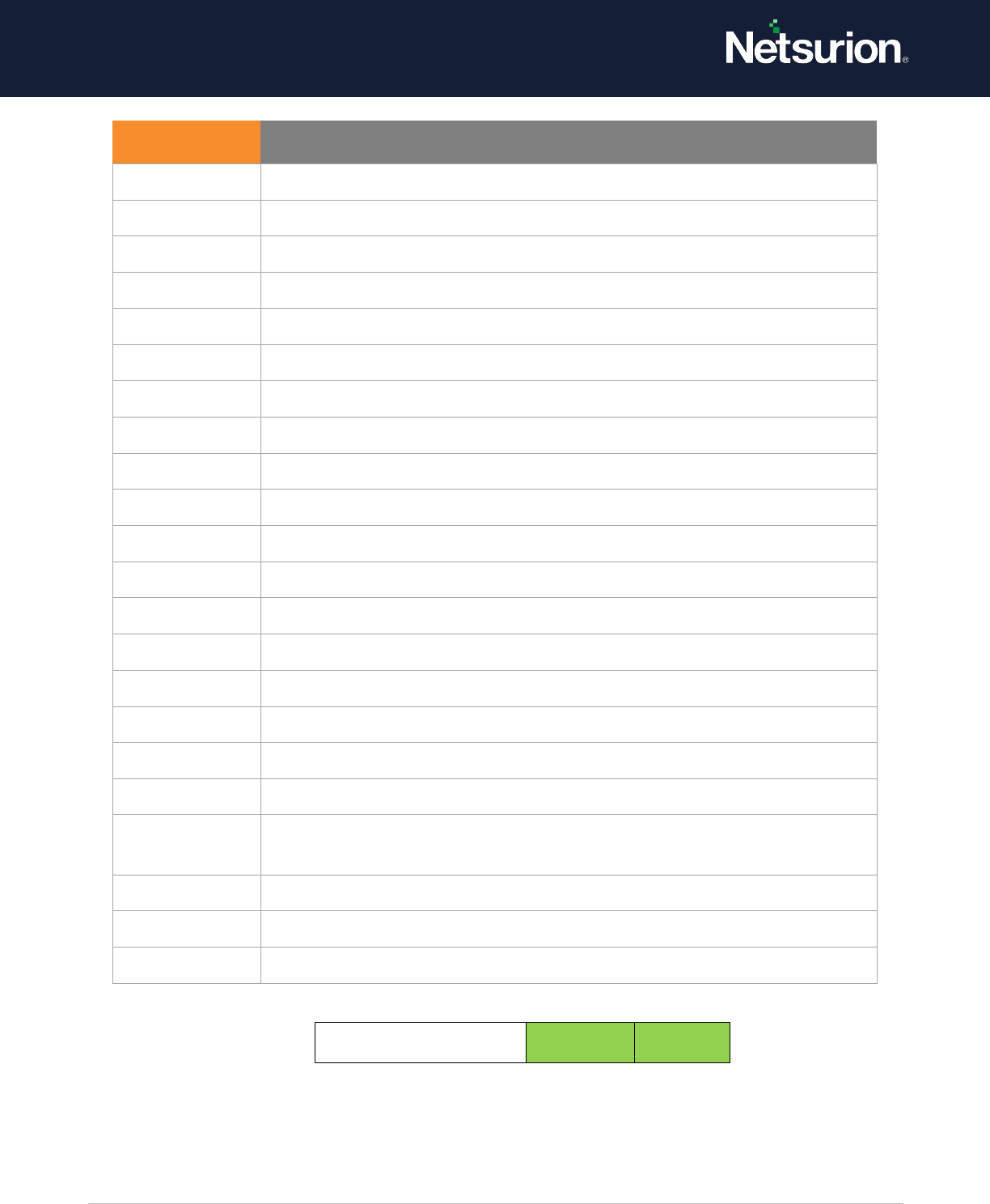
© Copyright Netsurion. All Rights Reserved. 29
Certification Services
Enable
Enable
Event ID
Event Message
4877
Certificate Services backup completed.
4878
Certificate Services restore started.
4879
Certificate Services restore completed.
4880
Certificate Services started.
4881
Certificate Services stopped
4882
The security permissions for Certificate Services changed.
4883
Certificate Services retrieved an archived key.
4884
Certificate Services imported a certificate into its database.
4885
The audit filter for Certificate Services changed.
4886
Certificate Services received a certificate request.
4887
Certificate Services approved a certificate request and issued a certificate.
4888
Certificate Services denied a certificate request.
4889
Certificate Services set the status of a certificate request to pending.
4890
The certificate manager settings for Certificate Services changed.
4891
A configuration entry changed in Certificate Services.
4892
A property of Certificate Services changed.
4893
Certificate Services archived a key.
4894
Certificate Services imported and archived a key.
4895
Certificate Services published the CA certificate to Active Directory Domain
Services.
4896
One or more rows have been deleted from the certificate database.
4897
Role separation enabled.
4898
Certificate Services loaded a template.
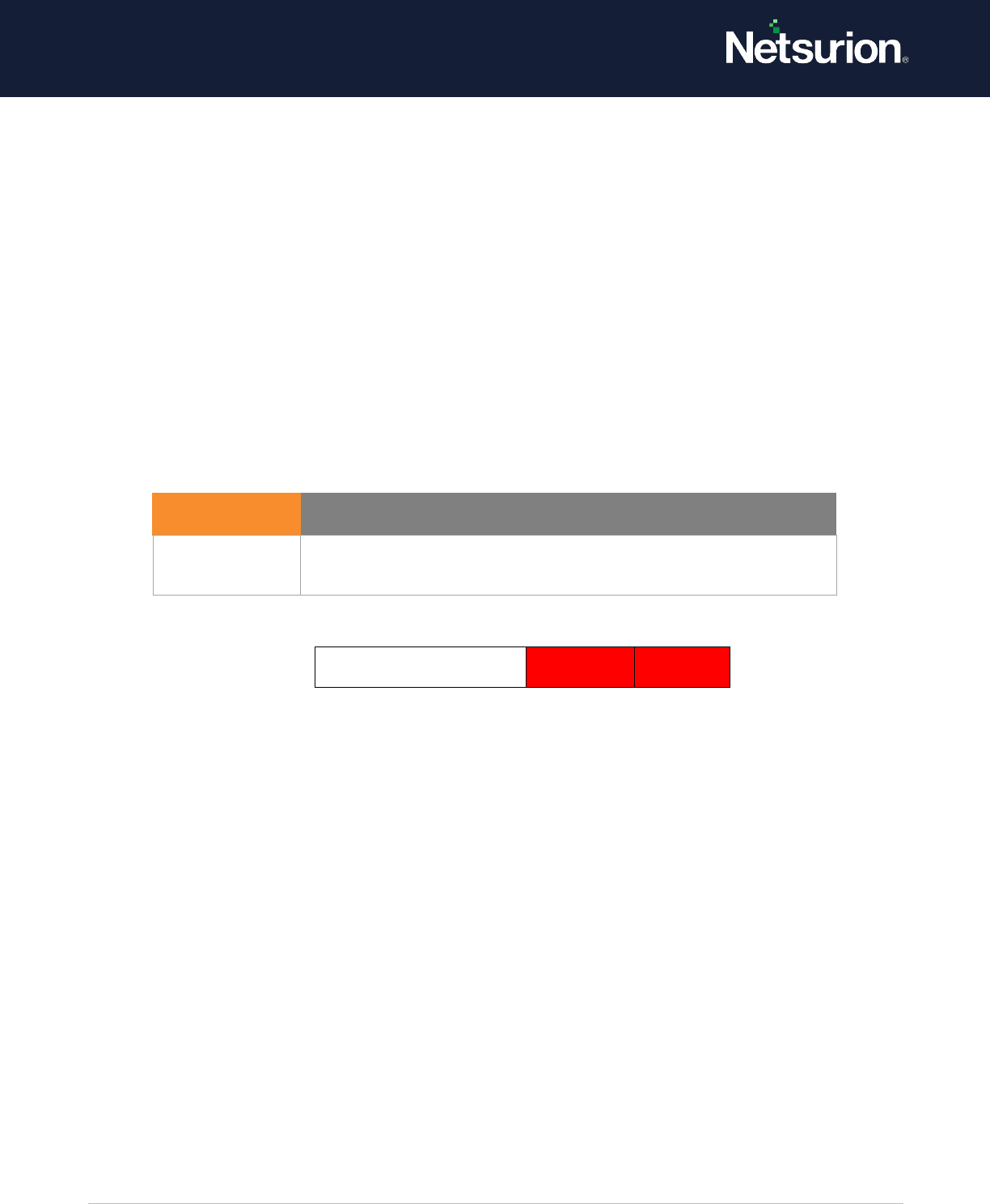
© Copyright Netsurion. All Rights Reserved. 30
6.3 Detailed File Share
Applies to: Windows Server 2008 onwards and Windows 7 onwards.
This security policy setting allows to audit attempts to access files and folders on a shared folder. The
Detailed File Share setting logs an event every time a file or folder is accessed, whereas the File Share
setting only records one event for any connection established between a client computer and file
share. Detailed File Share audit events include detailed information about the permissions or other
criteria used to grant or deny access.
NOTE: There are no system access control lists (SACLs) for shared folders. If this policy setting is
enabled, access to all shared files and folders on the system is audited.
Event volume: High on File Servers / DC due to SYSVOL n/w access required by Group Policy.
Default: Not Configured.
Detailed File Share
Disable
Disable
6.4 File Share
Applies to: Windows Server 2008 onwards and Windows 7 onwards.
This security policy setting determines whether the operating system generates audit events when a
file share is accessed.
Audit events are not generated when shares are created, deleted, or when share permissions change.
NOTE: There are no system access control lists (SACLs) for shares; therefore, once this setting is
enabled, access to all shares on the system will be audited.
Combined with File System auditing, File Share auditing allows you to track what content was accessed,
the source (IP address and port) of the request, and the user account used for the access.
Event volume: High on a file server or domain controller (due to SYSVOL access by client computers for
policy processing)
Default: Not Configured.
Event ID
Event Message
5145
A network share object was checked to see whether the client
can be granted desired access.
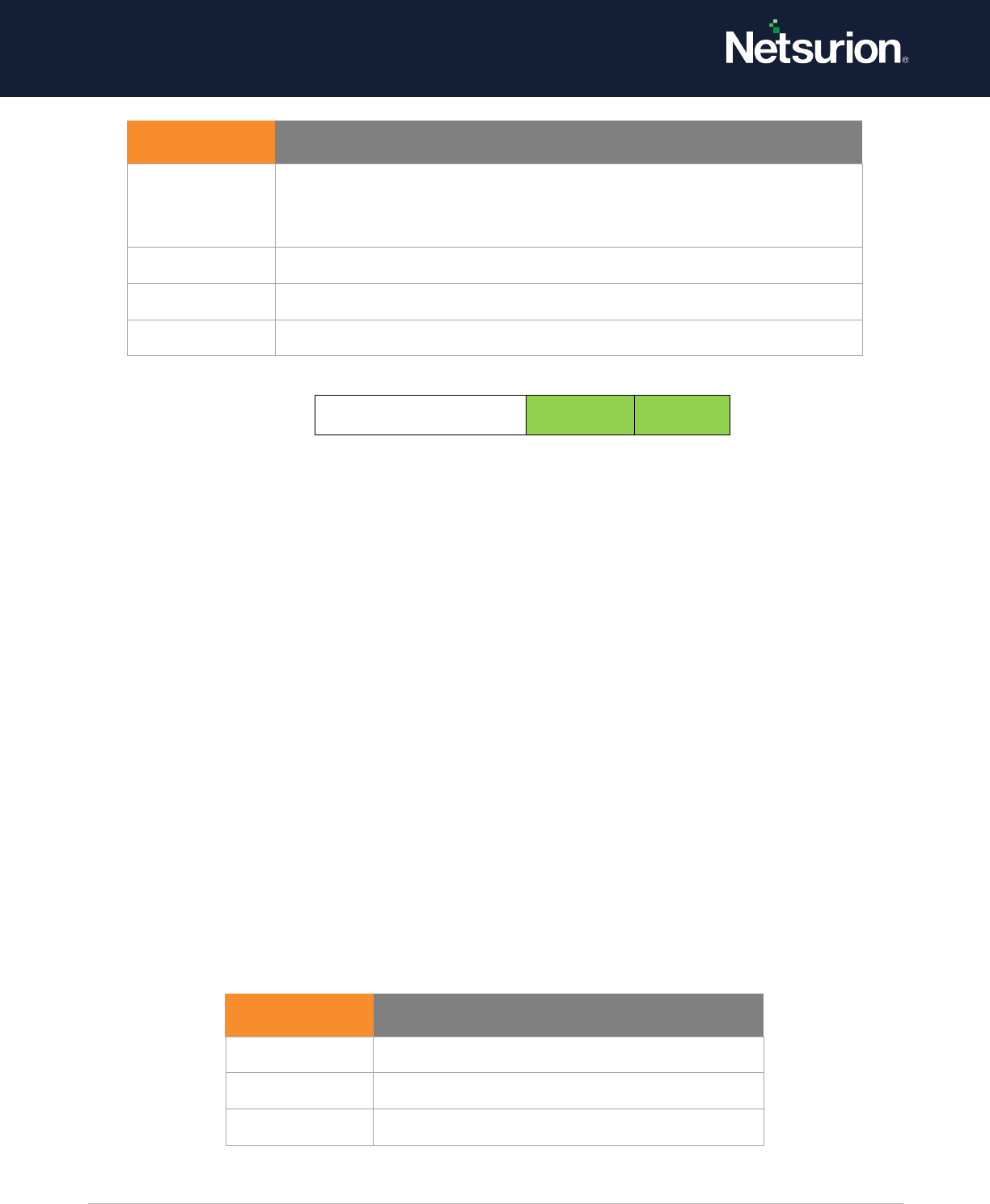
© Copyright Netsurion. All Rights Reserved. 31
File Share
Enable
Enable
6.5 File System
Applies to: Windows Server 2008 onwards and Windows 7 onwards.
This security policy setting determines whether the operating system audits user attempts to access
file system objects. Audit events are only generated for objects that have configured system access
control lists (SACLs), and only if the type of access requested (such as Write, Read, or Modify) and the
account making the request match the settings in the SACL.
If success auditing is enabled, an audit entry is generated each time an account successfully accesses a
file system object that has a matching SACL. If failure auditing is enabled, an audit entry is generated
each time any user unsuccessfully attempts to access a file system object that has a matching SACL
These events are essential for tracking activity for file objects that are sensitive or valuable and require
extra monitoring.
Event volume: Varies, depending on how file system SACLs are configured.
No audit events are generated for the default file system SACLs.
Default: Not Configured.
Event ID
Event Message
5140
A network share object was accessed.
NOTE: Supported Operating Systems
Windows 2008 R2 onwards and Windows 7 onwards
5142
A network share object was added.
5143
A network share object was modified.
5144
A network share object was deleted.
Event ID
Event Message
4664
An attempt was made to create a hard link.
4985
The state of a transaction has changed.
5051
A file was virtualized.

© Copyright Netsurion. All Rights Reserved. 32
File System
Enable
Enable
6.6 Filtering Platform
Applies to: Windows Server 2008 onwards and Windows 7 onwards.
This security policy setting determines whether the operating system generates audit events when
connections are allowed or blocked by the Windows Filtering Platform, such as when:
• Windows Firewall service blocks an application from accepting incoming connections on the
network.
• Windows Filtering Platform allows or blocks a connection.
• Windows Filtering Platform permits or blocks a bind to a local port.
• Windows Filtering Platform permits or blocks the listening of an application or service on a port
for incoming connections.
Event volume: High
Default: Not Configured
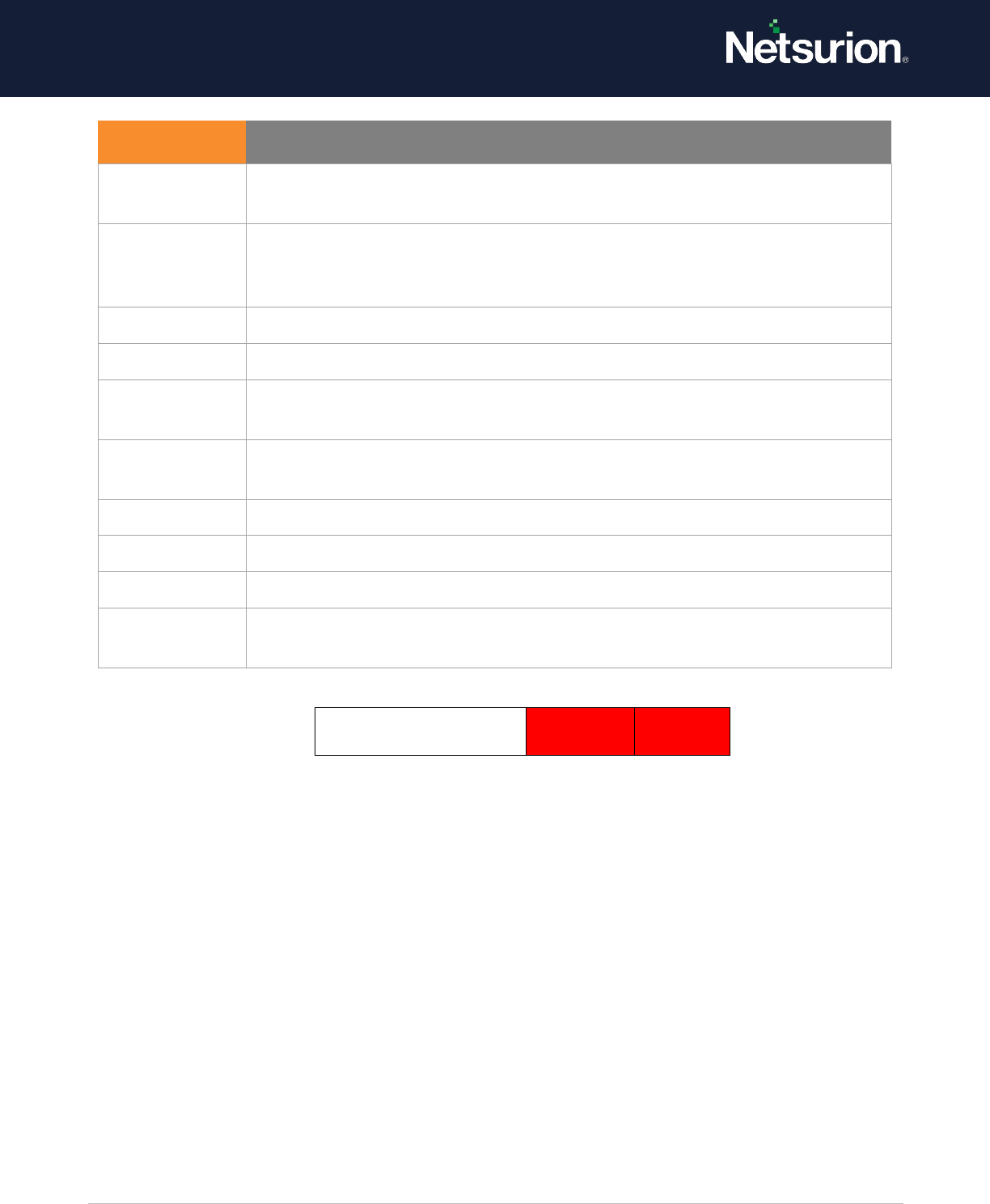
© Copyright Netsurion. All Rights Reserved. 33
Filtering Platform
Connection
Disable
Disable
6.7 Filtering Platform Packet Drop
Applies to: Windows Server 2008 onwards and Windows 7 onwards.
This security policy setting allows you to audit packets that are dropped by the Windows Filtering
Platform.
A high rate of dropped packets may indicate attempts to gain unauthorized access to computers on
your network.
Event volume: High
Default setting: Not configured
Event ID
Event Message
5031
The Windows Firewall Service blocked an application from accepting incoming
connections on the network.
5140
A network share object was accessed.
NOTE: Supported Operating Systems
Windows 2008 R2 onwards and Windows 7 onwards
5150.
The Windows Filtering Platform blocked a packet.
5151
A more restrictive Windows Filtering Platform filter has blocked a packet.
5154
The Windows Filtering Platform has permitted an application or service to
listen on a port for incoming connections.
5155
The Windows Filtering Platform has blocked an application or service from
listening on a port for incoming connections.
5156
The Windows Filtering Platform has allowed a connection.
5157
The Windows Filtering Platform has blocked a connection.
5158
The Windows Filtering Platform has permitted a bind to a local port.
5159
The Windows Filtering Platform has blocked a bind to a local port.
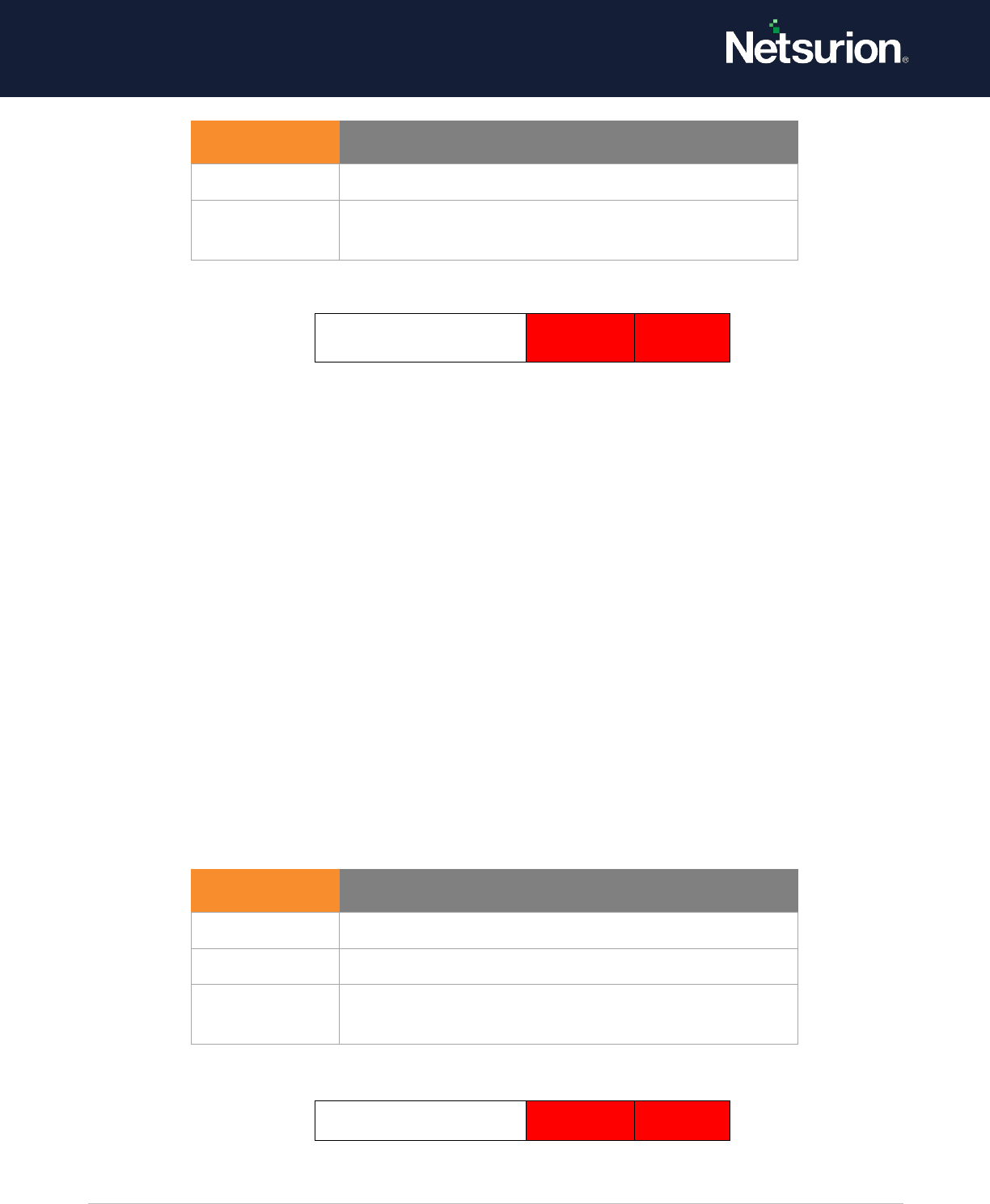
© Copyright Netsurion. All Rights Reserved. 34
Filtering Platform
Packet Drop
Disable
Disable
6.8 Handle Manipulation
Applies to: Windows Server 2008 onwards and Windows 7 onwards.
This security policy setting determines whether the operating system generates audit events when a
handle to an object is opened or closed.
Only objects with configured system access control lists (SACLs) generate these events, and only if the
attempted handle operation matches the SACL.
NOTE: Handle Manipulation events are only generated for object types where the corresponding File
System or Registry Object Access subcategory is enabled. For more information, refer the Audit File
System or Audit Registry.
Event volume: High, depending on how SACLs are configured
Default: Not configured
Handle Manipulation
Disable
Disable
Event ID
Event Message
5152
Windows Filtering Platform blocked a packet.
5153
A more restrictive Windows Filtering Platform filter has
blocked a packet.
Event ID
Event Message
4656
A handle to an object was requested.
4658
The handle to an object was closed.
4690
An attempt was made to duplicate a handle to an
object.
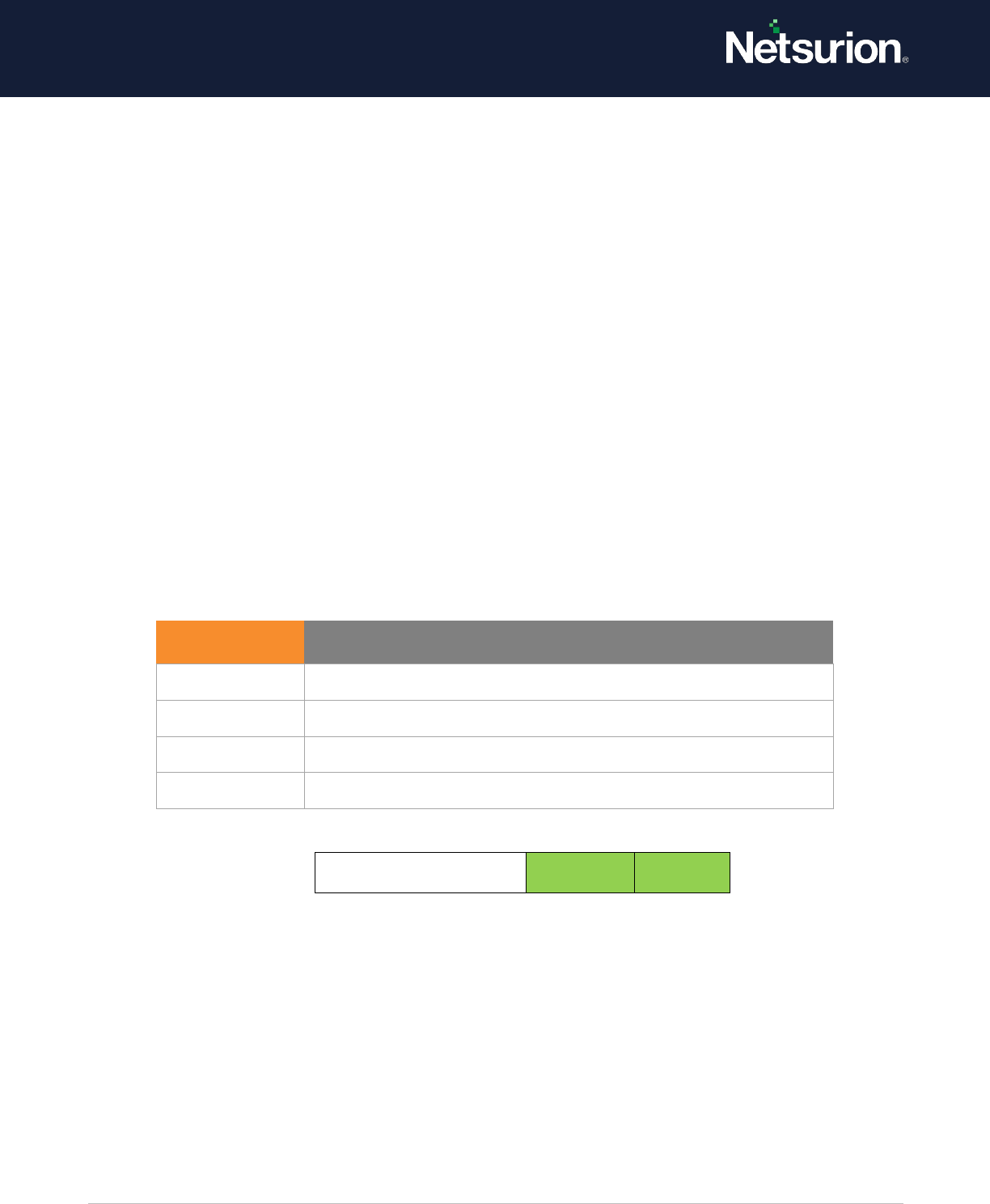
© Copyright Netsurion. All Rights Reserved. 35
6.9 Kernel Object
Applies to: Windows Server 2008 onwards and Windows 7 onwards.
This security policy setting allows you to audit attempts to access the system kernel, which include
mutexes and semaphores. Only kernel objects with a matching system access control list (SACL)
generate security audit events.
NOTE:
The Audit: Audit the access of global system objects policy setting controls the default SACL of kernel
objects.
The audits generated are usually only useful to developers.
Typically kernel objects are given SACLs only if the AuditBaseObjects or AuditBaseDirectories auditing
options are enabled.
Event volume: High, if you have enabled one of the Global Object Access Auditing settings
Default: Not configured.
Kernel Object
Enable
Enable
6.10 Other Object Access Events
Applies to: Windows Server 2008 onwards and Windows 7 onwards.
This security policy setting determines whether the operating system generates audit events for the
management of Task Scheduler jobs or COM+ objects.
For scheduler jobs, the following are audited:
Event ID
Event Message
4659
A handle to an object was requested with intent to delete.
4660
An object was deleted.
4661
A handle to an object was requested.
4663
An attempt was made to access an object
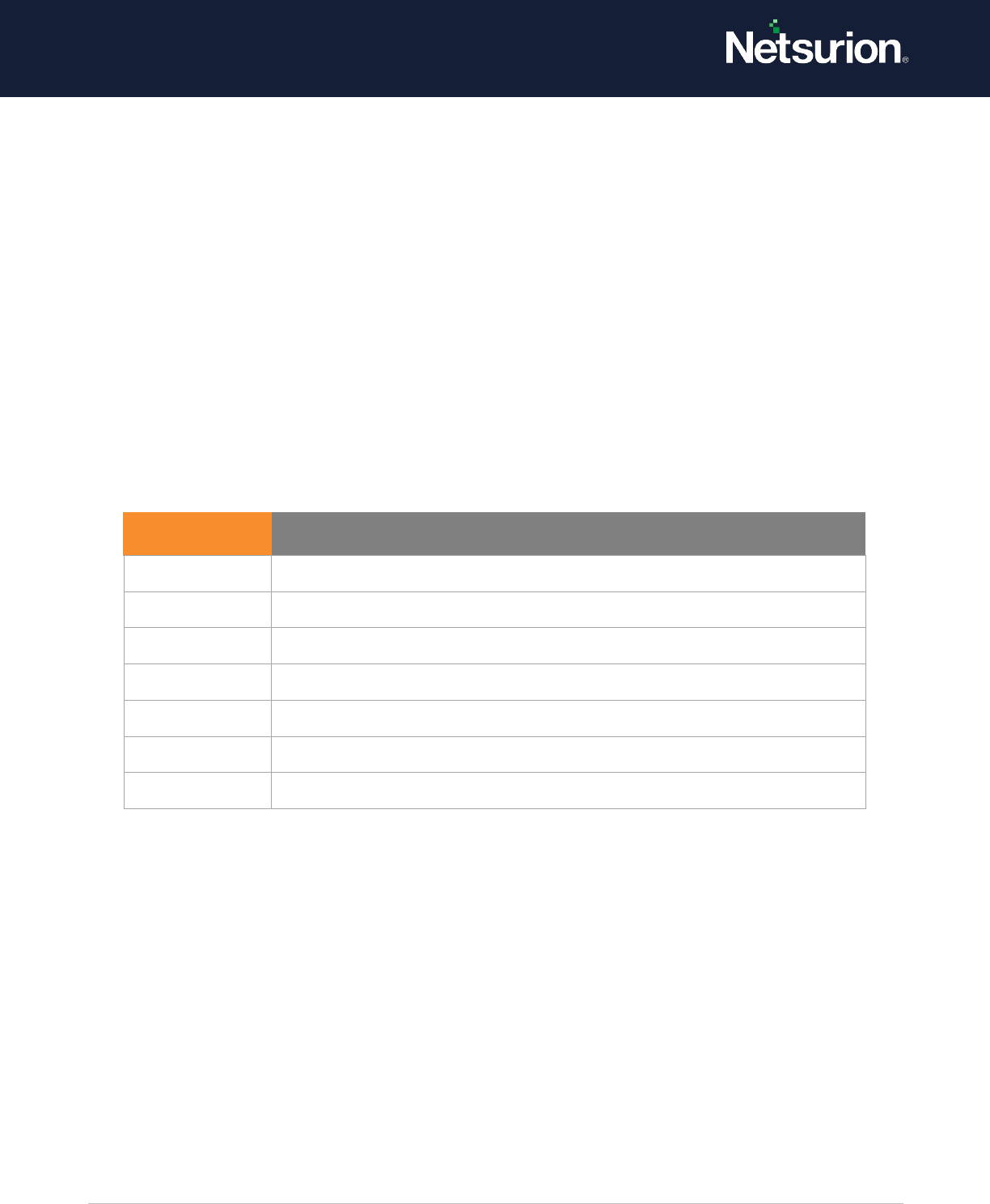
© Copyright Netsurion. All Rights Reserved. 36
• Job created.
• Job deleted.
• Job enabled.
• Job disabled.
• Job updated.
For COM+ objects, the following are audited:
• Catalog object added.
• Catalog object updated.
• Catalog object deleted.
Event volume: Low.
Default setting: Not configured.
Event ID
Event Message
4671
An application attempted to access a blocked ordinal through the TBS.
4691
Indirect access to an object was requested.
4698
A scheduled task was created.
4699
A scheduled task was deleted.
4700
A scheduled task was enabled.
4701
A scheduled task was disabled.
4702
A scheduled task was updated.
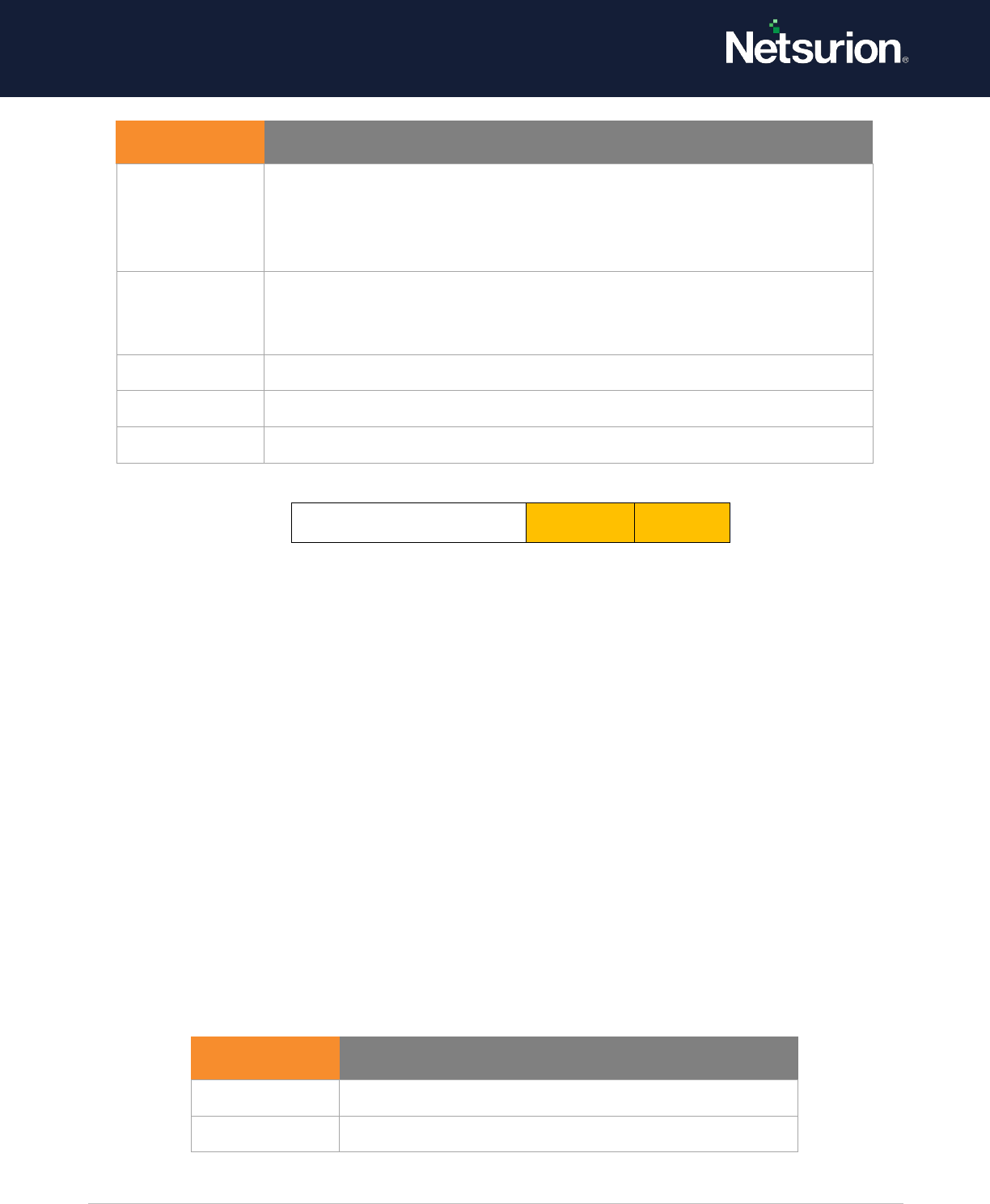
© Copyright Netsurion. All Rights Reserved. 37
Other Object Access Events
Optional*
Optional*
*If you choose to track Scheduled Tasks through auditing, you can turn this Audit Sub Category on.
6.11 Registry
Applies to: Windows Server 2008 onwards and Windows 7 onwards.
This security policy setting determines whether the operating system audits user attempts to access
registry objects. Audit events are only generated for objects that have configured system access
control lists (SACLs) specified, and only if the type of access requested (such as Write, Read, or Modify)
and the account making request match the settings in the SACL.
If success auditing is enabled, an audit entry is generated each time an account successfully accesses a
registry object that has a matching SACL. If failure auditing is enabled, an audit entry is generated each
time any user unsuccessfully attempts to access a registry object that has a matching SACL.
Event volume: Low – Medium (Depending on SACL configuration)
Default: Not Configured.
Event ID
Event Message
5148
The Windows Filtering Platform has detected a DoS attack and entered a
defensive mode; packets associated with this attack will be discarded.
NOTE: Supported Operating Systems
Windows 2008 R2 onwards and Windows 7 onwards
5149
The DoS attack has subsided, and normal processing is being resumed.
NOTE: Supported Operating Systems
Windows 2008 R2 onwards and Windows 7 onwards
5888
An object in the COM+ Catalog was modified.
5889
An object was deleted from the COM+ Catalog.
5890
An object was added to the COM+ Catalog.
Event ID
Event Message
4657
A registry value was modified.
5039
A registry key was virtualized.
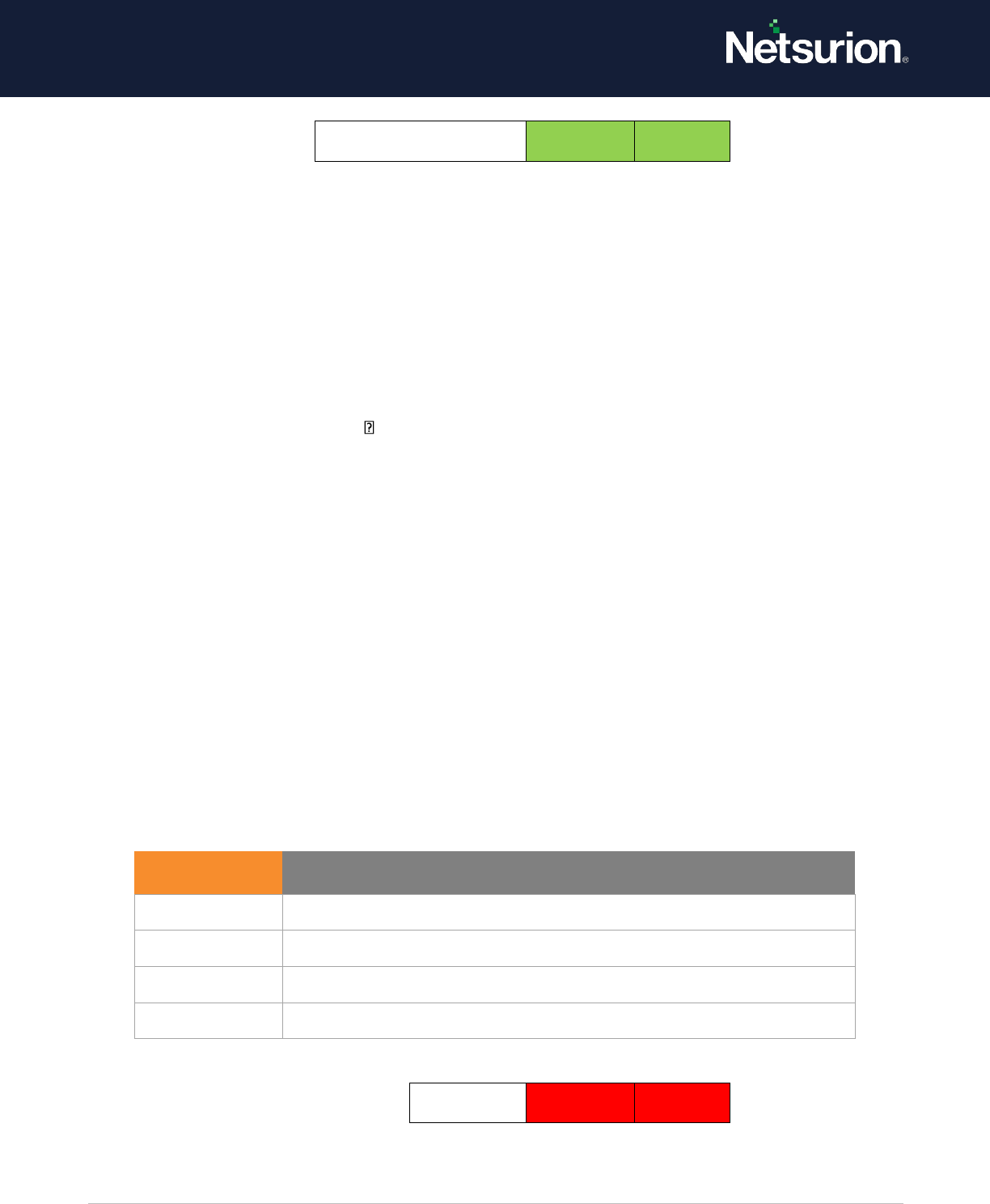
© Copyright Netsurion. All Rights Reserved. 38
Registry
Enable
Enable
6.12 SAM - Security Accounts Manager
Applies to: Windows Server 2008 onwards and Windows 7 onwards.
This security policy setting allows to audit events generated by attempts to access SAM objects. SAM
objects include the following:
• SAM_ALIAS: A local group
• SAM_GROUP: A group that is not a local group
• SAM_USER: A user account SAM_DOMAIN: A domain
• SAM_SERVER: A computer account
If you configure this policy setting, an audit event is generated when a SAM object is accessed. Success
audits record successful attempts, and failure audits record unsuccessful attempts.
NOTE:
Only SACL for SAM_SERVER can be modified.
Changes to user and group objects are tracked by the Account Management audit category. However,
user accounts with enough privileges could potentially alter the files where the account and password
information are stored in the system, bypassing any Account Management events.
Event volume: High on domain controllers.
NOTE: For information about reducing the number of events generated in this subcategory, please
refer article 841001 in Microsoft Knowledge Base.
Default: Not Configured
SAM
Disable
Disable
Event ID
Event Message
4659
A handle to an object was requested with intent to delete.
4660
An object was deleted.
4661
A handle to an object was requested.
4663
An attempt was made to access an object.

© Copyright Netsurion. All Rights Reserved. 39
7. Policy Change
Policy Change audit events allow tracking changes to important security policies on a local system or
network. Because policies are typically established by administrators to help secure network resources,
any changes or attempts to change these policies can be an important aspect of security management
for a network.
7.1 Audit Policy Change
Applies to: Windows Server 2008 onwards and Windows 7 onwards.
This security policy setting determines whether the operating system generates audit events when
changes are made to audit policy, including:
• Permissions and audit settings on the audit policy object (by using auditpol/set /sd).
• Changing the system audit policy.
• Registration and de-registration of security event sources.
• Changing per-user audit settings.
• Changing the value of CrashOnAuditFail.
• Changing audit settings on an object (for example, modifying the system access control list (SACL)
for a file or registry key.)
NOTE:
SACL change auditing is performed when SACL for an object has changed and the Policy Change
category is configured. Discretionary access control list (DACL) and owner change auditing are
performed when Object Access auditing is configured and the object's SACL is set for auditing of the
DACL or owner change.
Changes made to the Special Groups list.
NOTE: Changes to the audit policy are critical security events.
Event volume: Low
Default: Success
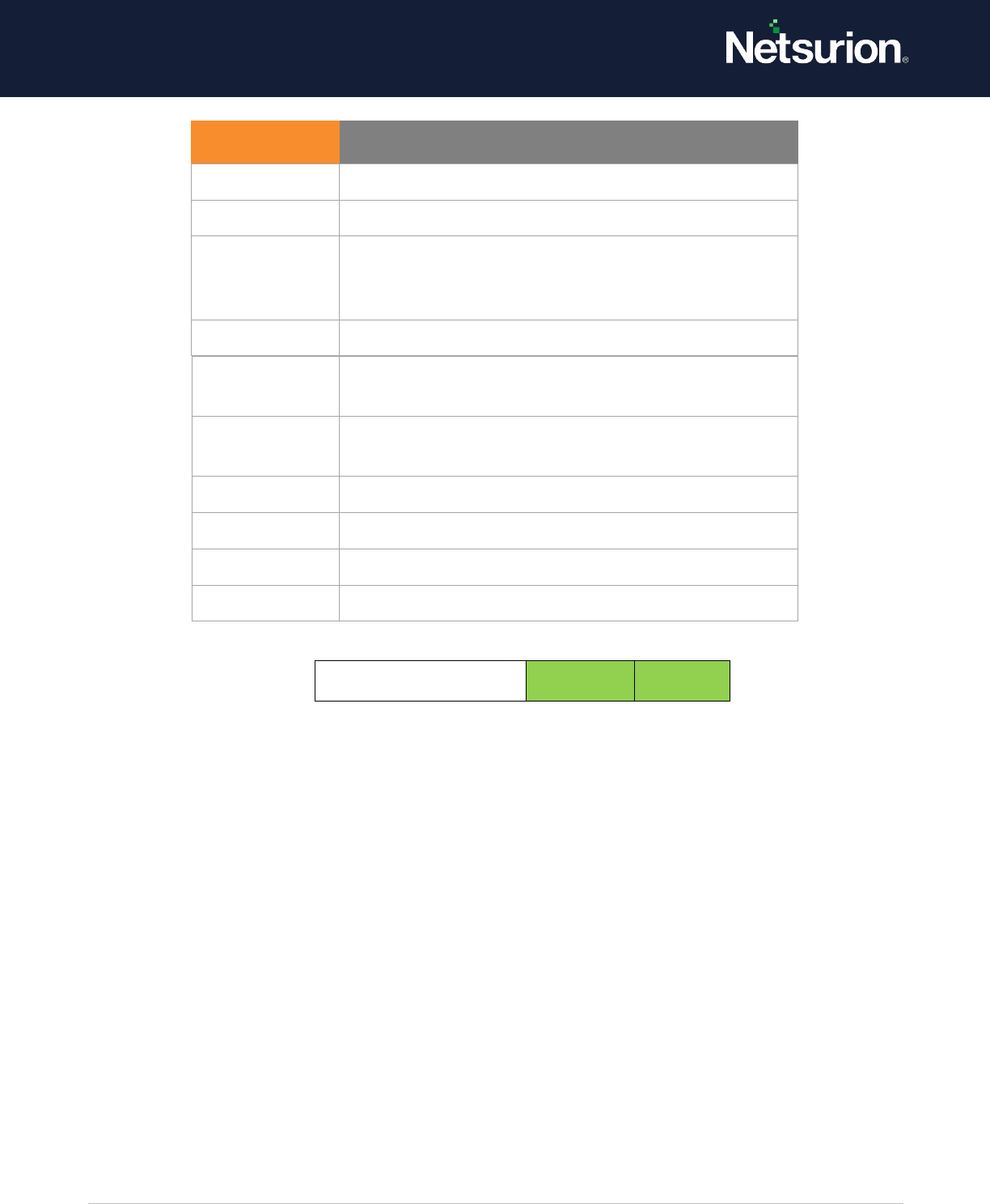
© Copyright Netsurion. All Rights Reserved. 40
Audit Policy Change
Enable
Enable
7.2 Authentication Policy Change
Applies to: Windows Server 2008 onwards and Windows 7 onwards.
This security policy setting determines whether the operating system generates audit events when
changes are made to authentication policy, including:
• Creation, modification, and removal of forest and domain trusts. Windows Advanced Audit
Policy Configuration
• Changes to Kerberos policy under Computer Configuration\Windows Settings\Security
Settings\Account Policies\Kerberos Policy.
NOTE:
The audit event is logged when the policy is applied, not when settings are modified by the
administrator.
When any of the following user rights are granted to a user or group:
• Access this computer from the network
Event ID
Event Message
4715
The audit policy (SACL) on an object was changed.
4719
The system audit policy was changed.
4817
Auditing settings on an object were changed.
NOTE: Supported Operating Systems
Windows 2008 R2 onwards and Windows 7 onwards
4902
The Per-user audit policy table was created
4904
An attempt was made to register a security event
source.
4905
An attempt was made to unregister a security event
source.
4906
The CrashOnAuditFail value has changed.
4907
Auditing settings on the object were changed.
4908
Special Groups Logon table modified.
4912
Per the User Audit Policy was changed.
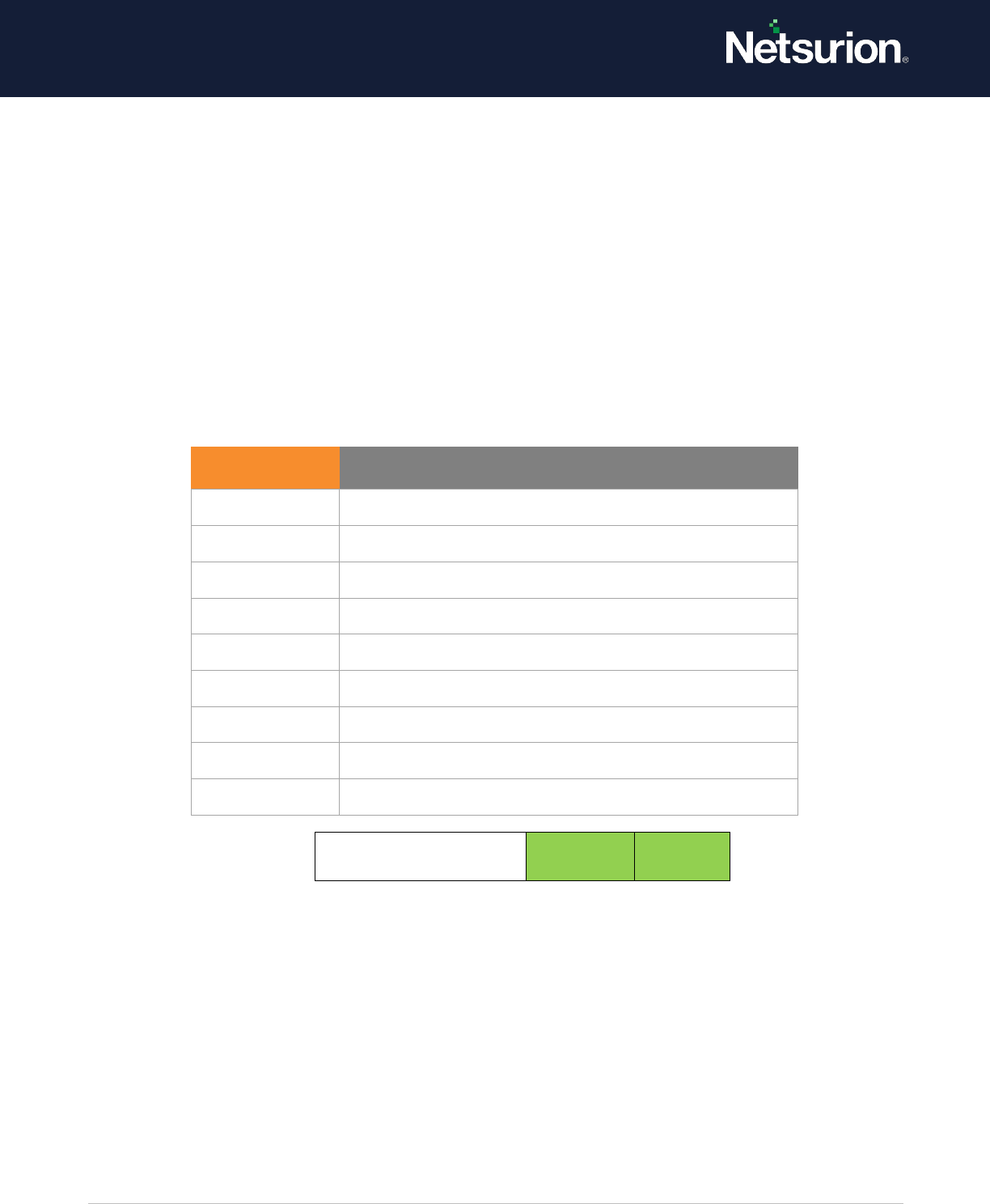
© Copyright Netsurion. All Rights Reserved. 41
• Allow logon locally
• Allow logon through Remote Desktop
• Logon as a batch job
• Logon as a service
• Namespace collision, such as when an added trust collides with an existing namespace name.
This setting is useful for tracking changes in domain and forest level trust and privileges granted to user
accounts or groups.
Event volume: Low
Default: Success
Authentication Policy
Change
Enable
Enable
7.3 Authorization Policy Change
Applies to: Windows Server 2008 onwards and Windows 7 onwards.
This security policy setting determines whether the operating system generates audit events when the
following changes are made to the authorization policy:
• Assigning or removing of user rights (privileges) such as SeCreateTokenPrivilege, except for the
system access rights that are audited by using the Audit Authentication Policy Change
subcategory.
• Changing the Encrypting File System (EFS) policy.
Event ID
Event Message
4713
The Kerberos policy was changed.
4716
Trusted domain information was modified.
4717
System security access was granted to an account.
4718
System security access was removed from an account.
4739
The Domain Policy was changed.
4864
A namespace collision was detected.
4865
A trusted forest information entry was added.
4866
A trusted forest information entry was removed.
4867
A trusted forest information entry was modified
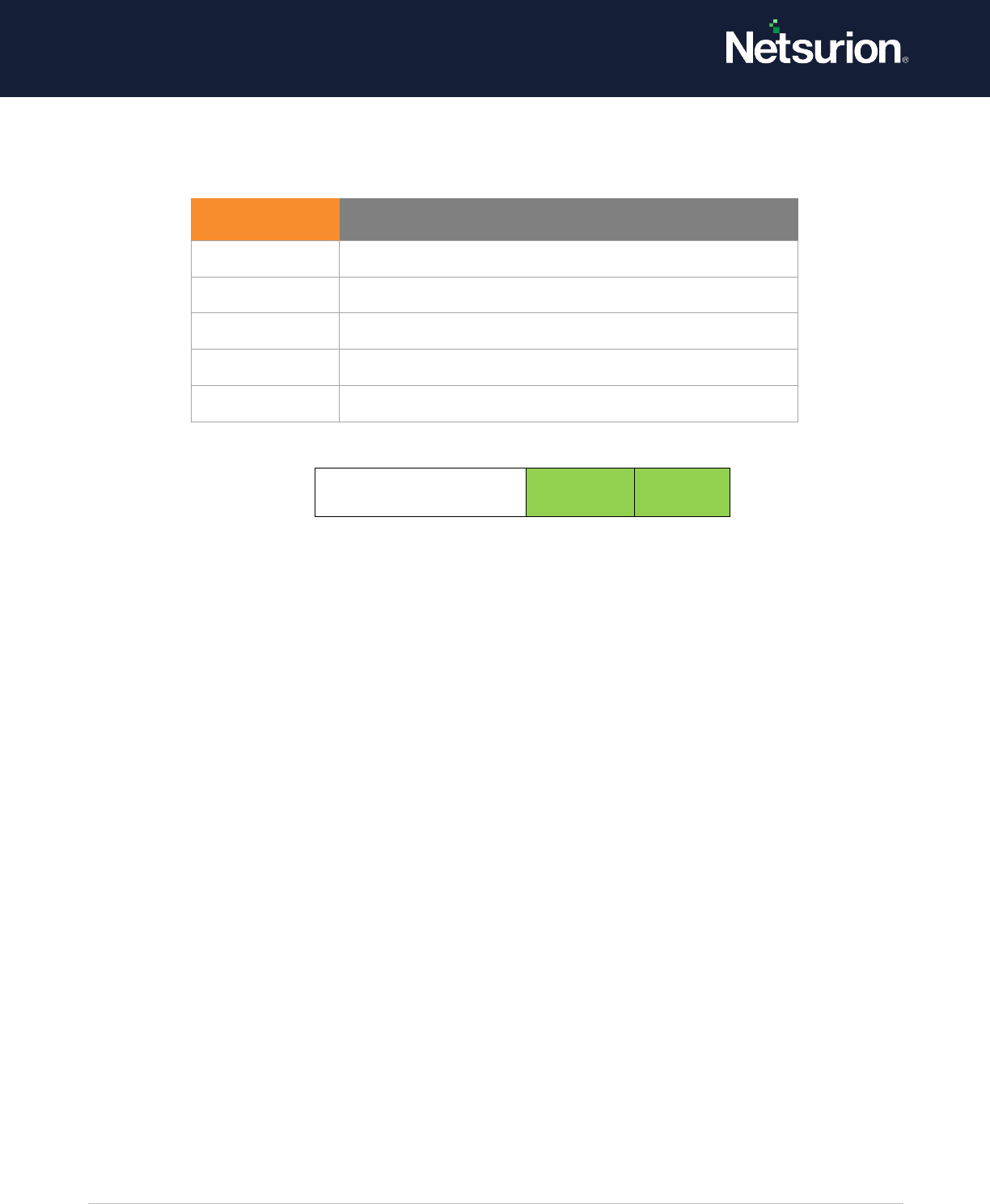
© Copyright Netsurion. All Rights Reserved. 42
Event volume: Low
Default: Not configured
Authentication Policy
Change
Enable
Enable
7.4 Filtering Platform Policy Change
Applies to: Windows Server 2008 onwards and Windows 7 onwards.
This security policy setting determines whether the operating system generates audit events for:
• IPsec services status.
• Changes to IPsec settings.
• Status and changes to the Windows Filtering Platform engine and providers.
• IPsec Policy Agent service activities.
Event volume: Low
Default: Not configured
Event ID
Event Message
4704
A user right was assigned.
4705
A user right was removed.
4706
A new trust was created to a domain
4707
Trust in a domain was removed.
4714
Encrypted data recovery policy was changed.
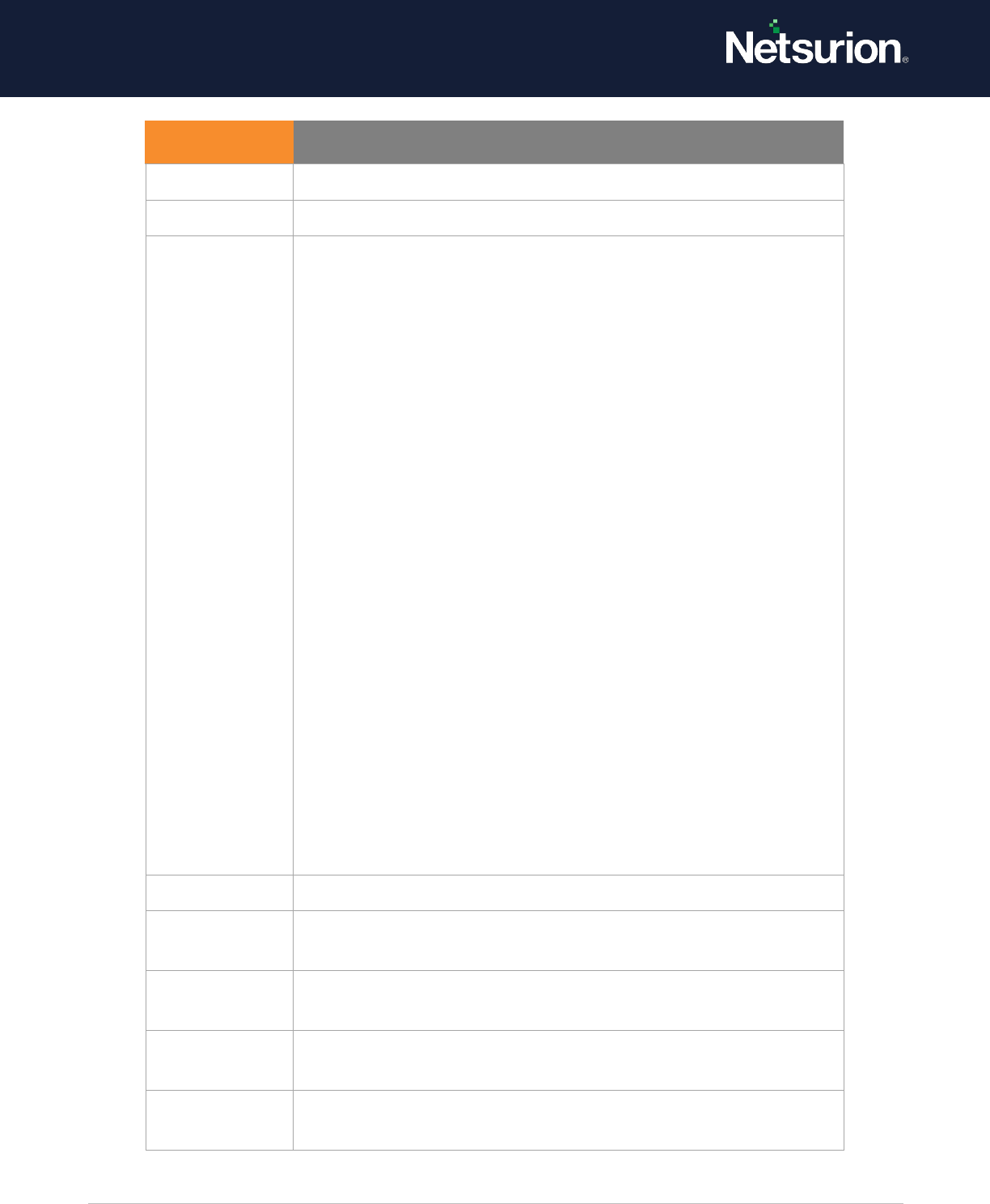
© Copyright Netsurion. All Rights Reserved. 43
Event ID
Event Message
4709
IPsec Services was started.
4710
IPsec Services were disabled.
4711
May contain any one of the following:
• PAStore Engine applied a locally cached copy of Active
Directory storage IPsec policy on the computer.
• PAStore Engine applied Active Directory storage IPsec policy
on the computer.
• PAStore Engine applied local registry storage IPsec policy on
the computer.
• PAStore Engine failed to apply a locally cached copy of Active
Directory storage IPsec policy on the computer.
• PAStore Engine failed to apply Active Directory storage IPsec
policy on the computer.
• PAStore Engine failed to apply local registry storage IPsec
policy on the computer.
• PAStore Engine failed to apply some rules of the active IPsec
policy on the computer.
• PAStore Engine failed to load directory storage IPsec policy
on the computer.
• PAStore Engine loaded directory storage IPsec policy on the
computer.
• PAStore Engine failed to load local storage IPsec policy on
the computer.
• PAStore Engine loaded local storage IPsec policy on the
computer.
• PAStore Engine polled for changes to the active IPsec policy
and detected no changes.
4712
IPsec Services encountered a potentially serious failure.
5040
A change has been made to IPsec settings. An Authentication Set
was added.
5041
A change has been made to IPsec settings. An Authentication Set
was modified.
5042
A change has been made to IPsec settings. An Authentication Set
was deleted.
5043
A change has been made to IPsec settings. A Connection Security
Rule was added.
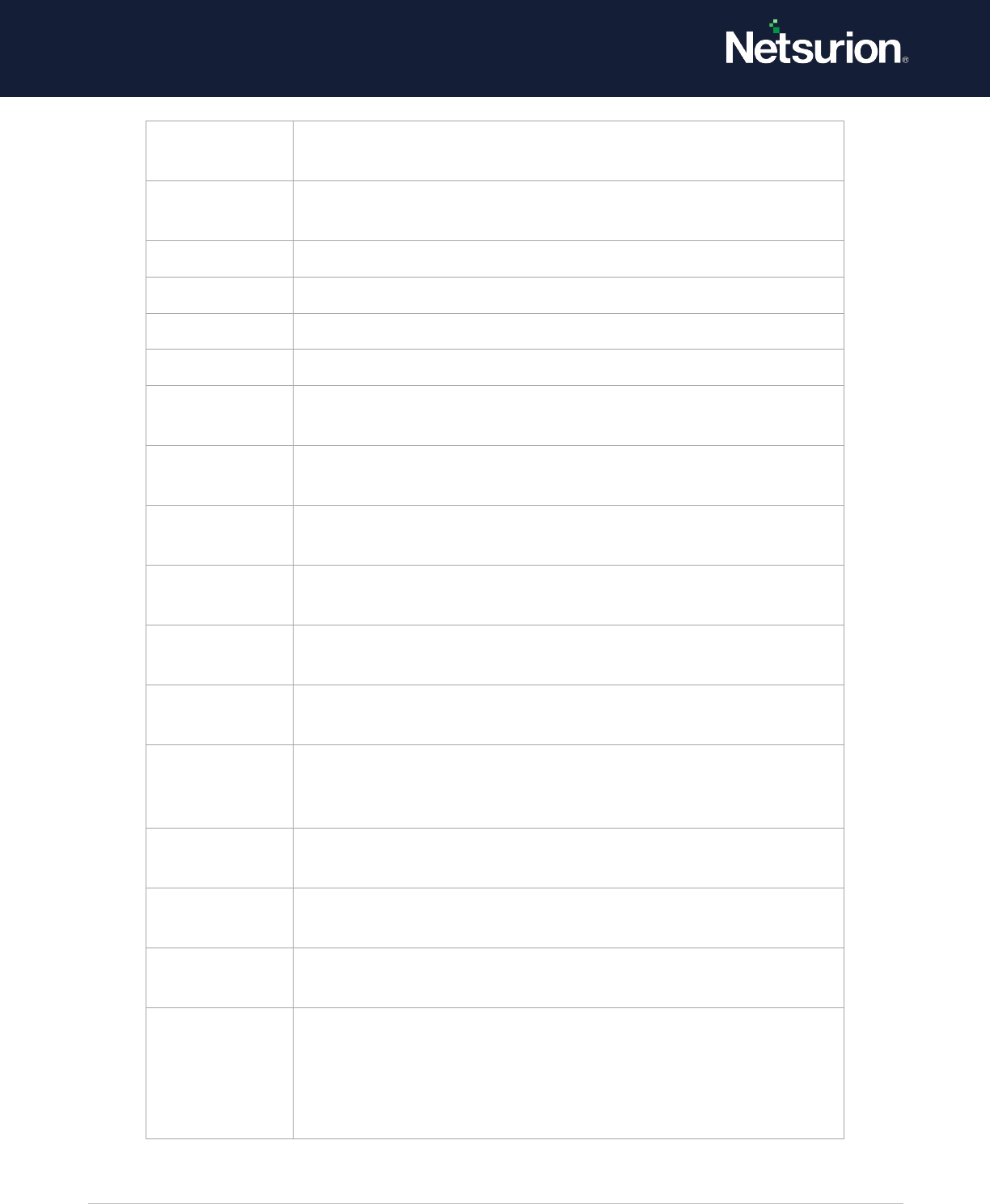
© Copyright Netsurion. All Rights Reserved. 44
5044
A change has been made to IPsec settings. A Connection Security
Rule was modified.
5045
A change has been made to IPsec settings. A Connection Security
Rule was deleted.
5046
A change has been made to IPsec settings. A Crypto Set was added.
5448
A Windows Filtering Platform provider has been changed.
5449
A Windows Filtering Platform provider context has been changed.
5450
A Windows Filtering Platform sub-layer has been changed.
5456
PAStore Engine applied Active Directory storage IPsec policy on the
computer.
5457
PAStore Engine failed to apply Active Directory storage IPsec policy
on the computer.
5458
PAStore Engine applied a locally cached copy of Active Directory
storage IPsec policy on the computer.
5459
PAStore Engine failed to apply a locally cached copy of Active
Directory storage IPsec policy on the computer.
5460
PAStore Engine applied local registry storage IPsec policy on the
computer.
5461
PAStore Engine failed to apply local registry storage IPsec policy on
the computer.
5462
PAStore Engine failed to apply some rules of the active IPsec policy
on the computer. Use the IP Security Monitor snap-in to diagnose
the problem.
5463
PAStore Engine polled for changes to the active IPsec policy and
detected no changes.
5464
PAStore Engine polled for changes to the active IPsec policy
detected changes and applied them to IPsec Services.
5465
PAStore Engine received a control for forced reloading of IPsec
policy and processed the control successfully
5466
PAStore Engine polled for changes to the Active Directory IPsec
policy determined that Active Directory cannot be reached and will
use the cached copy of the Active Directory IPsec policy instead.
Any changes made to the Active Directory IPsec policy since the
last poll could not be applied
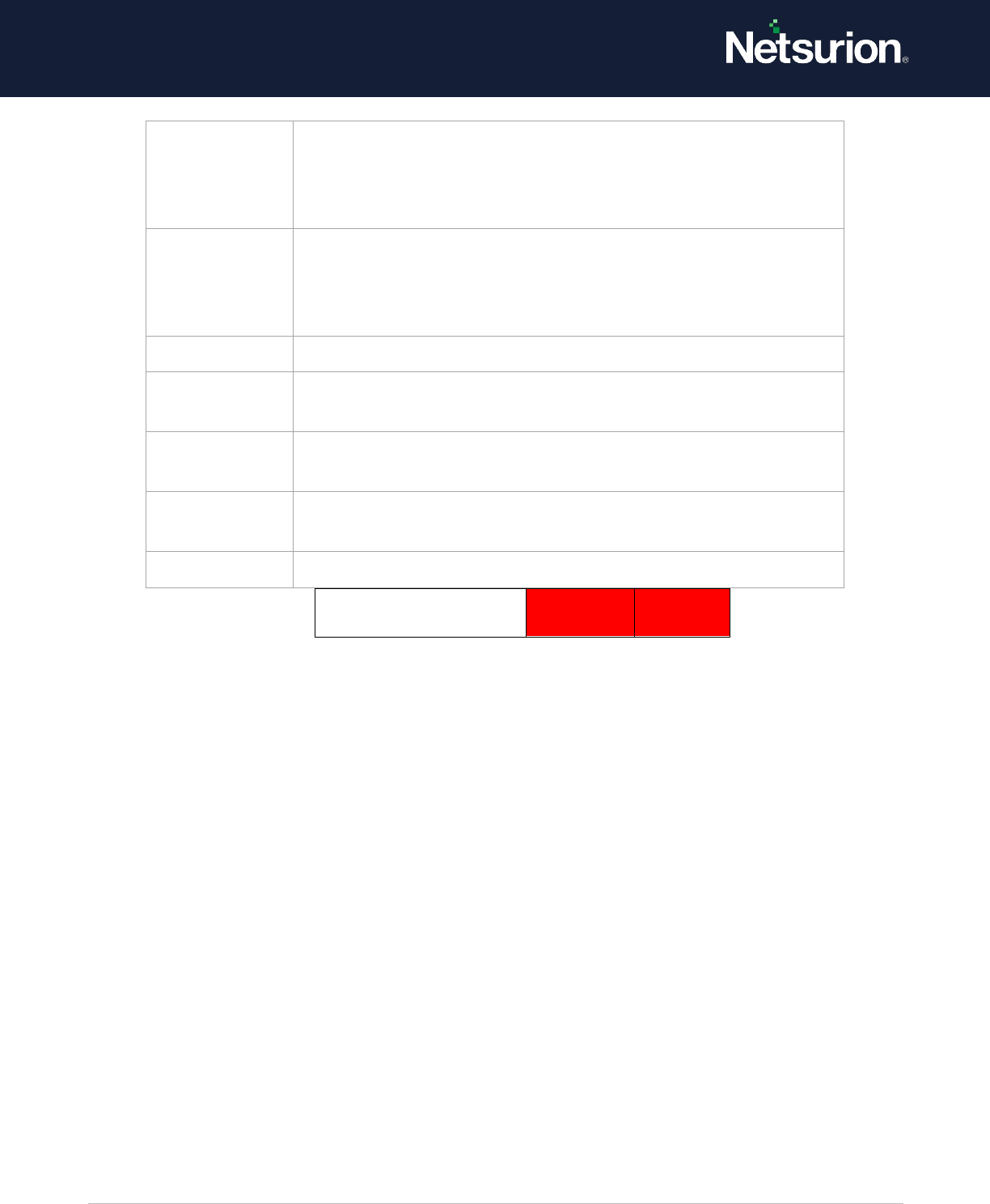
© Copyright Netsurion. All Rights Reserved. 45
Filtering Platform Policy
Change
Disable
Disable
7.5 MPSSVC Rule-Level Policy Change
Applies to: Windows Server 2008 onwards and Windows 7 onwards.
This security policy setting determines whether the operating system generates audit events when
changes are made to policy rules for the Microsoft Protection Service (MPSSVC.exe), which is used by
Windows Firewall. The tracked activities include:
• Active policies when the Windows Firewall service starts.
• Changes to Windows Firewall rules.
• Changes to the Windows Firewall exception list.
• Changes to Windows Firewall settings.
• Rules ignored or not applied by the Windows Firewall service.
• Changes to Windows Firewall Group Policy settings.
Changes to firewall rules are important to understand the security state of the computer and how well
it is protected against network attacks.
Event volume: Low.
5467
PAStore Engine polled for changes to the Active Directory IPsec
policy determined that Active Directory can be reached and found
no changes to the policy. The cached copy of the Active Directory
IPsec policy is no longer being used.
5468
PAStore Engine polled for changes to the Active Directory IPsec
policy determined that Active Directory can be reached, found
changes to the policy, and applied those changes. The cached copy
of the Active Directory IPsec policy is no longer being used.
5471
PAStore Engine loaded local storage IPsec policy on the computer.
5472
PAStore Engine failed to load local storage IPsec policy on the
computer.
5473
PAStore Engine loaded directory storage IPsec policy on the
computer.
5474
PAStore Engine failed to load directory storage IPsec policy on the
computer.
5477
PAStore Engine failed to add a quick mode filter.
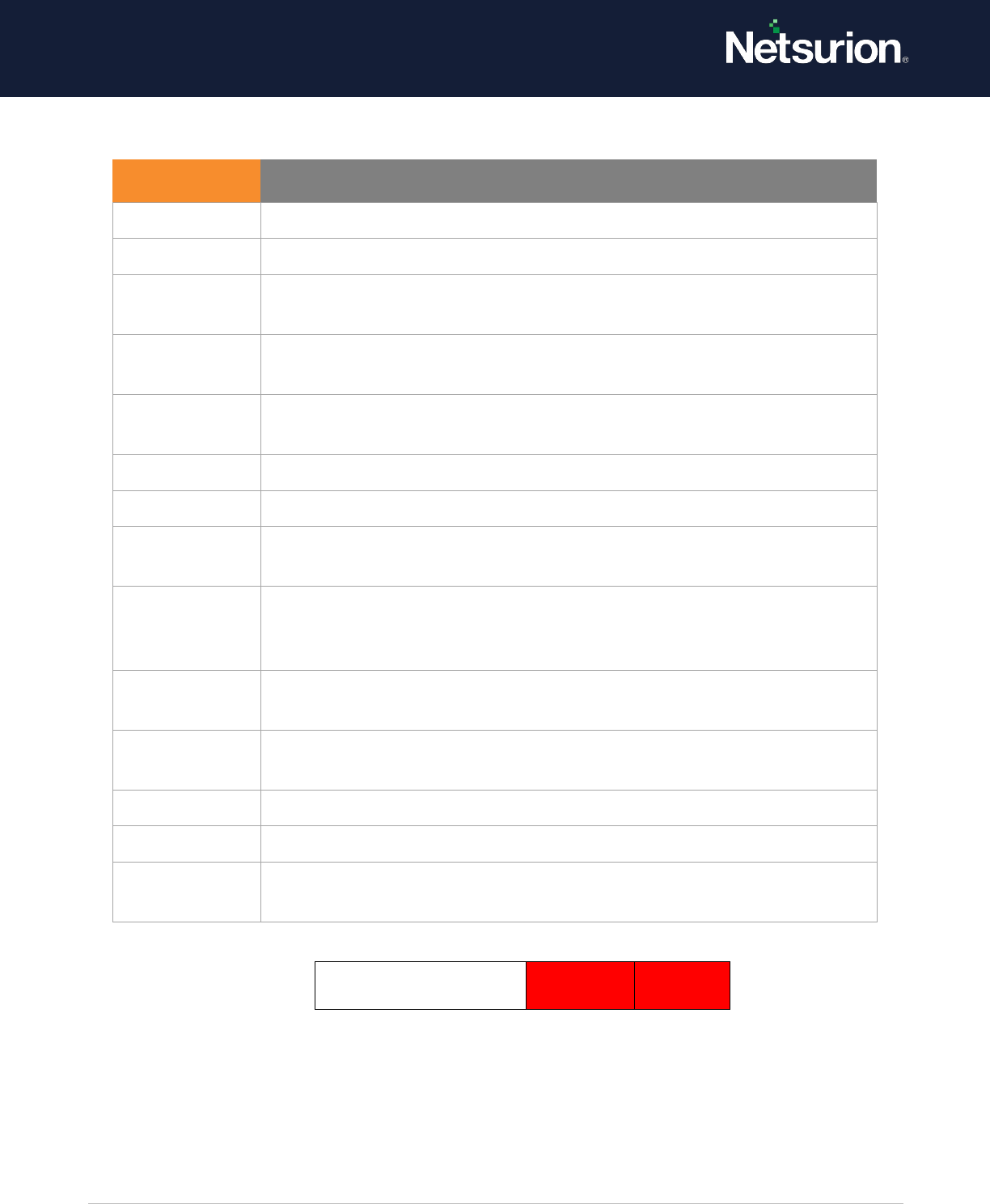
© Copyright Netsurion. All Rights Reserved. 46
Default: Not configured.
MPSSVC Rule-Level
Policy Change
Disable
Disable
7.6 Other Policy Change Events
Applies to: Windows Server 2008 onwards and Windows 7 onwards.
Event ID
Event Message
4944
The following policy was active when the Windows Firewall started.
4945
A rule was listed when the Windows Firewall started.
4946
A change has been made to the Windows Firewall exception list. A rule was
added.
4947
A change has been made to the Windows Firewall exception list. A rule was
modified.
4948
A change has been made to the Windows Firewall exception list. A rule was
deleted.
4949
Windows Firewall settings were restored to the default values.
4950
A Windows Firewall setting has changed.
4951
A rule has been ignored because its major version number was not
recognized by Windows Firewall.
4952
Parts of a rule have been ignored because its minor version number was
not recognized by Windows Firewall. The other parts of the rule will be
enforced.
4953
A rule has been ignored by Windows Firewall because it could not parse
the rule.
4954
Windows Firewall Group Policy settings have changed. The new settings
have been applied.
4956
Windows Firewall has changed the active profile
4957
Windows Firewall did not apply the following rule.
4958
Windows Firewall did not apply the following rule because the rule referred
to items not configured on this computer.
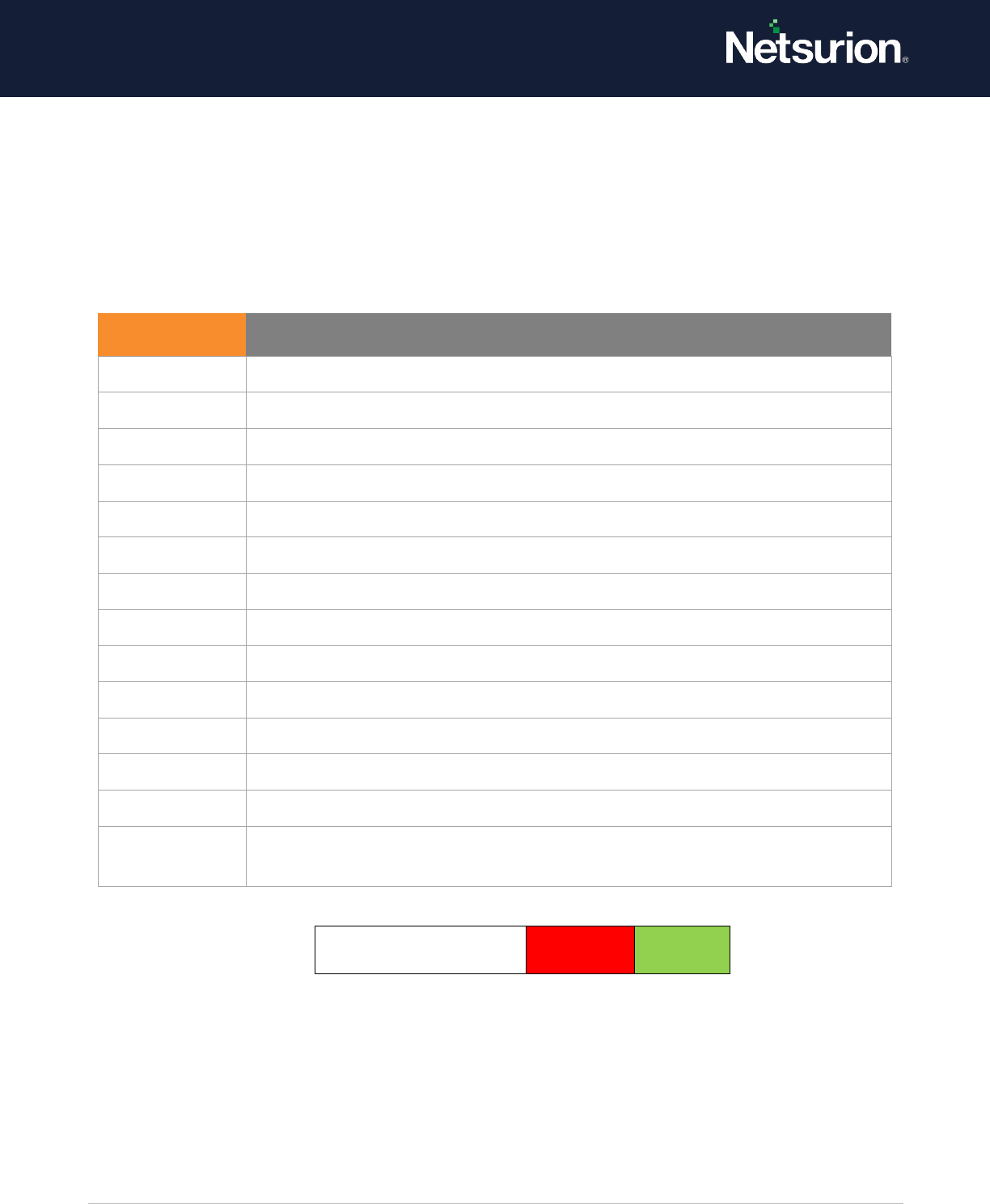
© Copyright Netsurion. All Rights Reserved. 47
This security policy setting determines whether the operating system generates events for security
policy changes that are not otherwise audited in the Policy Change category, such as the following: •
Trusted Platform Module (TPM) configuration changes. • Kernel-mode cryptographic self-tests. •
Cryptographic provider operations. • Cryptographic context operations or modifications
Event volume: Low
Default: Not configured
Other Policy Change
Events
Disable
Enable
8. Privilege Use
Privileges on a network are granted for users or computers to completed defined tasks. Privilege Use
security policy settings and audit events allow you to track the use of certain privileges on one or more
systems.
Event ID
Event Message
4670
Permissions on an object were changed.
4909
The local policy settings for the TBS were changed.
4910
The group policy settings for the TBS were changed.
5063
A cryptographic provider operation was attempted.
5064
A cryptographic context operation was attempted.
5065
A cryptographic context modification was attempted.
5066
A cryptographic function operation was attempted.
5067
A cryptographic function modification was attempted.
5068
A cryptographic function provider operation was attempted.
5069
A cryptographic function property operation was attempted.
5070
A cryptographic function property modification was attempted.
5447
A Windows Filtering Platform filter has been changed.
6144
Security policy in the group policy objects has been applied successfully.
6145
One or more errors occurred while processing the security policy in group
policy objects.

© Copyright Netsurion. All Rights Reserved. 48
8.1 Non-Sensitive Privilege Use
Applies to: Windows Server 2008 onwards and Windows 7 onwards.
This security policy setting allows you to audit events generated using non-sensitive privileges (user
rights).
The following privileges are non-sensitive:
• Access Credential Manager as a trusted caller.
• Access this computer from the network.
• Add workstations to the domain.
• Adjust memory quotas for a process.
• Allow log on locally, allow log on through Terminal Services.
• Bypass traverse checking.
• Change the system time.
• Create a page file.
• Create global objects.
• Create permanent shared objects.
• Create symbolic links.
• Deny access to this computer from the network.
• Deny log on as a batch job.
• Deny log on as a service.
• Deny log on locally.
• Deny log on through Terminal Services.
• Force shutdown from a remote system.
• Increase a process working set.
• Increase scheduling priority.
• Lock pages in memory.
• Log on as a batch job.
• Log on as a service.
• Modify an object label.
• Perform volume maintenance tasks.
• Profile single process.
• Profile system performance.
• Unplug the computer from the docking station.
• Shut down the system.
• Synchronize directory service data.
Event volume: Very high
Default: Not configured
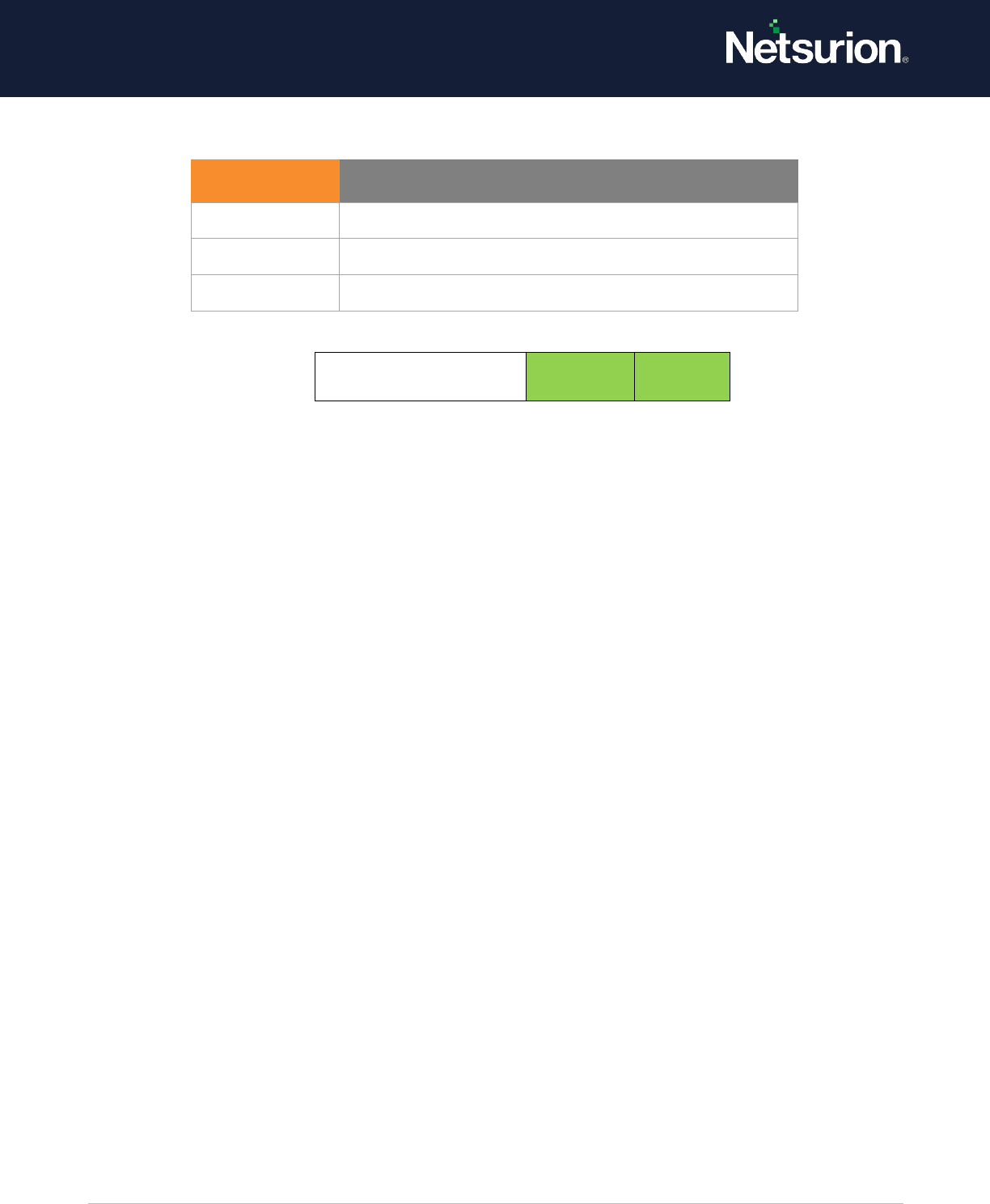
© Copyright Netsurion. All Rights Reserved. 49
Non-Sensitive Privilege
Use
Enable
Enable
8.2 Sensitive Privilege Use
Applies to: Windows Server 2008 onwards and Windows 7 onwards.
This security policy setting allows you to audit events generated when sensitive privileges (user rights)
such as the following are used:
A privileged service is called.
One of the following privileges are called:
• Act as part of the operating system
• Back up files and directories
• Create a token object
• Debug programs
• Enable computer and user accounts to be trusted for delegation
• Generate security audits
• Impersonate a client after authentication
• Load and unload device drivers
• Manage auditing and security log
• Modify firmware environment values
• Replace a process-level token
• Restore files and directories
• Take ownership of files or other objects
Event volume: Very high
Default: Not configured
Event ID
Event Message
4672
Special privileges assigned to new logon.
4673
A privileged service was called.
4674
An operation was attempted on a privileged object.

© Copyright Netsurion. All Rights Reserved. 50
Sensitive Privilege Use
Enable
Enable
8.3 Other Privilege Use Events
Applies to: Windows Server 2008 onwards and Windows 7 onwards.
This security policy setting is not used in this version of Windows
Event volume: N/A
Other Privilege Use
Events
Enable
Enable
9. System
System security policy settings and audit events allow you to track system-level changes to a computer
that is not included in other categories and that have potential security implications.
9.1 IPSEC Driver
Applies to: Windows Server 2008 onwards and Windows 7 onwards.
This security policy setting determines whether the operating system audits the activities of the IPsec
driver and reports any of the following events:
• Startup and shutdown of IPsec services.
• Packets dropped due to integrity check failure.
• Packets dropped due to replay check failure.
• Packets dropped due to being in plaintext.
• Packets received with an incorrect Security Parameter Index (SPI). (This can indicate
malfunctioning hardware or interoperability problems.)
• Failure to process IPsec filters.
• A high rate of packet drops by the IPsec filter driver may indicate attempts to gain access to the
network by unauthorized systems.
Event ID
Event Message
4672
Special privileges assigned to new logon.
4673
A privileged service was called.
4674
An operation was attempted on a privileged object.

© Copyright Netsurion. All Rights Reserved. 51
• Failure to process IPsec filters poses a potential security risk because some network interfaces
may not get the protection provided by the IPsec filter.
Event volume: Medium
Default: Not configured
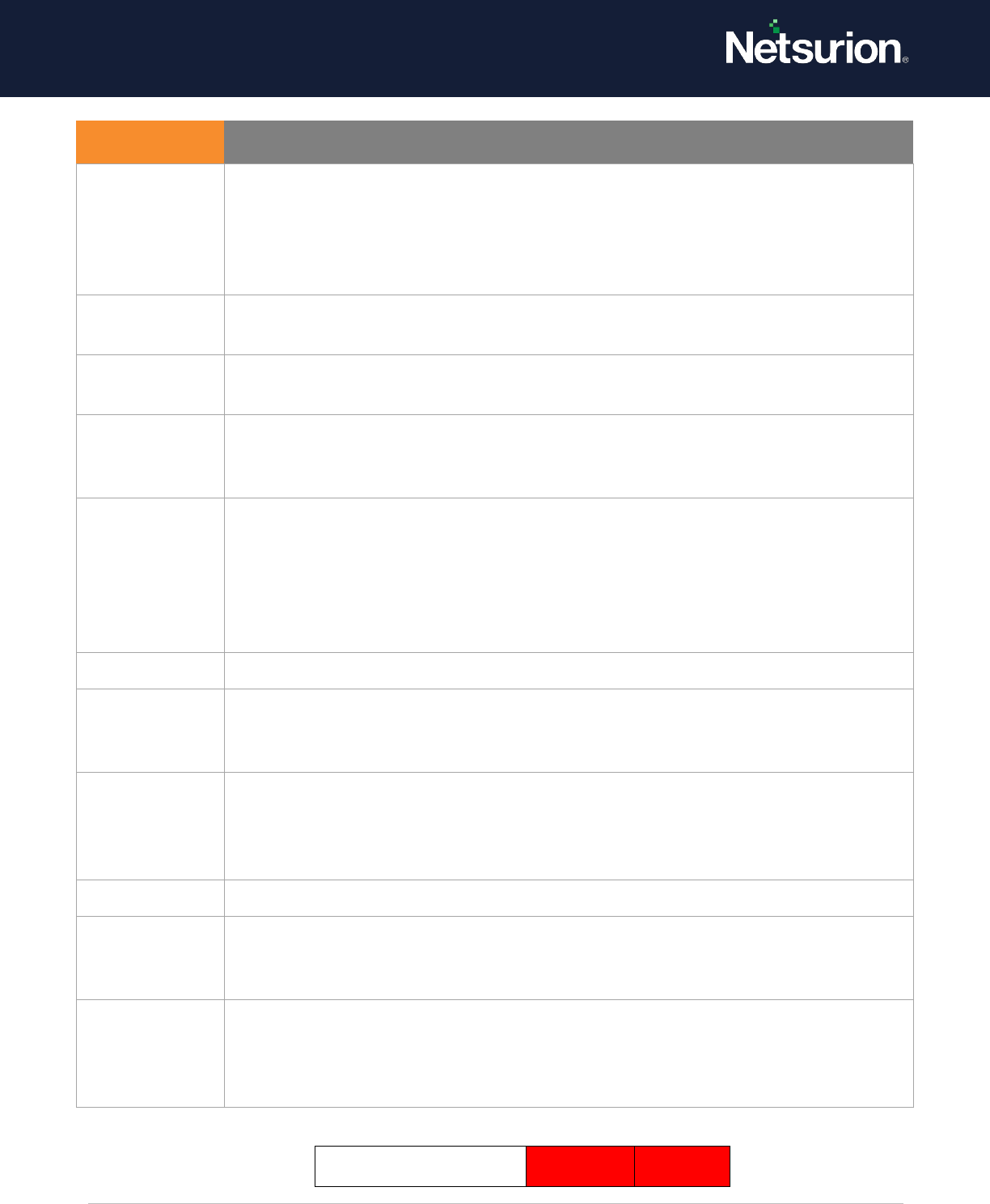
© Copyright Netsurion. All Rights Reserved. 52
Ipsec Driver
Disable
Disable
Event ID
Event Message
4960
IPsec dropped an inbound packet that failed an integrity check. If this problem
persists, it could indicate a network issue, or those packets are being modified in
transit to this computer. Verify that the packets sent from the remote computer are
the same as those received by this computer. This error might also indicate
interoperability problems with other IPsec implementations
4961
IPsec dropped an inbound packet that failed a replay check. If this problem persists,
it could indicate a replay attack against this computer.
4962
IPsec dropped an inbound packet that failed a replay check. The inbound packet had
too low a sequence number to ensure it was not a replay.
4963
IPsec dropped an inbound clear text packet that should have been secured. This is
usually due to the remote computer changing its IPsec policy without informing this
computer. This could also be a spoofing attack attempt.
4965
IPsec received a packet from a remote computer with an incorrect Security
Parameter Index (SPI). This is usually caused by malfunctioning hardware that is
corrupting packets. If these errors persist, verify that the packets sent from the
remote computer are the same as those received by this computer. This error may
also indicate interoperability problems with other IPsec implementations. In that
case, if connectivity is not impeded, then these events can be ignored.
5478
IPsec Services have started successfully.
5479
IPsec Services have been shut down successfully. The shutdown of IPsec Services can
put the computer at greater risk of network attack or expose the computer to
potential security risks.
5480
IPsec Services failed to get the complete list of network interfaces on the computer.
This poses a potential security risk because some of the network interfaces may not
get the protection provided by the applied IPsec filters. Use the IP Security Monitor
snap-in to diagnose the problem
5483
IPsec Services failed to initialize the RPC server. IPsec Services could not be started
5484
IPsec Services has experienced a critical failure and has been shut down. The
shutdown of IPsec Services can put the computer at greater risk of network attack or
expose the computer to potential security risks.
5485
IPsec Services failed to process some IPsec filters on a plugand-play event for
network interfaces. This poses a potential security risk because some of the network
interfaces may not get the protection provided by the applied IPsec filters. Use the
IP Security Monitor snap-in to diagnose the problem.

© Copyright Netsurion. All Rights Reserved. 53
9.2 Other System Events
Applies to: Windows Server 2008 onwards and Windows 7 onwards.
This security policy setting determines whether the operating system audits any of the following
events:
• Startup and shutdown of the Windows Firewall service and driver.
• Security policy processing by the Windows Firewall service.
• Cryptography key file and migration operations.
NOTE:
Failure to start the Windows Firewall service may result in a computer that is not fully protected
against network threats.
Event volume: Low
Default: Success and failure
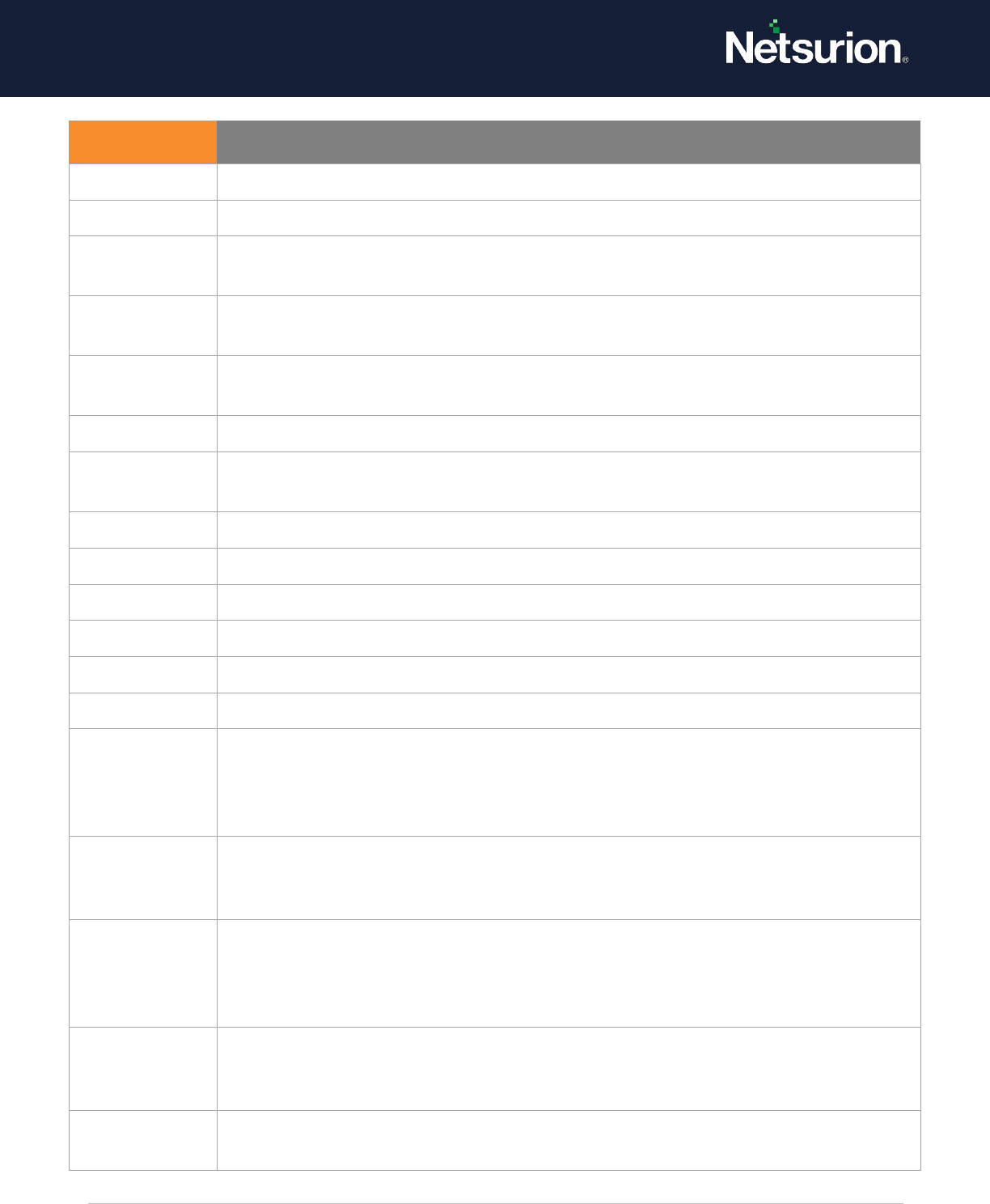
© Copyright Netsurion. All Rights Reserved. 54
Event ID
Event Message
5024
The Windows Firewall Service has started successfully.
5025
The Windows Firewall Service has been stopped.
5027
The Windows Firewall Service was unable to retrieve the security policy from the local
storage. The service will continue enforcing the current policy.
5028
The Windows Firewall Service was unable to parse the new security policy. The service
will continue with the currently enforced policy.
5029
The Windows Firewall Service failed to initialize the driver. The service will continue to
enforce the current policy.
5030
The Windows Firewall Service failed to start.
5032
Windows Firewall was unable to notify the user that it blocked an application from
accepting incoming connections on the network.
5033
The Windows Firewall Driver has started successfully.
5034
The Windows Firewall Driver has been stopped.
5035
The Windows Firewall Driver failed to start.
5037
The Windows Firewall Driver detected critical runtime error. Terminating.
5058
Key file operation.
5059
Key migration operation.
6400
BranchCache: Received an incorrectly formatted response while discovering the
availability of content.
NOTE: Supported Operating Systems
Windows 2008 R2 onwards and Windows 7 onwards.
6401
BranchCache: Received invalid data from a peer. Data discarded.
NOTE: Supported Operating Systems
Windows 2008 R2 onwards and Windows 7 onwards.
6402
BranchCache: The message to the hosted cache offering its data is incorrectly
formatted.
NOTE: Supported Operating Systems
Windows 2008 R2 onwards and Windows 7 onwards.
6403
BranchCache: The hosted cache sent an incorrectly formatted response to the client.
NOTE: Supported Operating Systems
Windows 2008 R2 onwards and Windows 7 onwards.
6404
BranchCache: Hosted cache could not be authenticated using the provisioned SSL
certificate.
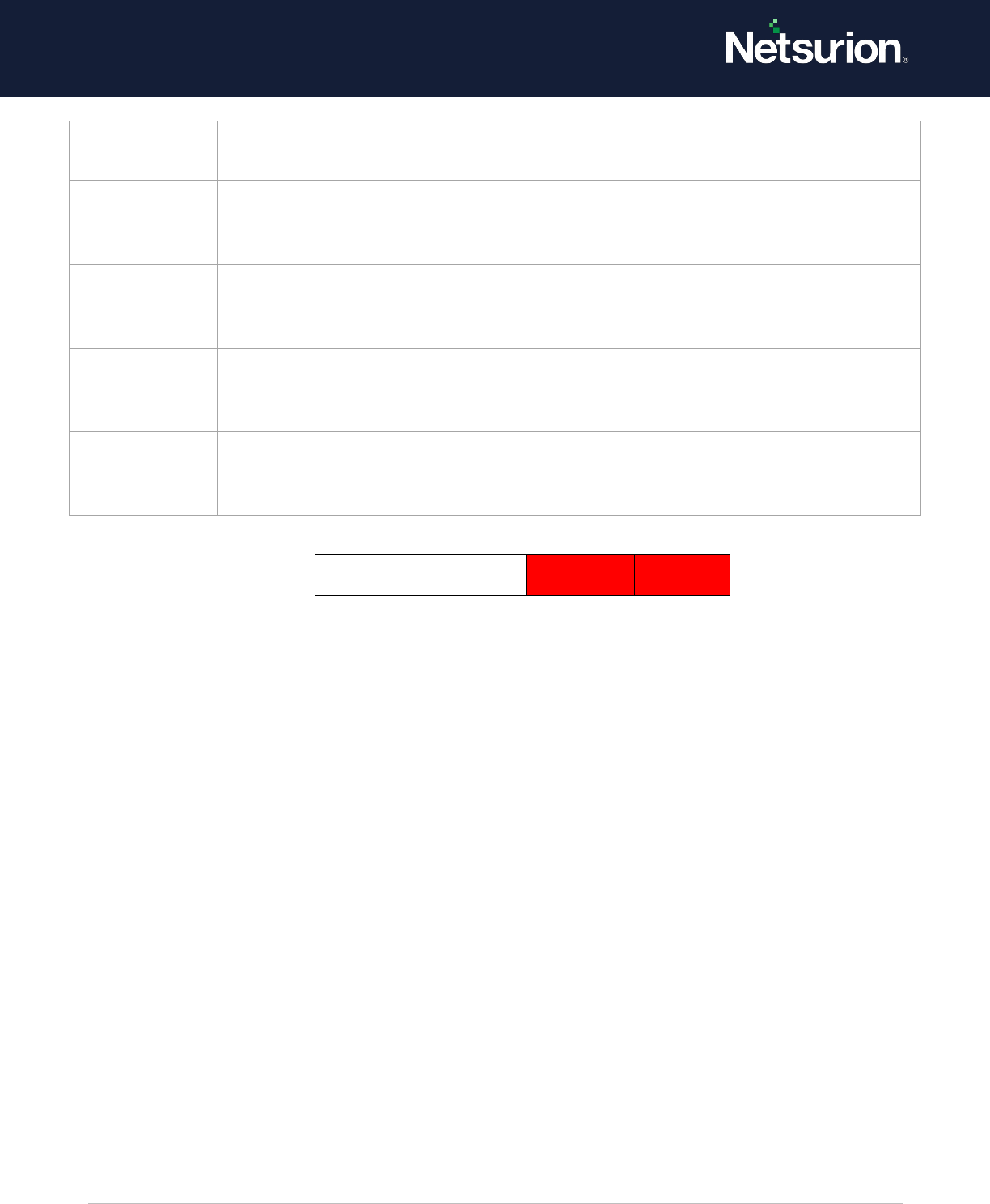
© Copyright Netsurion. All Rights Reserved. 55
Other System Events
Disable
Disable
9.3 Security State Change
Applies to: Windows Server 2008 onwards and Windows 7 onwards.
This security policy setting determines whether the operating system audits changes in the security
state of a system and reports any of the following events:
• System startup and shutdown.
• Change of system time.
• System recovery from CrashOnAuditFail. This event is logged after a system reboots following
CrashOnAuditFail.
NOTE:
Some auditable activity may not be recorded when a system reboots due to CrashOnAuditFail.
System startup and shutdown events are important to understand system usage.
Event volume: Low
Default: Success
NOTE: Supported Operating Systems
Windows 2008 R2 onwards and Windows 7 onwards.
6405
BranchCache: %2 instance(s) of Event ID %1 occurred.
NOTE: Supported Operating Systems
Windows 2008 R2 onwards and Windows 7 onwards.
6406
%1 registered to Windows Firewall to control filtering for the following: %2
NOTE: Supported Operating Systems
Windows 2008 R2 onwards and Windows 7 onwards.
6407
1%
NOTE: Supported Operating Systems
Windows 2008 R2 onwards and Windows 7 onwards.
6408
Registered product %1 failed, and Windows Firewall is now controlling filtering for %2
NOTE: Supported Operating Systems
Windows 2008 R2 onwards and Windows 7 onwards
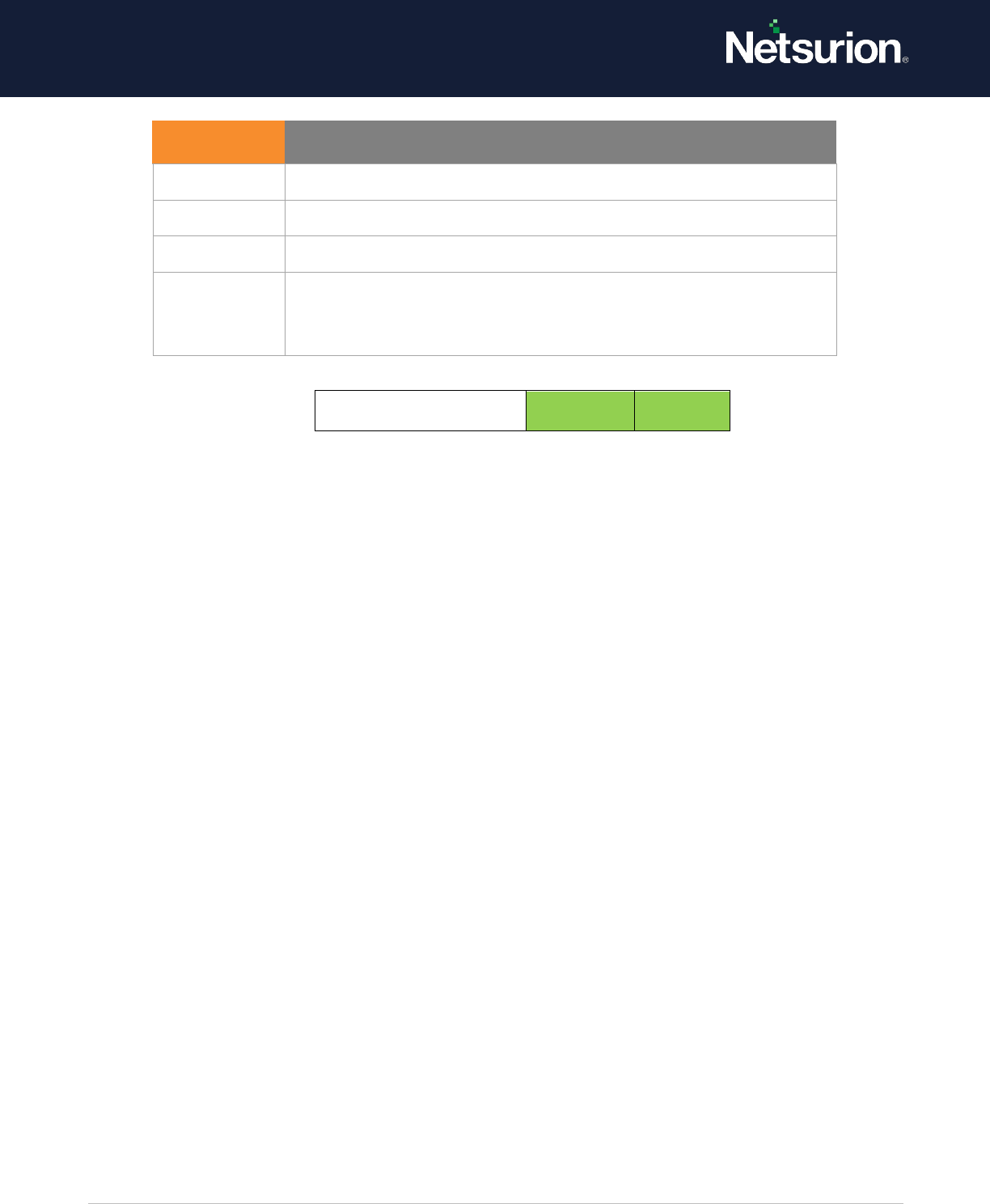
© Copyright Netsurion. All Rights Reserved. 56
Security State Change
Enable
Enable
9.4 Security System Extension
Applies to: Windows Server 2008 onwards and Windows 7 onwards.
This security policy setting determines whether the operating system audits events related to security
system extensions, including any of the following events:
• When a security extension code is loaded (such as authentication, notification, or security
package). A security extension code registers with the Local Security Authority and will be used
and trusted to authenticate logon attempts, submit logon requests, and be notified of any
account or password changes. Examples of this are Kerberos and NTLM.
• When a service is installed. An audit log is generated when a service is registered with the Service
Control Manager. The audit log contains information about the service name, binary, type, start
type, and service account
NOTE:
Attempts to install or load security system extensions or services are critical system events that could
indicate a security breach.
Event volume: Low
These events are expected to appear more on a domain controller than on client computers or
member servers.
Default: Not configured
Event ID
Event Message
4608
Windows is starting up.
4609
Windows is shutting down.
4616
The system time was changed.
4621
The administrator recovered the system from CrashOnAuditFail.
Users who are not administrators will now be allowed to log on.
Some auditable activity might not have been recorded.
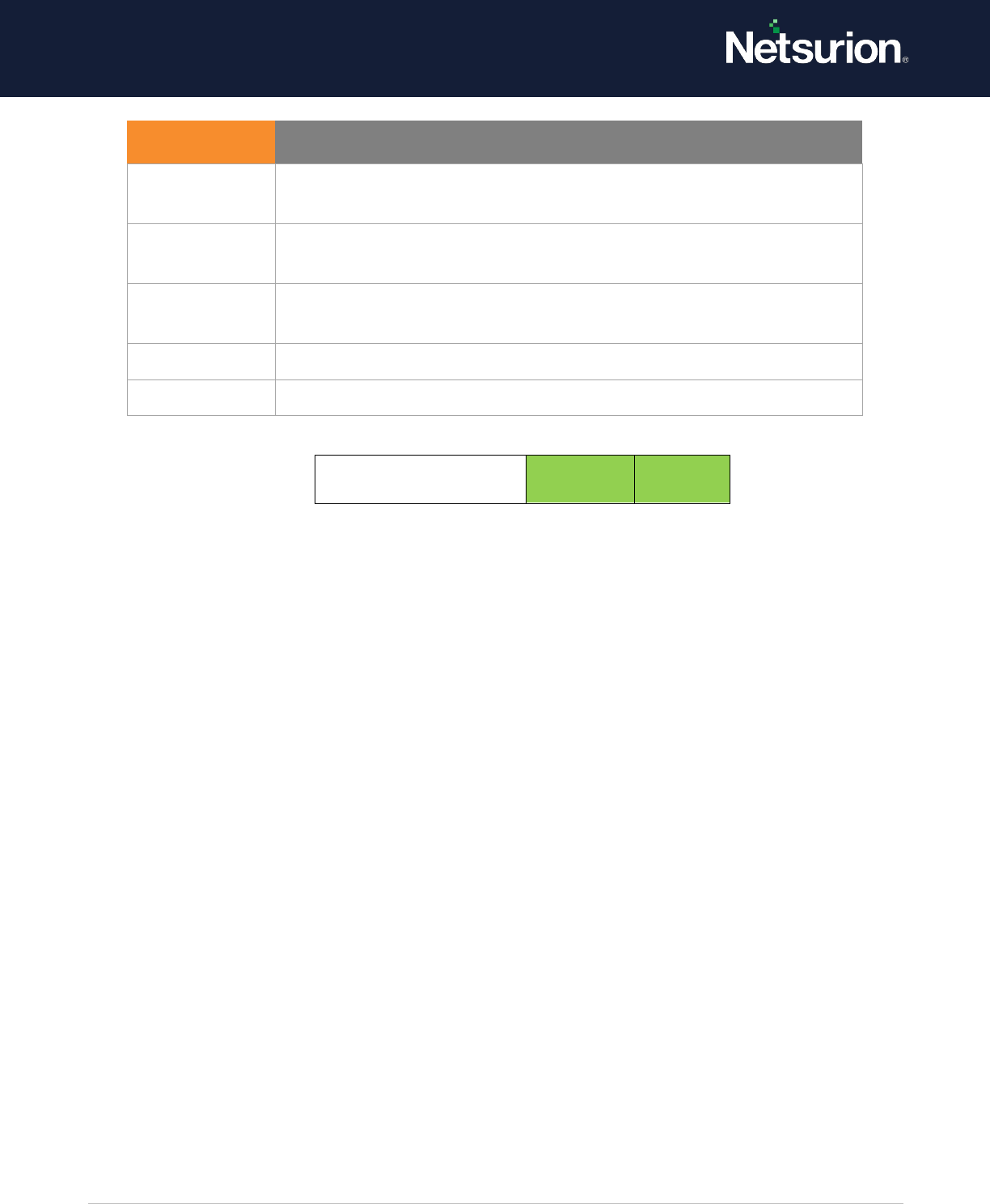
© Copyright Netsurion. All Rights Reserved. 57
Security System
Extension
Enable
Enable
9.5 Security System Integrity
Applies to: Windows Server 2008 onwards and Windows 7 onwards.
This security policy setting determines whether the operating system audits events that violate the
integrity of the security subsystem, which can include any of the following events:
• Audited events are lost due to a failure of the auditing system.
• A process uses an invalid local procedure call (LPC) port to impersonate a client, reply to a client
address space, read to a client address space, or write from a client address space.
• A remote procedure call (RPC) integrity violation is detected.
• A code integrity violation with an invalid hash value of an executable file is detected. • The
cryptographic tasks are performed.
NOTE:
Violations of security subsystem integrity are critical and could indicate a potential security attack.
Event volume: Low
Default: Success and failure
Event ID
Event Message
4610
An authentication package has been loaded by the Local Security
Authority.
4611
A trusted logon process has been registered with the Local Security
Authority.
4614
A notification package has been loaded by the Security Account
Manager.
4622
A security package has been loaded by the Local Security Authority.
4697
A service was installed in the system.
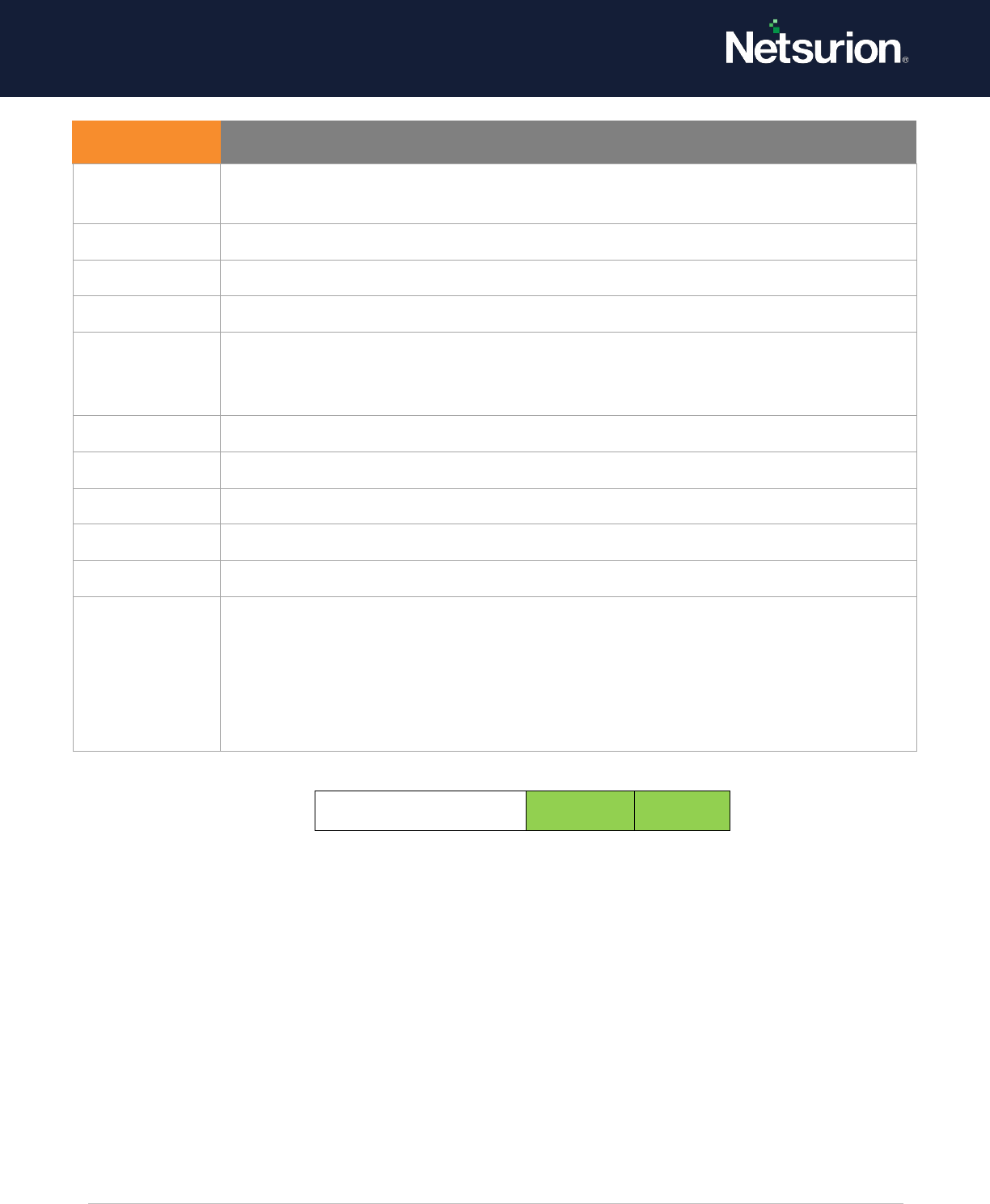
© Copyright Netsurion. All Rights Reserved. 58
System Integrity
Enable
Enable
Event ID
Event Message
4612
Internal resources allocated for the queuing of audit messages have been exhausted,
leading to the loss of some audits.
4615
Invalid use of LPC port.
4618
A monitored security event pattern has occurred.
4816
RPC detected an integrity violation while decrypting an incoming message.
5038
Code integrity determined that the image hash of a file is not valid. The file could be
corrupt due to unauthorized modification or the invalid hash could indicate a
potential disk device error.
5056
A cryptographic self-test was performed.
5057
Cryptographic primitive operation failed.
5060
The verification operation failed.
5061
Cryptographic operation.
5062
A kernel-mode cryptographic self-test was performed.
6281
Code Integrity determined that the page hashes of an image file are not valid. The file
could be improperly signed without page hashes or corrupt due to unauthorized
modification. The invalid hashes could indicate a potential disk device error.
NOTE: Supported Operating Systems
Windows 2008 R2 onwards and Windows 7 onwards
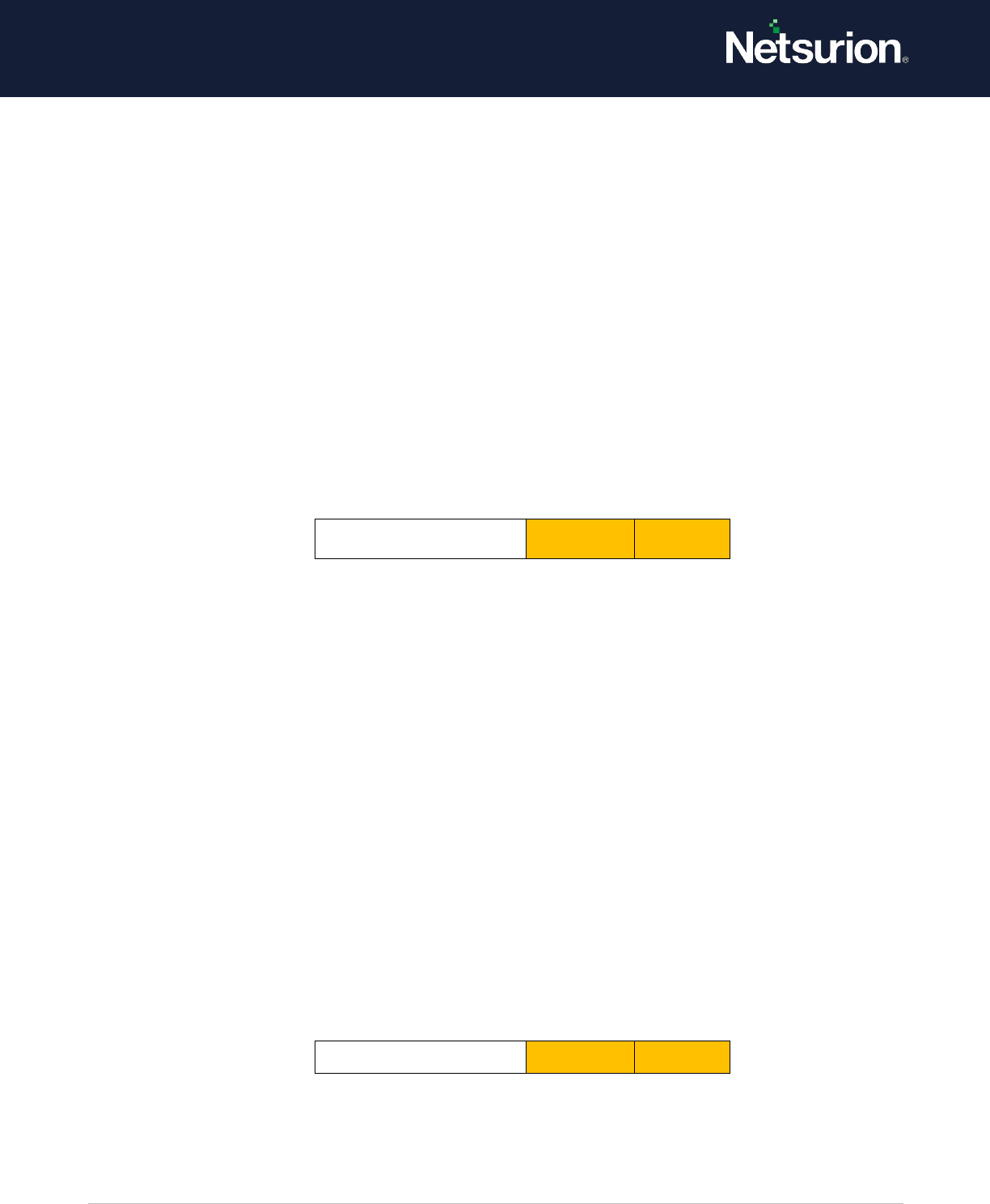
© Copyright Netsurion. All Rights Reserved. 59
10. Global Object Access Auditing
System security policy settings and audit events allow you to track system-level changes to a computer
that is not included in other categories and that have potential security implications.
10.1 Registry (GOAA)
Applies to: Windows Server 2008 onwards and Windows 7 onwards.
This security policy setting allows you to configure a global System Access Control List (SACL) on the
registry for a computer. If you select the Configure security check box, you can add a user or group to
the global SACL. This policy setting must be used in combination with the Registry security policy
setting under Object Access.
Event volume: High – Very High (Depending on the Configuration)
Default: Not Configured
Registry (GOAA)
Optional
Optional
10.2 File System (GOAA)
Applies to: Windows Server 2008 onwards and Windows 7 onwards.
This security policy setting allows you to configure a global System Access Control List (SACL) on the file
system for an entire computer. If both, file or folder SACL and a global SACL are configured on a
computer, the effective SACL is derived from combining the file or folder SACL and the global SACL.
This means that an audit event is generated if an activity matches either file or folder SACL or the
global SACL.
If you select the Configure security check box, you can add a user or group to the global SACL. This
policy setting must be used in combination with the File System security policy setting under Object
Access.
Event volume: High – Very High (Depending on the Configuration)
Default: Not Configured
Related Event ID’s 560 / 4656
File System (GOAA)
Optional
Optional
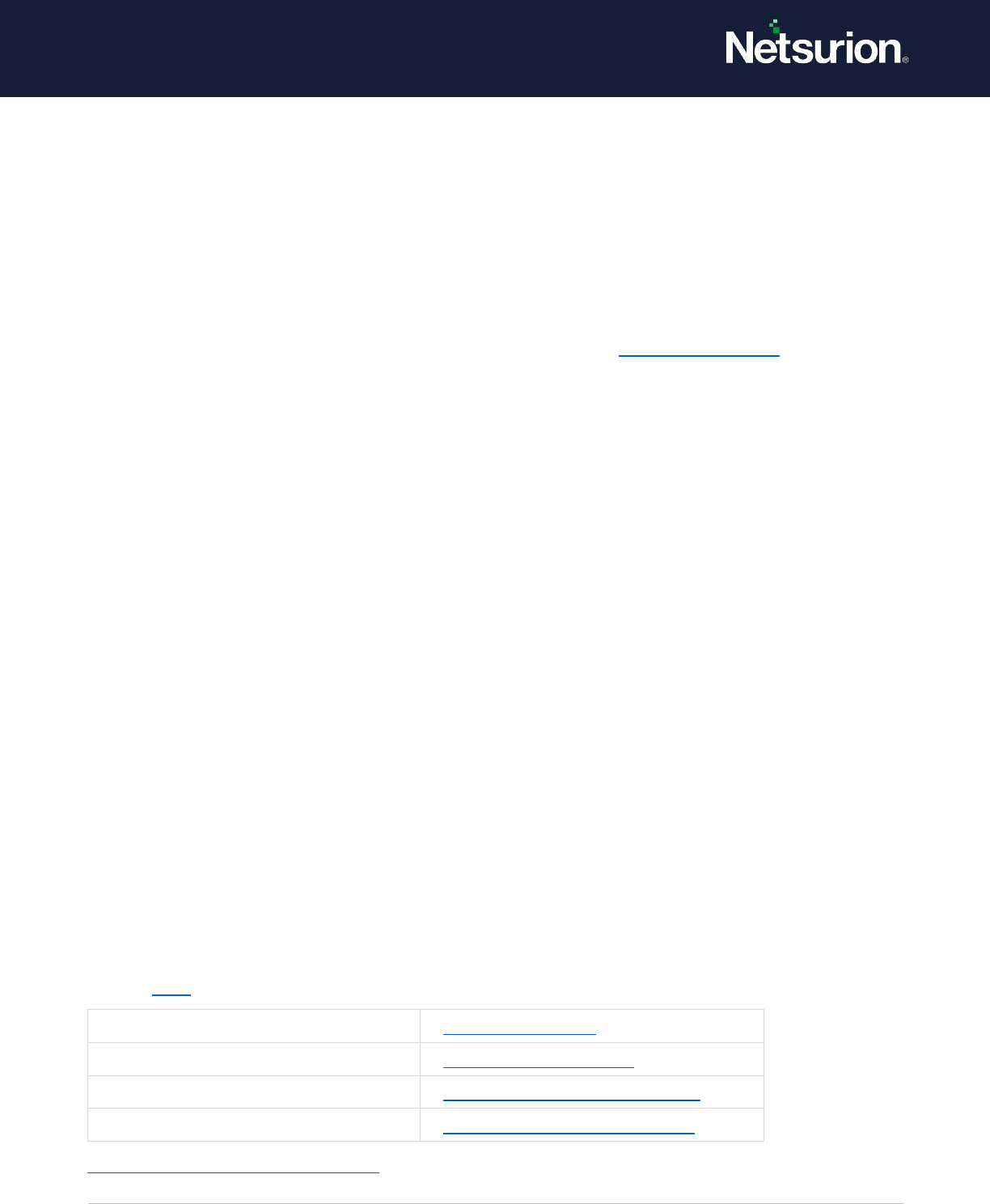
© Copyright Netsurion. All Rights Reserved. 60
About Netsurion
Netsurion
®
delivers an adaptive managed security solution that integrates our Open XDR platform with
your existing security investments and technology stack, easily scaling to fit your business
needs. Netsurion's 24x7 SOC operates as your trusted cybersecurity partner, working closely with your
IT team to strengthen your cybersecurity posture. Our solution delivers managed threat protection so
you can confidently focus on your core business.
Headquartered in Ft. Lauderdale, FL with a global team of security analysts and engineers, Netsurion is
a leader in Managed Detection & Response (MXDR). Learn more at www.netsurion.com.
Contact Us
Corporate Headquarters
Netsurion
Trade Centre South
100 W. Cypress Creek Rd
Suite 530
Fort Lauderdale, FL 33309
Contact Numbers
Use the form to submit your technical support tickets. Or reach us directly at 1 (877) 333-1433
Managed XDR Enterprise Customers
Managed XDR Enterprise MSPs
SOC-MSP@Netsurion.com
Managed XDR Essentials
Essentials-Support@Netsurion.com
Software-Only Customers
Software-Support@Netsurion.com
https://www.netsurion.com/support
